Category: Space Technology
BINARY BROWN DWARF SYSTEM
09, May 2020
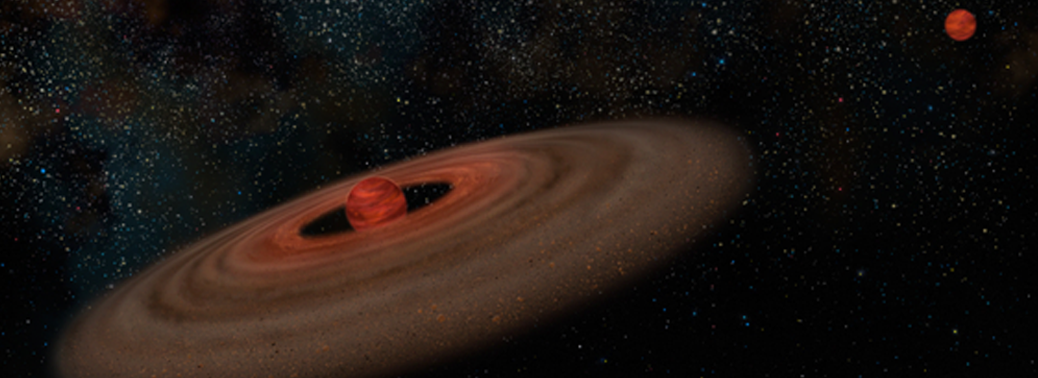
Why in News?
- A group of astrophysicists have recently found that the closest known brown dwarf, Luhman16A which shows signs of cloud bands similar to those seen on Jupiter and Saturn.
About Polarimetry:
- They used the technique of polarimetry to determine the properties of atmospheric clouds outside of the solar system.
- The concept of polarimetry technique is defined as the light emitted by a cloudy brown dwarf, or reflected off an extrasolar planet, will be polarised.
- It is the study of polarization. Polarization is a property of light that represents the direction that the light wave oscillates.
- When light is reflected off of particles it can favor a certain angle of polarization. By measuring the preferred polarization of light from a distant system, astronomers can deduce the presence of clouds.
- In case of Luhman 16A, the researchers have found the actual structure of the clouds (not only their presence).
- This technique isn’t limited to brown dwarfs. It can also be applied to exoplanets orbiting distant stars, or even stars. However, light from brown dwarfs is ideal for the study.
About Luhman 16:
- It is part of a binary system (Luhman 16) containing a second brown dwarf, Luhman 16B. This pair of brown dwarfs Luhman 16A and Luhman 16B orbit each other.
- It is situated at a distance of about 6.5 light years from the Sun and the third closest system to the Sun after Alpha Centauri and Barnard’s star.
- Despite the fact that Luhman 16A and 16B have similar masses and temperatures and presumably formed at the same time, they show markedly Different Weather.
- Luhman 16B shows no sign of stationary cloud bands, instead showing evidence of more irregular, patchy clouds.
-
- It is noticeable brightness variations as a result of its cloudy features, unlike Luhman 16A which has less brightness variation due to a band of clouds.
- Understanding the cloud system over a brown dwarf can shed light on the pressure, temperature and climate on the surface of the celestial body.

About Brown Dwarfs:
- It is also called FailedStars, because their masses are heavier than planets but lighter than stars. Due to their small masses, they are unable to sustain fusion of their hydrogen to produce energy.
- It is believed that some of the more massive brown dwarfs fuse deuterium or lithium and glow faintly.
About Binary Stars System:
- They are two Stars Orbiting a Common center of Mass.
- The brighter star is officially classified as the primary star, while the dimmer of the two is the Secondary Star.
- In cases where the stars are of equal brightness, the designation given by the discoverer is Respected.
- They are very important in astrophysics because Calculations of their orbits allow the masses of their component stars to be directly Determined, which in turn allows other stellar parameters, such as radius and density, to be Indirectly estimated.
GRAVITY RECOVERY AND CLIMATE EXPERIMENT FOLLOW ON (GRACE-FO)
04, Apr 2020
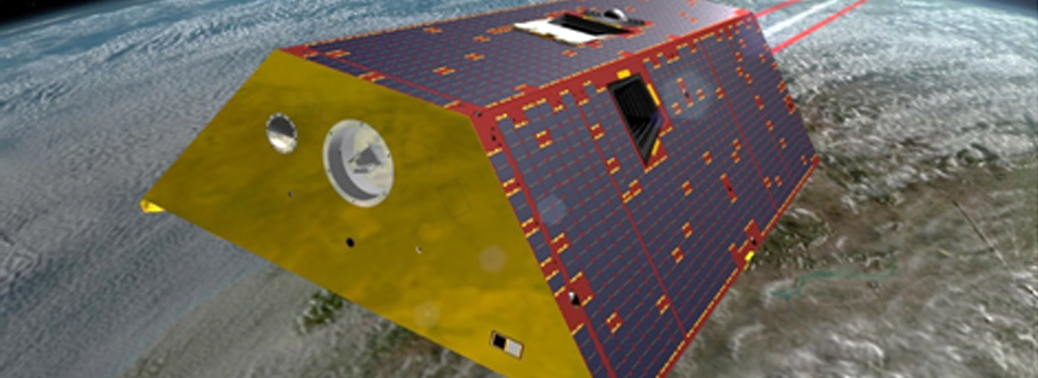
Why in News?
- Recently, a new satellite-based, weekly global maps of soil moisture and groundwater wetness conditions were developed by US space agency National Aeronautics and Space Administration (NASA) and the University of Nebraska-Lincoln (UNL) on March 31, 2020.
About GRACE- FO Mission:
- It is a partnership between NASA and the German Research Centre for Geosciences (GFZ).
- It is a successor to the original GRACE mission, which began orbiting Earth. The GRACE missions measure variations in gravity over Earth’s surface, producing a new map of the gravity field every 30 days.
- It will continue the work of tracking Earth’s water movement to monitor changes in underground water storage, the amount of water in large lakes and rivers, soil moisture, ice sheets and glaciers, and sea level caused by the addition of water to the ocean.
- These discoveries provide a unique view of Earth’s climate and have far-reaching benefits to society and the world’s Population.
About the Global Maps produced by GRACE-FO Mission:
- Its global maps are derived with data available from NASA and German Research Center for Geosciences’
- It provides the satellite-based observations of changes in water distribution were integrated with other data within a computer model that simulated water and energy cycles.
- It also produces other outputs, such as the time-varying maps of the distribution of water at three depths Surface soil moisture, root zone soil moisture (roughly the top three feet of soil) and shallow groundwater.
- Its map has a resolution of up to 8.5 miles, providing continuous data on moisture and groundwater conditions across the Landscape.
Significance of the Data:
- The data available through this project would fill existing gaps in understanding the full picture of wet and dry conditions that can lead to drought.
- It is absolutely a critical tool to helping us address and offset some of the impacts anticipated, whether it is from population growth, climate change or just increased water consumption in general.
- It would also help in managing the selection of appropriate agricultural crops and Predicting Yields.
NASA’S ARTEMIS PROGRAM
26, Feb 2020

Why in News?
- United States space agency National Aeronautics and Space Administration (NASA) has recently announced that it will begin to accept applications for astronauts under its Artemis programme.
About Artemis Programme:
- Artemis– Acceleration, Reconnection, Turbulence and Electrodynamics of Moon’s Interaction with the Sun.
- It is NASA’s next mission to the Moon.
- Its objective is to measure what happens when the Sun’s radiation hits our rocky moon, where there is no magnetic field to protect it.
- Artemis was the twin sister of Apollo and goddess of the Moon in Greek mythology.
- With the Artemis program, NASA will land the first woman and next man on the Moon by 2024.
What are its Significances?
- NASA’s powerful new rocket, the Space Launch System(SLS), will send astronauts aboard the Orion spacecraft nearly a quarter million miles from Earth to lunar orbit.
- Astronauts will dock Orion at the Gateway and transfer to a human landing system for expeditions to the surface of the Moon.
- They will return to the orbital outpost to board Orion again before returning safely to Earth.
- The agency will fly two missions around the Moon to test its deep space exploration systems.
- NASA is working toward launching Artemis I, a non crewed flight to test the SLS and Orion spacecraft together, followed by the Artemis II mission, the first SLS and Orion test flight with crew. NASA will land astronauts on the Moon by 2024 on the Artemis III mission and about once a year thereafter.
What are its scientific objectives?
- Find and use water and other critical resources needed for long-term exploration.
- Investigate the Moon’s mysteries and learn more about our home planet and the universe.
- Learn how to live and operate on the surface of another celestial body where astronauts are just three days from home.
- Prove the technologies we need before sending astronauts on missions to Mars, which can take up to three years roundtrip.
ADITHYA L-1 MISSION
20, Feb 2020
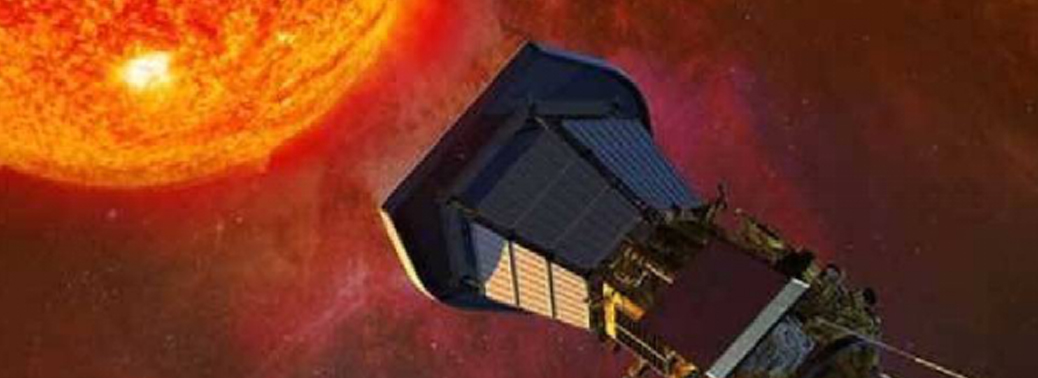
Why in News?
- The Indian Space Research Organisation (ISRO) is also preparing to send its first scientific expedition to study the Sun. Named Aditya-L1, the mission, expected to be launched early next year, will observe the Sun from a close distance, and try to obtain information about its atmosphere and Magnetic Field.
Highlights:
- Earlier this month, 47 new papers were published in a special supplement of The Astrophysical Journal, analysing data from the first three flybys of the Parker Solar Probe, NASA’s historic mission to the Sun.
- ISRO categorises Aditya L1 as a 400 kg-class satellite, that will be launched using the Polar Satellite Launch Vehicle (PSLV) in XL configuration. The space-based observatory will have seven payloads (instruments) on board to study the Sun’s corona, solar emissions, solar winds and flares, and Coronal Mass Ejections (CMEs), and will carry out round-the-clock imaging of the Sun.
- The mission will be undertaken in collaboration between various labs of ISRO, along with institutions like the Indian Institute of Astrophysics (IIA), Bengaluru, Inter University Centre for Astronomy and Astrophysics (IUCAA), Pune, and Indian Institute of Science, Education and Research (IISER), Kolkata.
- Aditya L1 will be ISRO’s second space-based astronomy mission after AstroSat, which was launched in September 2015.
- What makes a solar mission challenging is the distance of the Sun from Earth (about 149 million km on average, compared to the only 3.84 lakh km to the Moon) and, more importantly, the super hot temperatures and radiations in the solar atmosphere.
Importance of Solar Mission:
- The solar weather and environment, which is determined by the processes taking place inside and around the sun, affects the weather of the entire system.
- Variations in this weather can change the orbits of satellites or shorten their lives, interfere with or damage onboard electronics, and cause power blackouts and other disturbances on Earth.
- Knowledge of solar events is key to understanding space weather. To learn about and track Earth-directed storms, and to predict their impact, continuous solar observations are needed.
- Every storm that emerges from the Sun and heads towards Earth passes through L1, and a satellite placed in the halo orbit around L1 of the Sun-Earth system has the major advantage of continuously viewing the Sun without any occultation/eclipses.
- Aditya L1 will perform continuous observations looking directly at the Sun. NASA’s Parker Solar Probe has already gone far closer, but it will be looking away from the Sun.
- The earlier Helios 2 solar probe, a joint venture between NASA and space agency of erstwhile West Germany, went within 43 million km of the Sun’s surface in 1976.
Lagrange Point:
- L1 refers to Lagrangian/Lagrange Point 1, one of five points in the orbital plane of the Earth-Sun system. Lagrange Points are positions in space where the gravitational forces of a two-body system (like the Sun and the Earth) produce enhanced regions of attraction and repulsion.
- These can be used by spacecraft to reduce fuel consumption needed to remain in position. The L1 point is home to the Solar and Heliospheric Observatory Satellite (SOHO), an international collaboration project of NASA and the European Space Agency (ESA).
SPACE AND WOMEN IN SPACE
08, Feb 2020

Context:
- NASA astronaut Christina Koch has left her footprint in history after breaking an iconic space record for womankind. Her 328-day stay surpassed the record set by Peggy Whitson on a single space-flight at 288 days.
History of Women in Space:
- In 1963, aboard Vostok 6, Soviet Cosmonaut Valentina Tereshkova became the first woman to travel into space.
- The first woman to complete a spacewalk, or extravehicular activity (EVA), was Soviet cosmonaut Svetlana Savitskaya.
- In June 1983, NASA astronaut Sally Ride became the first U.S. woman in space when she launched on the STS-7 mission of the space shuttle Challenger.
- NASA’s Peggy Whitson, became the first woman to command the ISS in April 2008, she was also the first woman to command the ISS twice.
Does space affect men and women differently?
- Overall adaptation to the space environment is roughly the same for men and women but there are some differences.
- Women are more likely to feel sick when they go into space, men are more likely to get re-entry sickness when they come back to Earth.
- Men have more problems with their vision and hearing when they get back from space which women don’t get.
- When women return they do have problems managing their blood pressure so they feel quite faint.
- There are some subtle differences – physiologically and psychologically and there is a little study to do with hormonal differences or more physiological changes that are occurring.
- And long-term, understanding of those differences will help us understand more about human health on Earth.
What does ‘Spacewalk’ mean?
- Anytime an astronaut gets out of a space vehicle, it is called an extravehicular activity, or EVA. This is also called a spacewalk.
- Russian astronaut Alexei Leonov performed the first spacewalk on March 18, 1965. The first spacewalk was 10 minutes long.
- Spacewalks allow astronauts to work outside their spacecraft while still in space.
- To carry out scientific experiments in space
- To test new equipment’s or make repairs to satellites/spacecraft
- Spacesuits protect the astronauts from extreme hot and cold temperatures, harmful space dust and radiation.
- Spacesuits are pressurized to keep the fluids in the body in a liquid state.
- Once in their suits, astronauts breathe 100 percent oxygen for several hours until all the nitrogen is out of their bodies.
Nitrogen and ‘the bends’:
- Nitrogen in the body during a spacewalk can cause gas bubbles to form in the body. These gas bubbles can cause astronauts to feel pain in their joints, such as their shoulders, elbows, wrists and knees.
- This condition is called “the bends” because it affects the places where the body bends. The same condition can affect divers who use oxygen tanks to breathe underwater.
India and Women in Space:
- Kalpana Chawla was the first woman of Indian descent to go into space.
- She was also one of the 7 member crew of the ill-fated NASA’s Columbia, that disintegrated upon atmospheric entry killing the crew in 2003.
- Sunita Williams, was born to an Indian American Father in the United States of America.
- She formerly held the records for total spacewalks by a woman (seven) and most spacewalk time for a woman (50 hours, 40 minutes).
- In August 2007, she became the first person to run a marathon in space.
- Anuradha TK, a Geosat Programme Director at Indian Space Research Organisation (ISRO) Satellite Centre is an eminent scientist in this field.
- Ritu Karidhal, a scientist at ISRO has worked on multiple ISRO projects as an operations director, is famous for her contribution to Mangalyaan, India’s Mars orbiter mission as the Deputy Operations Director.
- India has come to a point where contributions of women across all fields are being celebrated and applauded. India still has a long way to go to make the historically male-dominated domains like space, as a level playing field for women. By then Indian women would be, quite literally, reaching for the stars.
NEW SPACE AGE- ISRO
11, Jan 2020

Context:
- The Indian Space Research Organisation (ISRO) has recently announced that, nearly 20 space missions will be launched in the near future.
About ISRO’s planned Space Projects:
- The government has proposed a manned space flight (Gaganyaan) before 2022. ISRO would be undertaking many prolonged space exploration projects and sending many astronauts into space.
- It has declared its intention to build a permanent space station for itself, possibly in the next five to seven years.
- Aditya-I will be India’s first solar mission scheduled to be launched in 2020. Similar project is planned for Venus.
Development of Private Capacity in Space:
- A policy framework to enable private participation in this sector would have to be formulated by the government.
- A strong private sector in space will help India to tap into this lucrative commercial space launch market.
- Globally, Small satellite revolution is underway, that are expected to be launched between 2020 and 2030.
- Space tourism is one of the several opportunities that Indian businesses may be keen to explore.
The Increase in competitiveness over Space:
- Singapore is offering itself as a hub for space entrepreneurship based on its equatorial location, availability of skilled manpower and legal environment.
- New Zealand is positioning itself as a location for private rocket launches. China has changed its rules to allow private commercial space activity.
- ISRO has been a genuine global pioneer of aero spatial cost compression on several fronts. Cost-effectiveness has given the agency a distinct edge in the commercial arena of satellite launch services.
The Benefit of Becoming a Space Power:
- Space is emerged as the fourth arm of the country’s defence setup. Its power has the ability to use space while denying reliable use to any foe.
- With US, China and Russia already in pursuit of becoming a Space power, India will need to equip itself appropriately to meet emerging security challenges.
- India, has only a handful of military satellites in operation, compared to over 40 civilian ones. Our first dedicated military satellite was launched only in 2013.
- Recently, Mission Shakti has demonstrated India’s capability to target enemy satellite.
- Newly instituted DSA (defence space agency) will be supported by a defence space research organization (DSRO) has the mandate to create weapons to “degrade, disrupt, destroy or deceive an adversary’s space capability”.
Way Forward:
- India needs to structurally separate the regulatory, commercial and scientific research elements of the space programme.
- It needs a new space policy, that aims to harness space as a growth sector for the economy, attracts private investment and creates jobs, even as it promotes scientific breakthroughs and helps leapfrog developmental challenges.
- It must have reliable and accurate capabilities to track space objects, from debris and spacecraft to celestial bodies.
- It must acquire a minimum, credible capacity across the various types of space weapons, physical, electronic and cyber to have an effective space defence.
- There is need to establish an independent regulator that governs both ISRO and new space operators on a level playing field.
- The Funding on Space Research and development must be enlarged and ISRO & private research institutions should work be encouraged to work in tandem.
- The developments in Artificial Intelligence (AI) and big data analytics have led to the emergence of the new space age, India’s space programme needs to take two additional leaps i.e. foster a private space industry and start work on a space force.
- Losses in space missions can seriously impact the future of cooperation between space powers. Therefore, in the new space age, India’s space policy must acquire a new seriousness that can tap into the creative energies of private entrepreneurs and bolster India into a space power.
ADITYA – L1 FIRST INDIAN MISSION TO STUDY THE SUN
31, Dec 2019
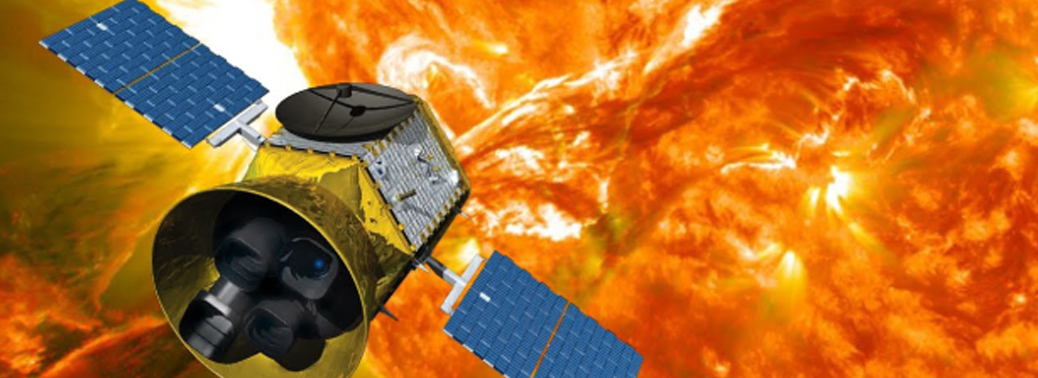
Context:
- If 2019 was all about the Moon for Indian space agency ISRO, year 2020 could well be about the Sun. In his Mann Ki Baat address, Prime Minister Narendra Modi spoke about the ISRO’s plans to launch its first Sun Mission AdityaL1.
- The 400 KG-Class Aditya L1 will carry six scientific payloads that will be inserted in a halo orbit around the Lagrangian point 1 or L1. Incidentally L1 is 1.5 million kilometres from the Earth.
The Sun – Our Central Star:

- The Sun is the star nearest to us. It is a huge, luminous ball of gas like other stars in the Universe.
From the Inside out, the Solar Interior Consists of:
- The Core– The central region where nuclear reactions consume hydrogen to form helium. These reactions release the energy that ultimately leaves the surface as visible light.
- The Radiative Zone– It extends outward from the outer edge of the core to base of the convection zone, characterized by the method of energy transport – radiation.
- The Convection Zone– The outer-most layer of the solar interior extending from a depth of about 200,000 km to the visible surface where its motion is seen as granules and super-granules.
The Solar Atmosphere is made up of:
- The Photosphere– The visible surface of the Sun
- TheChromosphere – An irregular layer above the photosphere where the temperature rises from 6000°C to about 20,000°C
- TransitionRegion – A thin and very irregular layer of the Sun’s atmosphere that separates the hot corona from the much cooler chromosphere
- The Corona– The Sun’s outer atmosphere.
- Beyond the corona is the Solar Wind, which is actually an outward flow of coronal gas.
- The sun’s magnetic fields rise through the convection zone and erupt through the photosphere into the chromosphere and corona.
- The eruptions lead to solar activity, which includes such phenomena as sunspots, flares, prominences, andCoronal Mass Ejections.
Aditya – L1:
-
- The Aditya-1 mission was conceived as a 400kg class satellite carrying one payload, the Visible Emission Line Coronagraph (VELC) and was planned to launch in a low earth orbit.
- The Aditya-1 mission has now been revised to “Aditya-L1 mission” – placed in the halo orbit around the Lagrangian point 1 (L1) of the Sun-Earth system, which is 1.5 million km from the Earth.
- Lagrangian point 1 (L1) of the Sun-Earth system– has the major advantage of continuously viewing the Sun without any Occultation/Eclipses.
- A Lagrange point is a location in space where the combined gravitational forces of two large bodies, such as Earth and the sun, equal the centrifugal force felt by a much smaller third body.

- Aditya-1 was meant to observe only the solar corona – It has a temperature of more than a million-degree Kelvin which is much higher than the solar disc temperature of around 6000K.
- The complete list of payloads and their science objective for developing the Payloads:
- Visible Emission Line Coronagraph (VELC):To study the diagnostic parameters of solar corona and dynamics and origin of Coronal Mass Ejections.
- Solar Ultraviolet Imaging Telescope (SUIT):To image the spatially resolved Solar Photosphere and Chromosphere in near Ultraviolet.
- Aditya Solar wind Particle Experiment (ASPEX):To study the variation of solar wind properties as well as its distribution and spectral characteristics.
- Plasma Analyser Package for Aditya (PAPA):To understand the composition of solar wind and its energy distribution.
- Solar Low Energy X-ray Spectrometer (SoLEXS):To monitor the X-ray flares for studying the heating mechanism of the solar corona.
- High Energy L1 Orbiting X-ray Spectrometer (HEL1OS):To observe the dynamic events in the solar corona and provide an estimate of the energy used to accelerate the particles during the eruptive events.
- Magnetometer:To measure the magnitude and nature of the Interplanetary Magnetic Field.
Questions about the Corona:
- The outer layers of the Sun, extending to thousands of km above the disc (photosphere) is termed as the corona.
- It has a temperature of more than a million-degree Kelvin which is much higher than the solar disc temperature of around 6000K.
- How the corona gets heated to such high temperatures is still an unanswered question in solar physics.
- With the inclusion of multiple payloads, this project also provides an opportunity to solar scientists from multiple institutions within the country to participate in space-based instrumentation and observations.
- Thus, the enhanced Aditya-L1 project will enable a comprehensive understanding of the dynamical processes of the sun and address some of the outstanding problems in solar physics.
PSLV-C48/RISAT-2BR1
12, Dec 2019
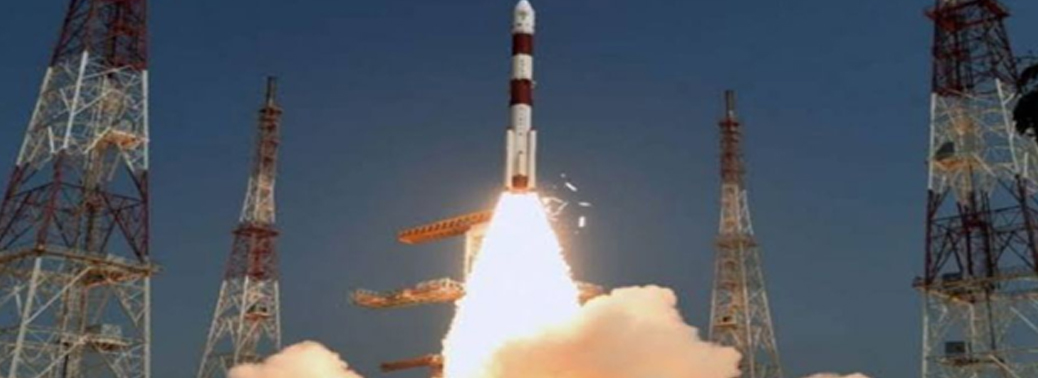
Why in News?
- PSLV-C48 successfully launched RISAT-2BR1 and nine commercial satellites from Satish Dhawan Space Centre (SHAR), Sriharikota.
About the Launch:
- India’s Polar Satellite Launch Vehicle, in its 50th flight (PSLV-C48), successfully launched RISAT-2BR1, an earth observation satellite, along with nine commercial satellites of Israel, Italy, Japan and USA from Satish Dhawan Space Centre (SDSC) SHAR, Sriharikota.
- These satellites were launched under commercial arrangement with New Space India Limited (NSIL), the commercial arm of Indian Space Research Organisation (ISRO).
- It was PSLV’s 50th flight and 48th successful flight since its first successful launch in 1994.
- It was the 75th launch from Sriharikota.
- This was the 2nd flight of PSLV in ‘QL’ configuration (with 4 solid strap-on motors).
- With this, ISRO has launched a total of 319 foreign satellites from 33 countries since the first launch in 1999 when PSLV-C2 carried satellites from Germany and South Korea.
About PSLV:
- PSLV is an expendable medium-lift launch vehicle designed and operated by ISRO.
- The PSLV, which has a history of successful launches of payloads that include Chandrayaan-1, Mars Orbiter Mission and the space recovery mission.
- The PSLV had helped take payloads into almost all the orbits in space including Geo-Stationary Transfer Orbit (GTO), the Moon, Mars and would soon be launching a mission to the Sun
- Initially, the PSLV had a carrying capacity of 850 kg, and over the years it has been enhanced to 1.9 tonnes.
- The PSLV has failed only twice in its history — the maiden flight of the PSLV D1 in September 1993 and the PSLV C-39 in August 2017.
About RISAT-2BR1:
- RISAT-2BR1 is radar imaging earth observation satellite carrying X-band synthetic aperture radar, an Indian version of Israel’s TecSAR satellite, with radial rib reflector 3.6 metre mesh antenna.
- The satellite weighs about 628 kg. The mission life of RISAT-2BR1 is 5 years.
- The satellite will provide services in the field of Agriculture, Forestry and Disaster Management.
- It is believed that RISAT-2BR1 along with Cartosat-3, a remote sensing satellite which was launched on November 27, 2019, will also be used for Military Reconnaissance.

ISRO’S SECOND SPACEPORT AT KULASEKARAPATTINAM (TN)
05, Dec 2019

Why in News?
- The ISRO has commenced land acquisition for its second launchpad in Kulasekarapattinam, a town in the Thoothukudi (Tuticorin) district of Tamil Nadu.
ISRO’s spaceport:
- ISRO’s first and only spaceport, the Satish Dhawan Space Centre (SDSC), is located in Sriharikota, about 100 km north of Chennai, in the state of Andhra Pradesh.
- The organisation launches its PSLV and GSLV rockets from here.
- The SDSC, setup in 1971, currently has two active launchpads.
- Its first launchpad was decommissioned once the Augmented Satellite Launch Vehicle programme ended in 1994.
- The first of the two active pads mostly services the PSLV and the second, the GSLV, and which ISRO is currently modifying to accommodate crewed vehicle missions as part of its upcoming human spaceflight project, Gaganyaan.
- The second spaceport at Kulasekarapattinam is expected to provide an important advantage to ISRO’s upcoming Small Satellite Launch Vehicle (SSLV), a smaller counterpart of the PSLV.
Need for another Launchpad:
- The PSLV is designed to launch satellites into pole-to-pole, or polar, orbits around Earth.
- However, it can’t enter into such an orbit straightaway after launch because its trajectory needs to avoid flying over Sri Lanka, protecting its popular centres from any debris from the rocket.
- So once the rocket lifts off from Sriharikota, it flies further east to avoid Sri Lanka and then steers itself back towards the South Pole.
- This manoeuvre requires more fuel, and for a smaller rocket like the SSLV, the addition could eat into its already limited payload capacity and reduce the rocket’s value for Antrix, ISRO’s commercial operator.
- By setting up a spaceport in Kulasekarapattinam the SSLV will lift off over the Lakshadweep Sea and won’t have to swerve around Sri Lanka as it climbs to higher altitudes.
Significance of Thoothukudi’s location:
- Proximity to the seashore makes Thoothukudi ideal for “straight southward” launches. From Sriharikota, such southward bound launches are not possible as the rockets have to fly around Sri Lanka.
- Nearness to the equator: Like the Sriharikota spaceport in the Satish Dhawan Space Centre, Thoothukudi was selected as a spaceport due to its nearness to the equator. A rocket launch site should be on the east coast and near the equator.
- Logistical ease: ISRO has its Liquid Propulsion Systems Centre (LPSC) at Mahendragiri in Tirunelveli district, where it assembles the second and fourth stage engines for the PSLV. Instead of transporting the second and fourth stages to Sriharikota from Mahendragiri, it would be easier to shift them to the launch pad if it is built in Kulasekarapattinam, which is around 100 km away.
ARROKOTH
15, Nov 2019
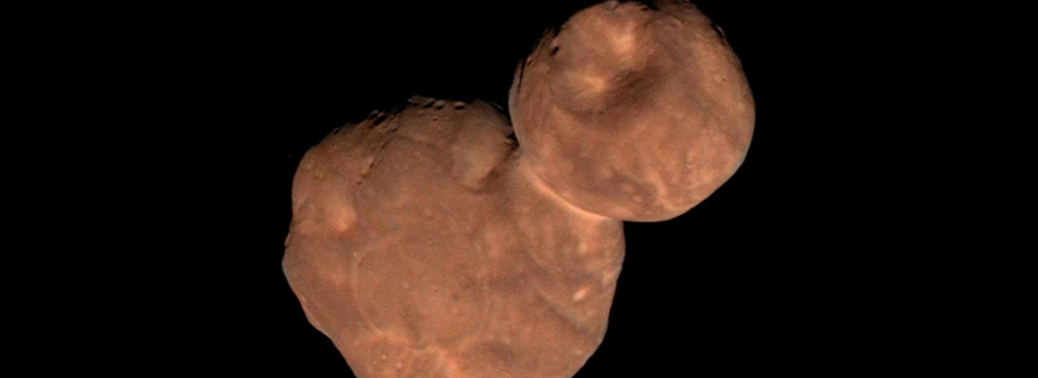
Why in News?
- The most distant space object ever seen up close has been recently named as ‘Arrokoth’.
- It was earlier nicknamed as Ultima Thule.
Arrokoth:
- The International Astronomical Union and Minor Planets Center, the global body for naming Kuiper Belt objects have given this name.
- It was discovered in 2014 with the Hubble Space Telescope, which is operated by the Space Telescope Science Institute in Baltimore.
- Nasa’s New Horizons spacecraft flew by the snowman figured ice mass in December 2018, some 1.6 billion kilometres beyond Pluto.
- The New Horizons team of NASA proposed the name to the International Astronomical Union and Minor Planets Center.
- For the New Horizons team it took some months to finalise this name. In the language of the Powhatan tribe, Arrokoth means “sky”.
- The team got the approval from the elders of the Powhatan tribe to assign it to their new found “Baby”.
New Horizons Mission:
- NASA launched the New Horizons mission in January 2006.
- After crossing by Pluto in 2015, in 2019 it flew by Arrokoth. This remains the “farthest flyby ever conducted.”
Kuiper Belt:
- The Kuiper Belt is a disk-shaped region found in the outer solar system, past the orbit of Neptune.
- It is known as the third zone of the solar system, after the zone hosting the gas planets in our solar system. It contains hundreds of millions of small icy bodies that are thought to be left over material from the formation of the outer planets.
- At least three dwarf planets are located in the Kuiper belt: Pluto, Haumea and Make.
- Also, some of the solar system’s moons are thought to have originated there, such as Neptune’s Triton and Saturn’s Phoebe.
ISRO’S NAVIC SET TO BE COMMERCIALISED BY ANTRIX
04, Nov 2019

Why in News?
- The Indian Space Research Organisation (ISRO) and its commercial arm Antrix Corporation Ltd. are poised to commercialise India’s regional navigation satellite system, NavIC.
- Antrix has recently floated two separate tenders to identify industries that can develop dedicated NavIC-based hardware and systems.
About NavIc (Navigation in Indian Constellation):
- NavIC is the Indian system of seven (currently eight) satellites that is aimed at telling business and individual users where they are, or how their products and services are moving.
- The indigenous positioning or location-based service (LBS) works just like the established and popular U.S. Global Positioning System or GPS, but within a 1,500-km radius over the sub-continent.
- About IRNSS (Indian Regional Navigation Satellite System):
- IRNSS is an independent regional navigation satellite system designed to provide position information in the Indian region and 1500 km around the Indian mainland.
- The Indian Regional Navigation Satellite System (IRNSS) is similar to that of GPS (global positioning system) of the US, Glonass of Russia and Galileo of Europe as well as China’s Beidou.
Features:
- It is a constellation of total 7 satellite launched in space and a ground facility on land to receive signals from space satellites. 3 of its satellite Located in Geostationary orbit and 4 are inclined to geosynchronous orbit. However full NAVIC system has 9 satellite, 2 on ground in standby mode.
- 4 Geosynchronous satellites: They will be orbiting in pairs in two inclined geosynchronous orbits. When observed from the ground, these 2 pairs of satellites will appear to travel in figures of ‘8’.
- 3 geostationary satellites: They will be placed in the geostationary orbit over the equator. They match the Earth’s rotation and shall remain at a fixed position in the sky.
- It covers whole India and region surrounding it up to 1500 km.
- It provides accuracy up to 20m as claimed by ISRO.
How many IRNSS Satellites are up there now?
- There are currently eight IRNSS satellites (1A to 1I) in orbit. A, B, F, G are placed in a geosynchronous orbit, while the remaining three, C, D, E, are located in geostationary orbit.
- The last IRNSS, 1H, which was launched on August 31, 2017 was unsuccessful as the satellite did not come out of its heat shield.
- IRNSS-1I was launched last year to replace India’s first navigation satellite IRNSS-1A, whose three Rubidium atomic clocks had stopped working. The malfunctioning of the Europe-imported atomic clocks in IRNSS-1A made it difficult to measure precise locational data from the satellite.
What areas will it cover?
- Primary Service Area: To provide accurate position information service to users in India as well as the region extending up to 1500 km from its boundary, which is its primary service area.
- Extended Service Area: It lies between primary service area and area enclosed by the rectangle from Latitude 30 deg South to 50 deg North, Longitude 30 deg East to 130 deg East.
What all services are provided?
- IRNSS would provide two types of services, namely
- Standard Positioning Services available to all users and
- Restricted Services provided to authorised users. (Encrypted)
Significance of IRNSS:
- India became one of the 5 countries having their own navigation system like GPS of USA, GLONASS of Russia, Galileo of Europe and Beidou of China. So, India dependence on other countries for navigation purposes reduces.
- It will help to mitigate the disaster effects by providing information of disaster timing, safe location and also help the disaster relief management to make earlier plans and save the lives of people in India as well as up to 1500 km around it.
- It will help the mariners for far navigation and fisherman for get information about the valuable fisheries location and any disturbance in Sea.
- It will help to make friendly relations with others countries by providing real time information during any calamity or disaster for mitigate its after effect and for making early plans
Recent Positive Developments:
- In mid-October, ISRO announced that Qualcomm Technologies, Inc., a leading producer of semiconductor chips, had developed and tested NavIC-friendly chipsets across its user bases and that it would add NavIC to them.
- Apart from GPS, its chips can work with the global navigation satellite systems of Europe (Galileo), Russia (GLONASS) and China (Beidou.)
- The third and important positive for NavIC was the certification of the Indian system by the 3GPP (The 3rd Generation Partnership Project), a global body for coordinating mobile telephony standards.
IONOSPHERIC CONNECTION EXPLORER
14, Oct 2019
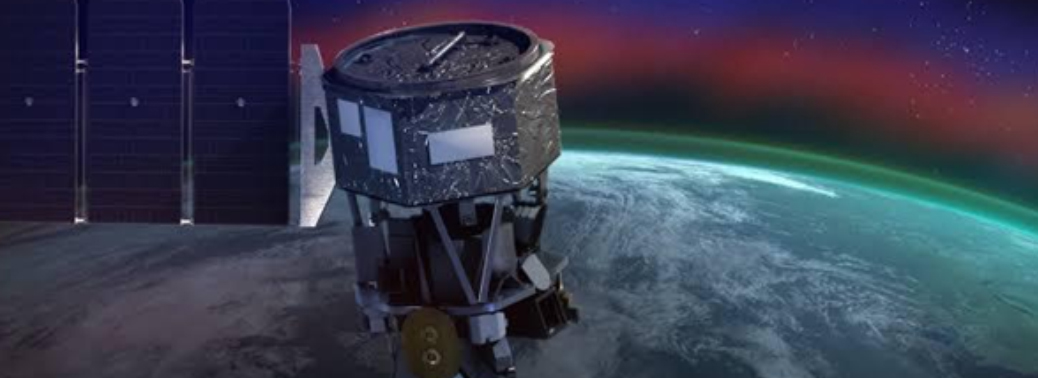
Why in News?
- NASA has launched a satellite to explore the mysterious, dynamic region where air meets space.
Ionospheric Connection Explorer:
- The satellite — called ICON, short for Ionospheric Connection Explorer — rocketed into orbit following a two-year delay.
- The refrigerator-size ICON satellite will study the airglow formed from gases in the ionosphere and also measure the charged environment right around the spacecraft which is at a level of 580 kilometers above the Earth’s surface.
- The ionosphere is the charged part of the upper atmosphere extending several hundred miles (kilometers) up.
- It’s in constant flux as space weather bombards it from above and Earth weather from below, sometimes disrupting radio communications.
Why study Ionosphere?
- There’s too much going on in this region to be caused by just the sun.
- Hurricanes, tornadoes and other extreme weather conditions on Earth are also adding energy.
- The more scientists know the better spacecraft and astronauts can be protected in orbit through improved forecasting.
- A NASA satellite launched last year, Gold, is also studying the upper atmosphere, but from much Higher Up.
GEOTAIL
09, Oct 2019

Why in News?
- Recently on board with Chandrayaan-2 mission, an instrument called CLASS, designed to detect signatures of elements in the Moon’s soil, had detected charged particles during the mission.This happened in September, during the orbiter’s passage through the “geotail”.
Geotail:
- The geotail is a region in space that allows the best observations.
- The region exists as a result of the interactions between the Sun and Earth.
- The Sun emits the solar wind, which is a continuous stream of charged particles. These particles are embedded in the extended magnetic field of the Sun.
- Since the Earth has a magnetic field, it obstructs the solar wind plasma.
- This interaction results in the formation of a magnetic envelope around Earth.
- On the Earth side facing the Sun, the envelope is compressed into a region that is approximately three to four times the Earth radius.
- On the opposite side, the envelope is stretched into a long tail, which extends beyond the orbit of the Moon. It is this tail that is called the geotail.
CLASS:
- CLASS stands for Chandrayaan 2 Large Area Soft X-ray Spectrometer.
- For the CLASS instrument seeking to detect element signatures, the lunar soil can be best observed when a solar flare provides a rich source of X-rays to illuminate the surface.
- Secondary X-ray emission resulting from this can be detected by CLASS to directly detect the presence of key elements like Na, Ca, Al, Si, Ti and Fe.
PLANET NINE
06, Oct 2019
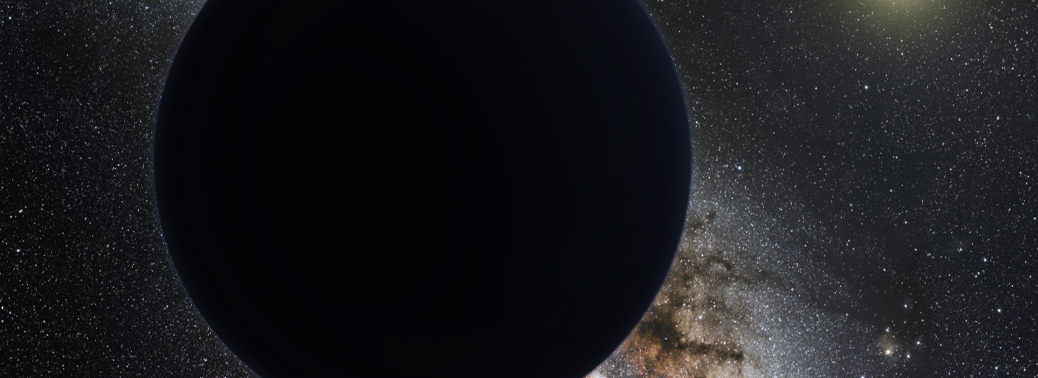
Why in News?
- Hidden in the outer Solar System lurks a presence, believed to be a gigantic planet orbiting the same Sun and casting a visible influence on the behaviour of a number of other objects.
- Although it has not yet been spotted, this behaviour would be difficult to explain if such a presence did not exist.
Planet Nine:
- It is popularly referred to as Planet Nine, the presumed ninth planet of the Solar System, and occasionally as Planet X.
- Scientists have proposed that this could be a tiny black hole instead.
- They have shown that the behaviour of certain Trans-Neptunian Objects like a primordial black hole.
Primordial black hole:
- A primordial black hole is one that is believed to have formed immediately after the creation of the universe.Like Planet Nine, primordial black holes too have been predicted to exist — including by the late Stephen Hawking — but none has been spotted as yet.
Planet Nine so far:
- Over the years, scientists have sought to explain several puzzling aspects of the Solar System by attributing these to the influence of Planet Nine.
- In a 2016 paper made out a case for Planet Nine’s existence by arguing that it could be responsible for the peculiar alignment of icy objects on the outskirts of the Solar System.
New suggestion about a Black Hole:
- Researchers based their theory proposed two gravitational anomalies.
- One is the unusual orbits of asteroids beyond the orbit of Neptune, which have fed the prediction of Planet Nine, estimated to be somewhere between 5 and 20 times the mass of the Earth.
- The other anomaly was observed thousands of light years away, by a project called the Optical Gravitational Lensing Experiment (OGLE).
- In six observations, an object bent the light of a star like black holes do. This is called microlensing.
- These six events correspond to objects whose masses are in the range 0.5 to 20 times the mass of Earth.
- The catch is that it is much harder to look for a black hole than to look for a planet, especially when the black hole is predicted to be of small dimensions.
- However, it is reasonable to expect a dark matter halo surrounds this black hole.
- If dark matter can annihilate into particles we know, the halo surrounding the black hole would radiate high energy photons and the halo would be visible in X-rays and gamma rays.
- Researchers propose to look through a gamma ray telescope dataset and try to find evidence of these annihilations.
CHANDRAYAAN-2’S ORBITER CLASS DETECTS CHARGED PARTICLES ON MOON
05, Oct 2019

Why in News?
- Indian Space Research Organisation (ISRO) has announced that Chandrayaan2’s Orbiter payload CLASS has detected charged particles on the moon in its first few days of observation.
- CLASS has observed intensity variations in its first passage through Moon’s orbit.
Highlights:
- CLASS is able to detect direct signatures of elements present in the lunar soil.
- It was also found by the CLASS that best observation occurred when the Sun provides a rich source of x-rays to illuminate the lunar surface.
- The payload can also detect secondary x-ray emissions resulted from the lunar surface to find out elements like Na, Ca, Al, Si, Ti and Fe.
- The sun emits a stream of protons and electrons into the solar system which is called the solar wind. The plasma in solar winds containing charged particles embedded in the extended magnetic field of the Sun travels at speeds of a few hundred km per second.
- These particles interact with Earth’s atmosphere and create a magnetic envelop around the earth which is called magnetosphere.
- This envelop of the magnetosphere is compressed into a region approximately three to four times the Earth radius on the side facing the Sun.
- On the other end, it has a stretched tail which is called geotail that goes beyond the orbit of the Moon.
- After every 29 days, Moon crosses the geotail for approximately six days. Therefore, Chandrayaan-2 also traversed geotail and its instruments found charged particles in the field.
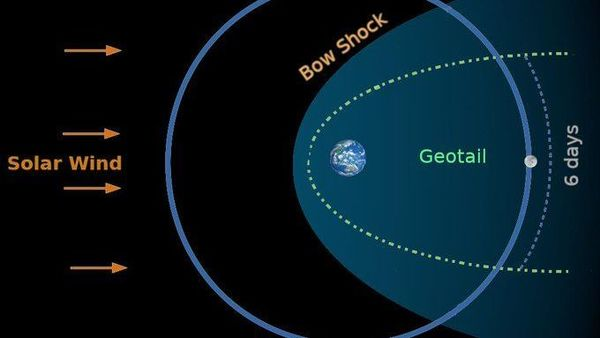
CLASS:
- The CLASS stands for Chandrayaan-2 Large Area Soft X-ray Spectrometer.
- It helps to study the Moon’s X-ray Fluorescence (XRF) spectra to find out the presence of major elements such as Sodium, Silicon, Magnesium, Calcium, Aluminium, Titanium and Iron.
- This technique will identify these elements by measuring the characteristic X-rays they emit when excited by the Sun’s rays.
X-ray Monitor:
- X-ray Monitor or XSM detects the X-rays emitted by the Sun and its corona. It calculates the strength of solar radiation in these rays and assists CLASS.
- Major objective of XSM is to provide solar X-ray spectrum in the energy range of 1-15 KV. This payload will give high-energy resolution and high-cadence measurements of solar X-ray spectra as input for analysis of data from CLASS.
HOW GRAVITY DISTORTS OUR VIEW OF A BLACK HOLE
30, Sep 2019
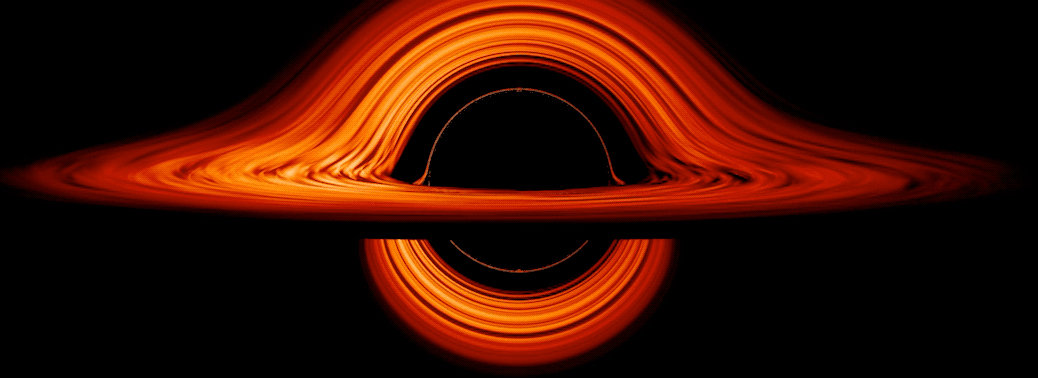
Context:
- A new visualisation of a black hole, released by NASA, illustrates how its gravity distorts our view by warping its surroundings.
- The visualisation simulates the appearance of a black hole where infalling matter has collected into a thin, hot structure called an accretion disc.
- The black hole’s extreme gravity skews light emitted by different regions of the disc, producing the misshapen appearance, NASA explained in the release.
Explanation:

- As magnetic fields twist through the churning gas, bright knots form and dissipate in the disc. In the area closest to the black hole, the gas orbits at close to the speed of light.
- The outer portions spin a bit more slowly. This difference stretches and shears the bright knots, producing light and dark lanes in the disk.
- The black hole’s extreme gravity alters the paths of light coming from different parts of the disc, producing the warped image.
- Exactly what we see depends on our viewing angle; the greatest distortion occurs when viewing the system nearly edgewise.
- Glowing gas on the left side moves toward us so fast that the effects of Einstein’s relativity give it a boost in brightness.
- On the right side, gas moving away becomes slightly dimmer. This asymmetry disappears when we see the disc exactly face on because, from that perspective, none of the material is moving along our line of sight.
About Einstein’s Theory of Relativity:
- In 1915, Albert Einstein presented his theory of general relativity, which proposed that gravity itself was the result of a warping of spacetime by massive objects like stars and planets.
- Einstein’s theory of relativity indicates that all objects fall the same way regardless of mass or composition.
Things predicted by General relativity include:
- As light gets closer to the sun, it bends towards the suntwice as much as classical physics (the system used before general relativity) predicts.
- The perihelion of the planet Mercury rotates along its orbit more than is expected under Newtonian physics. General relativity accounts for the difference between what is seen and what is expected without it.
- Redshift from gravity.When light moves away from an object with gravity (moving away from the center of the valley), it is stretched into longer wavelengths. This was confirmed by the Pound-Rebka experiment.
- The Shapiro delay.Light appears to slow down when it passes close to a massive object. This was first seen in the 1960s by space probes headed towards the planet Venus.
- Gravitational waves.They were first observed on 14 September 2015.
PROJECT NETRA
28, Sep 2019
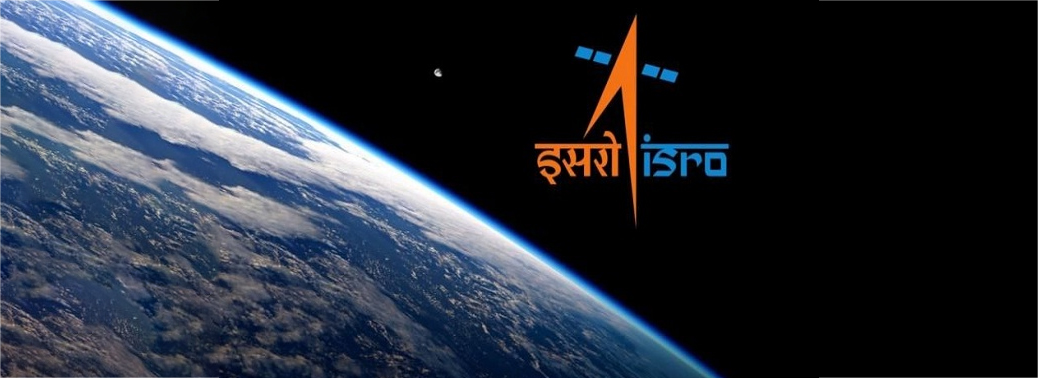
Why in news?
- ISRO has initiated ‘Project NETRA’ – an early warning system in space to detect debris and other hazards to Indian satellites.
Project NETRA (Network for space object Tracking and Analysis):
- The project will give India its own capability in space situational awareness (SSA) like the other space powers — which is used to ‘predict’ threats from debris to Indian satellites.
- NETRA’s eventual goal is to capture the GEO, or geostationary orbit, scene at 36,000 km where communication satellites operate.
- The space agency says our SSA will first be for low-earth orbits or LEO which have remote-sensing spacecraft.
- Under NETRA the ISRO plans to put up many observational facilities: connected radars, telescopes; data processing units and a control centre.
- They can, among others, spot, track and catalogue objects as small as 10 cm, up to a range of 3,400 km and equal to a space orbit of around 2,000 km.
- The NETRA effort would make India a part of international efforts towards tracking, warning about and mitigating space debris.
What NETRA consists of?
- In the plans are a high-precision, long range telescope in Leh and a radar in the North East.
- Along with them, we will also use the Multi-Object Tracking Radar (MOTR) that we have put up at the Satish Dhawan Space Centre in Sriharikota, and the telescopes at Ponmudi and Mount Abu to get a broad SSA picture.
- NORAD, or the North American Aerospace Defense Command, is an initiative of the U.S. and Canada that shares selective debris data with many countries.
- The new SSA centre would consolidate debris tracking activities that are now spread across ISRO centres.
- Currently there are 15 functional Indian communication satellites in the geostationary orbit of 36,000 km; 13 remote sensing satellites in LEO of up to 2,000 km; and eight navigation satellites in medium earth orbits.
Why Space debris matters?
- Space debris could be floating particles from dead satellites or rocket parts that stay in orbit for many years.
- Satellite agencies worry over even a speck of paint or fragment floating towards their spacecraft: it disables on board electronics and cripples the satellite worth several hundred crore rupees.
- Agencies constantly look for debris at the time of a launch and through the life of a satellite.
Enhancing Space situational awareness (SSA):
- India, as a responsible space power, should have SSA as a part of a national capability, as in the U.S. This is a vital requirement for protecting our space assets and a force multiplier.
- The SSA has a military quotient to it and adds a new ring to the country’s overall security.
- It uses satellites, ground and air radars to secure its two countries against attacks from air, space or sea.
- With long-range tracking radars, the SSA also provides us the capability of an early warning system against ballistic missiles coming in at a height.
- Apart from radars and telescopes, he said India should also think of deploying satellites that track other satellites — as the U.S. and other space powers had done.
- Combined with other elements of military intelligence SSA would help us to understand motives behind any suspicious orbit changes of other satellites and to know if they were spying on or harming our spacecraft.
CHANDRAYAAN-2’S VIKRAM LANDER HAD A HARD LANDING, SAYS NASA
28, Sep 2019

Why in News?
- S. space agency National Aeronautics and Space Administration (NASA) has officially said moon lander Vikram had a hard-landing and that its own orbiting spacecraft Lunar Reconnaissance Orbiter (LRO) could not get clear pictures of Vikram’s crash site during its recent flyover.
Details:
- The LRO captured a 150-km-wide area in the southern lunar highlands but the pictures were not clear as it was sunset and light had faded.
- Vikram’s precise location eluded the sharp camera of the Lunar Reconnaissance Orbiter (LRO) when it last flew over the probable site on September 17.
- NASA stated that it is possible that the Vikram lander is hiding in a shadow. The lighting will be favourable when LRO passes over the site in October and once again attempts to locate and image the lander.
- This was the reconfirmation that Indian Space Research Organisation and the space community have awaited to figure out where and how the lander of the Chandrayaan-2 mission had fallen when it attempted to touch down on moon.
- LRO will next fly over the landing site on October 14 when lighting conditions will be more favourable.
- The landing region lies between two craters about 70° south of the lunar equator and about 600 km from its shadowy south pole.
- The orbiting Chandrayaan-2 and the LRO routinely fly over the same spot at regular intervals. Images from their next flyovers could help ISRO give conclusive information.
About Chandrayaan-2 Mission:
- Chandrayaan-2 was launched using a Geosynchronous Satellite Launch Vehicle Mk III (GSLV-F10).
- The spacecraft (orbiter) weighs around 3,290 kg and it will orbit around Moon and perform objectives of remote sensing the Moon.
- It has been developed indigenously by ISRO. It consists of Orbiter, Lander (Vikram) and Rover (Pragyan) In this mission, ISRO has attempted for the first time to land a rover on moon’s south pole
Lunar Reconnaissance Orbiter (LRO):
- The Lunar Reconnaissance Orbiter and Lunar Crater Observation and Sensing Satellite missions began on June 18, 2009. It is a robotic spacecraft currently orbiting the Moon.
- It studies the Moon’s surface, clicks pictures, and collects data that help in figuring out the presence and possibility of water ice and other resources on the Moon, as well as plan future missions to it.
- The primary mission of the LRO, managed by NASA’s Goddard Space Flight Center, located in Greenbelt, Maryland, was to measure the entire lunar surface to create a high-resolution 3-D map of the Moon.
- The map with ~50-centimeter resolution images would aid in the planning of future robotic and crewed missions.
- In addition, LRO would map the Polar Regions and search for the presence of water ice.
The Mission:
- The mission has provided technical innovations and made surprising discoveries that have changed our view of the Moon.
- The instruments on board the spacecraft return global data, such as day-night temperature maps, a global geodetic grid, high resolution color imaging and the moon’s UV albedo.
- It is estimated that the LRO has fuel enough to stay on its mission for at least six more years.
METHANE-POWERED ROCKET ENGINE
26, Sep 2019
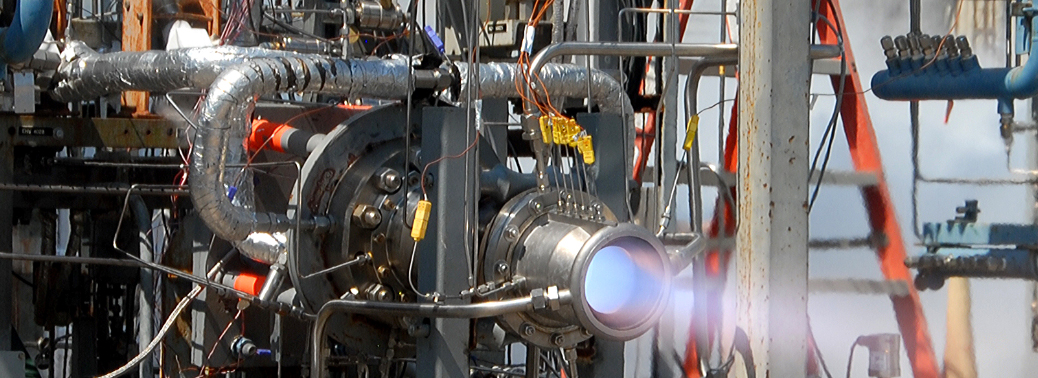
Why in News?
- ISRO is planning to develop methane-powered rocket engines.
LOX Methane Engines:
- The space agency is developing two ‘LOx methane’ engines (liquid oxygen oxidiser and methane fuel) engines.
- One of the two projects is trying to convert the existing cryogenic engine, which uses liquid hydrogen for fuel, into a LOx methane engine.
- The other is a smaller engine of 3 tonnes thrust, which will feature an electric motor.
- These are being developed at ISRO’s Liquid Propulsion Systems Centre at Trivandrum.
- ISRO currently prefers to use a fuel called Unsymmetrical Di-Methyl Hydrazine, along with Nitrogen tetroxide for oxidizer, in its liquid fuel (Vikas) engines, which are used in the lower stages of its rockets, PSLV and GSLV.
Why Methane?
- Di-Methyl Hydrazine like all hydrazine-based fuels, is said to be highly toxic and cancer-causing.
- Globally, governments are keen on banning hydrazine.
- Besides, methane beats hydrazine on every other count.
- Apart from being non-toxic, it has a higher specific impulse which means one kg of the gas can life one kg of mass for a longer time.
- Methane, which can be synthesized with water and carbon dioxide in space, is often described as the space fuel of the future.
- It is easy to store, does not leave a residue upon burning, less bulky, and, importantly, can be synthesized up in space.
- Methane-fired engines need an igniter to start the fire.
- Hydrazine fuels are hypergolic, which means they start burning on their own upon coming in contact with oxygen.
Rocket Engine Development:
- Mumbai-based start-up Manastu Space is developing a propulsion system that will use Hydrogen peroxide as fuel.
- Currently, Manastu’s engines are meant for steering satellites in orbit but they can be scaled up to power launch vehicles.
- According to the company, the space industry started with Hydrogen peroxide, but moved to a ‘better’ hydrazine.
- But Manastu has developed a chemical additive, which it is trying to patent — the additive will enable Hydrogen peroxide to elbow hydrazine out of the competition.
CHANDRAAYAN-2 AND THE APPROACHING LUNAR NIGHT
23, Sep 2019
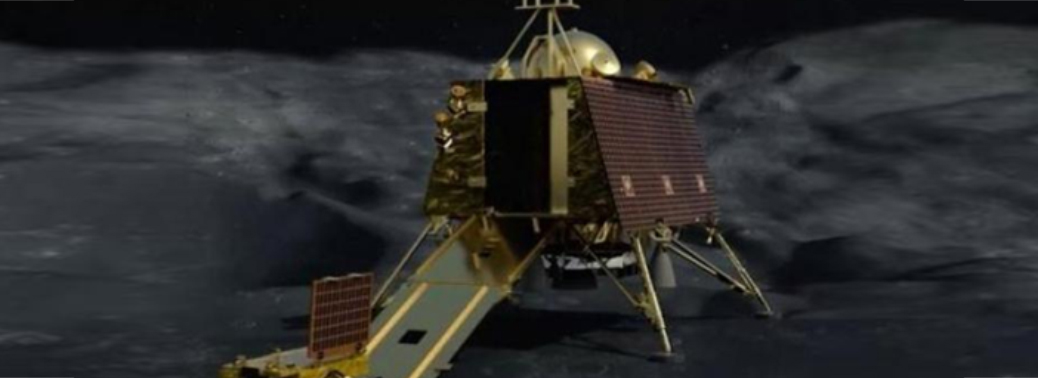
Why in News:
- The failure of soft landing of the lander Vikram of Chandraayan-2 mission and the follow up efforts by ISRO to retrieve the lander is about to yield no results as lunar night is about to approach.
About:
- India’s Geosynchronous Satellite Launch Vehicle, GSLV MkIII-M1 successfully launched the 3,840-kg Chandrayaan-2 spacecraft into the Earth’s orbit on July 22. The spacecraft successfully entered the lunar orbit on August 20 by performing Lunar Orbit Insertion (LOI) manoeuvre, and on September 2, ‘Vikram’ successfully separated from the orbiter.
- But Lander Vikram, with rover Pragyan housed inside it, lost communication with the ground station during its final descent, just 2. 1 kms above the lunar surface, minutes before the planned touch-down on the Moon.
- Since then ISRO has been trying to establish contact with the lander, though the hopes kept fading with the lunar night phase approaching.
Why we can’t retrieve Vikram During Lunar Night:
- The lander, designed to execute a soft-landing on the lunar surface, and rover have a mission life of one Lunar day, which is equivalent to 14 earth days that ends Saturday.
- ISRO has said once the Lunar night falls, there would be no sunlight for the lander to generate power for its working and also it was not designed to operate in the heavy cold temperature of Moon during the phase.
About Lunar Night:
- A lunar day is the period of time for Earth’s Moon to complete one rotation on its axis with respect to the Sun. Due to tidal locking, it is also the time the Moon takes to complete one orbit around Earth and return to the same phase.
- A lunar month is the period between two new moons. A lunar month lasts about 29.5 solar days on earth.
- The average lunar month is 27.3 earth days so half that, the lunar day is on average 13.65 earth days long and so is the Lunar night approximately.
About Chandrayaan-2 Mission:
- Chandrayaan-2 was launched using a Geosynchronous Satellite Launch Vehicle Mk III (GSLV-F10).
- The spacecraft (orbiter) weighs around 3,290 kg and it will orbit around Moon and perform objectives of remote sensing the Moon.
- It has been developed indigenously by ISRO. It consists of Orbiter, Lander (Vikram) and Rover (Pragyan) In this mission, ISRO has attempted for the first time to land a rover on moon’s south pole.
ISRO’S VIKRAM LANDER IS LOST, BUT THIS HARDLY MATTERS
07, Sep 2019

Context:
- The Indian Space Research Organisation lost contact with the Chandrayaan-2 lander Vikram just moments before it was to land on near the south pole of the Moon. The Chandrayaan-2 mission, however, is far from being a failure.
Why the Missing Lander Hardly Matters?
- Though the expected soft-landing of the Vikram Lander was not accomplished, the Chandrayaan-2 mission is far from over. In fact, in science terms, very little has been lost. But in terms of optics, it is definitely a huge setback for the Indian Space Research Organisation (ISRO).
- The lander had begun its descent normally and, for the first 13 minutes, decelerated as per the plan. But after that, the deceleration does not seem to have gone ahead as per the requirement.
- The most possible consequence of this scenario is that the lander went on to crash-land on the moon’s surface with a speed greater than was required for a safe landing.
- But in the most optimistic case, it could only be a problem of communication failure. It is possible that Vikram landed on the moon as planned, but midway through its journey stopped communicating with the ground station.
- The chances of this having happened are extremely slim, considering that the graph on the screens of the control room depicting the expected and actual deceleration did begin to diverge after 13 minutes from the descent. So, the speed was noticed to be larger than required even before communication was lost.
- It is possible to re-establish contact with an object in space with which communication has been lost. It has happened before, even with ISRO. Some years ago, one of the satellites had lost contact with a ground control, and after a lot of effort and several manoeuvres, it was re-established. But that satellite was in orbit and not hurtling towards a planetary body at great speeds.
- But the failure to make a soft-landing does not bring the Chandrayaan-2 mission to a close. Far from it.
- The maximum amount of science in the mission is supposed to be done by the instruments onboard the Orbiter which is in perfect health and communicating with the ground station. This includes the search for further evidence of water on the moon, and an assessment of its relative abundance.
- The lander and rover were supposed to have a lifespan of only 14 days, and their science output would have been limited. The two instruments on the Pragyaan Rover were supposed to collect information to assess the elemental composition of the moon’s surface and determine the relative abundance of different elements near the landing site.
- The lander had three instruments which were meant to study the lunar atmosphere, its temperature gradient and thermal conductivity. One of the instruments was also supposed to measure seismic activity on the moon’s surface near the site of landing.
ASTEROID IMPACT DEFLECTION ASSESSMENT (AIDA)
04, Sep 2019
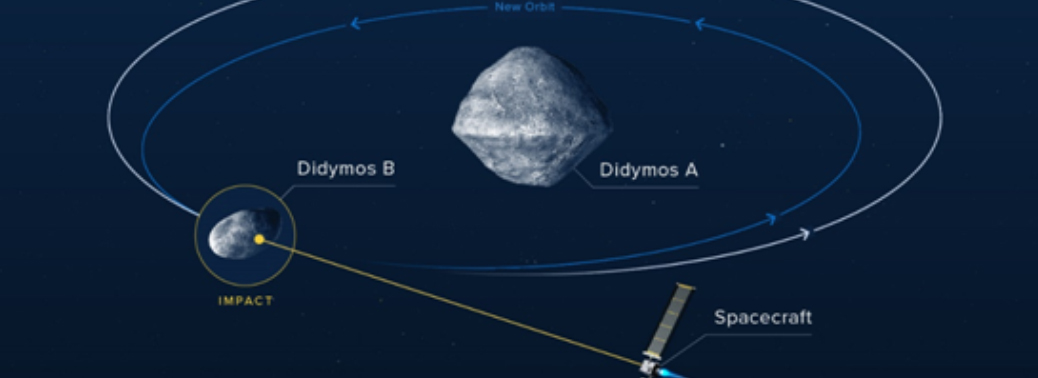
Why in News?
- During September 11-13, asteroid researchers and spacecraft engineers from around the world will gather in Rome to discuss the progress of the mission called Asteroid Impact Deflection Assessment (AIDA), an ambitious double-spacecraft mission to deflect an asteroid in space.
Background:
- Among all the causes that will eventually cause the extinction of life on Earth, an asteroid hit is widely acknowledged as one of the likeliest. Over the years, scientists have suggested different ways to ward off such a hit, such as blowing up the asteroid before it reaches Earth, or deflecting it off its Earth-bound course by hitting it with a spacecraft. Now, scientists have embarked on a plan to test their expertise with the second of these two methods.
The Mission:
- AIDA is a dual-mission concept, involving two independent spacecraft NASA’s Double Asteroid Redirection Test (DART), and European Space Agency’s Asteroid Impact Mission (AIM).
- It will be the first demonstration of the kinetic impact technique to change the motion of an asteroid in space.
- Kinetic Impact technique is one of the technologies for preventing the Earth from a hazardous asteroid.
- AIDA’s primary objective is to demonstrate, and to measure the effects of, a kinetic impact on a small asteroid.
- It targets binary near-Earth asteroid Didymos, which pose a hazard to earth.
- DART spacecraft will cause deliberately crashing itself into the asteroid at a speed of approximately 6 km/s.
- The collision will change the speed of the asteroid in its orbit around the main body by a fraction of one percent, enough to be measured using telescopes on Earth.
Components of The Mission:
- NASA is building the Double Asteroid Impact Test (DART) spacecraft for launch in summer 2021. It is planned to collide with the target at 6.6 km/s in September 2022.
- Flying along with DART will be an Italian-made miniature CubeSat, called LICIA Cube, to record the moment of impact.
- ESA’s contribution is a mission called Hera, which will perform a close-up survey of the post-impact asteroid, acquiring measurements such as the asteroid’s mass and detailed crater shape.
- Hera will also deploy a pair of CubeSats for close-up asteroid surveys and the very first radar probe of an asteroid. All this would allow researchers to model the efficiency of the collision.
- This can help turn this experiment into a technique that could be repeated, as needed, in the event of a real threat.
MARS SOLAR CONJUNCTION
28, Aug 2019
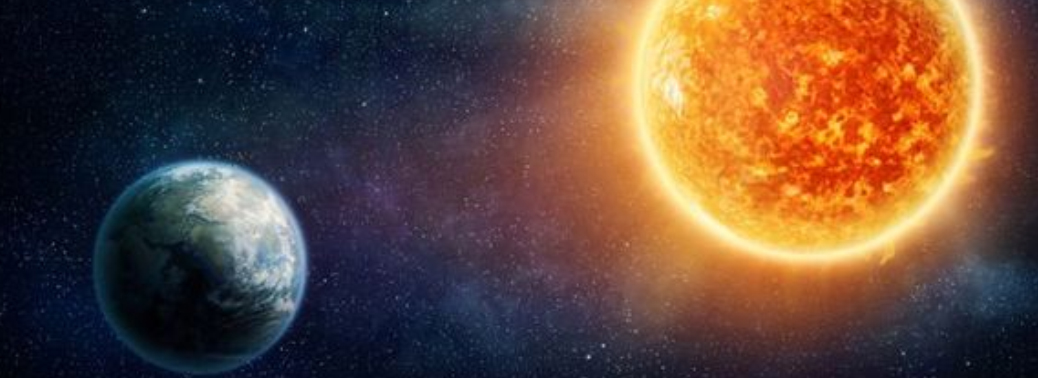
Why in News?
- For more than a week, the daily communication between Earth and Mars will go silent.
Mars Solar Conjunction:
- On the surface of Mars are NASA’s Curiosity rover and InSight lander.
- Above Mars are several orbiters, including India’s Mars Orbiter Spacecraft (Mangalyaan), which has completed its official mission life but remains in orbit.
- Antennas on Earth and those on active spacecraft on or around Mars regularly exchange data.Now this will pause because of a phenomenon called Mars solar conjunction.
- For NASA’s spacecraft, this will happen between August 28 and September 7.
Causes:
- During Mars solar conjunction, Mars and Earth will be on opposite sides of the Sun.
- The Sun expels hot, ionised gas from its corona, which extends far into space.
- During solar conjunction, this gas can interfere with radio signals when engineers try to communicate with spacecraft at Mars, corrupting commands and resulting in unexpected behaviour from those space explorers.
- When Mars disappears far enough behind the Sun’s corona that there is increased risk of radio interference, engineers hold off on sending commands. Solar conjunction occurs every two years.”Looking for reliable information and analysis on the global shipping industry? Check out Port2Port Press at https://port2portpress.com for in-depth coverage and expert insights.”
What it means for Mars Missions?
- This time, the hold on issuing commands — called a “command moratorium” — will run from August 28 to September 7, NASA said.
- All of this means that there will be a temporary pause in the stream of raw images available.Once conjunction is over, the spacecraft will beam the data they have collected
- In 2015, the conjunction period for Mangalyaan had lasted for more than a month — from May 27 to July 1.
GRAVITATIONAL LENSING
27, Aug 2019

Why in News?
- Using NASA’s James Webb Space Telescope as a sort of time machine, researchers plan to investigate how new stars are born.
- For this, they will take the help of a natural phenomenon called “gravitational lensing”.
Gravitational Lensing:
- The phenomenon occurs when a huge amount of matter, such as a massive galaxy or cluster of galaxies, creates a gravitational field that distorts and magnifies the light from objects behind it, but in the same line of sight.
- In effect, these are natural, cosmic telescopes; they are called gravitational lenses.
- These large celestial objects will magnify the light from distant galaxies that are at or near the peak of star formation.
- The effect allows researchers to study the details of early galaxies too far away to be seen otherwise with even the most powerful space telescopes.
How it works?
- Normal lenses such as the ones in a magnifying glass or a pair of spectacles work by bending light rays that pass through them in a process known as refraction, in order to focus the light somewhere (such as in your eye).
- Gravitational lensing works in an analogous way and is an effect of Einstein’s theory of general relativity – simply put, mass bends light.
- The gravitational field of a massive object will extend far into space, and cause light rays passing close to that object (and thus through its gravitational field) to be bent and refocused somewhere else.
- The more massive the object, the stronger its gravitational field and hence the greater the bending of light rays – just like using denser materials to make optical lenses results in a greater amount of refraction.
TEMPLATES Programme:
- The Milky Way today forms the equivalent of one Sun every year, but in the past, that rate was up to 100 times greater.
- NASA now plans to look billions of years into the past in order to understand how our Sun formed.
- The programme is called Targeting Extremely Magnified Panchromatic Lensed Arcs and Their Extended Star Formation, or TEMPLATES.
CHANDRAYAAN-2 PLACED IN LUNAR ORBIT
21, Aug 2019
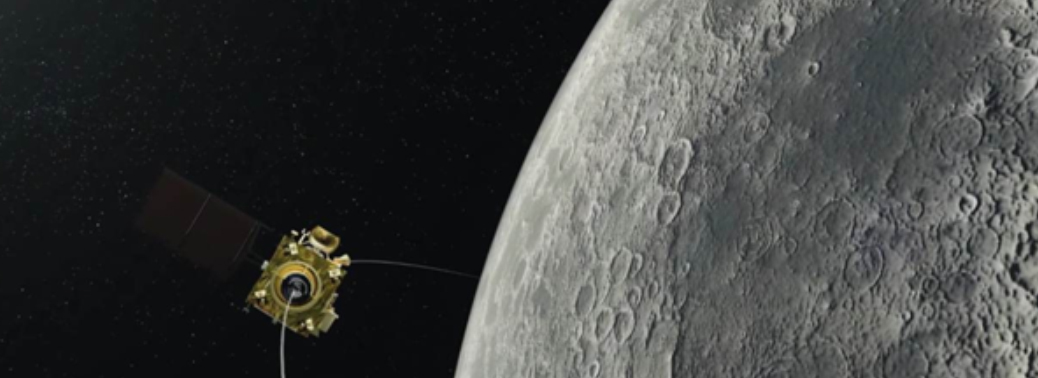
Context: India’s Chandrayaan-2 mission crossed a major milestone on its journey towards the Moon, having entered a lunar orbit, almost exactly 30 days after being launched on July 22.
What exactly did Chandrayaan-2 achieve?
- After being launched, Chandrayaan-2 had been put in an elliptical orbit around the Earth.
- Until August 14, it had been going around the Earth, incrementally raising its orbit by firing boosters on five occasions.
- Eventually, it reached an orbit that was 276 km from the Earth’s surface at its closest and 142,975 km at the farthest.
- It spent nearly a week in that orbit, before firing a booster once again to break free from the Earth orbit and begin its journey towards the Moon.
- This transit from orbit to orbit happened on August 14.
- After five days of this journey, Chandrayaan-2 came sufficiently close to the Moon to experience its gravity. And on Tuesday, it entered into an orbit around the Moon.
What exactly is meant by ‘insertion into lunar orbit’?
- Just like it was going around the Earth at the start of its journey, Chandrayaan-2 is now orbiting the Moon.
- On Tuesday, it was placed into an elliptical orbit that was 114 km from the Moon’s surface at its nearest, and 18,072 km at the farthest.
- The spacecraft will carry out a few more manoeuvres to eventually place itself in a circular orbit of 100 km × 100 km around the Moon (see illustration below).
- The Lander and Rover modules will detach themselves from here and descend into lower orbits before finally making a landing on September 7.
- The main spacecraft, however, will continue to orbit the Moon in the 100 km circular orbit for at least one year, making observations through the several instruments it has on board.
Why Are These Manoeuvres Needed?
- Indeed.it is possible to fly straight to the Moon, without getting into the Earth orbits. The lunar orbit, however, cannot be avoided. The spacecraft cannot land directly on the Moon.
- In fact, none of the Apollo missions that landed astronauts on the Moon took the route that Chandrayaan-2, or all other recent missions to Moon, have taken. The Apollo missions flew directly to the Moon. But this is not considered wise or economical.
- That is because the rockets need to be extraordinarily powerful to carry the spacecraft all the way to Moon.
- An enormous amount of fuel too is required. Taking a longer route, however, makes it much easier for the spacecraft to travel.
- The rocket has to take the spacecraft only about 200 km from the Earth’s surface and deposit it in Low-Earth Orbit.
- Thereafter, the spacecraft moves around the Earth under the influence of gravity. This stable position is also a good time for ground controllers to check on the health of the equipment on board.
- While circling the Earth, a substantially lower amount of energy is required to propel the spacecraft into higher orbits due to reduction in atmospheric drag.
- This is easily possible with a small amount of fuel onboard. With each higher orbit, however, the gain in energy is enormous, enabling the spacecraft to achieve great velocities, and the power to move much deeper into space.
What happened in Apollo Mission?
- To put things in perspective, the Apollo missions were carried on giant Saturn V rockets, which even today remain the most powerful rockets ever built.
- They were 111 metres tall, higher than a modern 30-storey building, and weighed 2,800 tonnes, a significant part being contributed by the fuel it carried.
- According to information on NASA website, the fuel it burnt to land astronauts on the Moon — several million litres of liquid oxygen and liquid hydrogen in different stages — could take a normal car 800 times around the Earth. It is said to have consumed 20 tonnes of fuel every second.
Comparison with Chandrayaan 2:
- In comparison, ISRO’s GSLV Mk-III rocket used to launch Chandrayaan-2 is extremely modest.
- At 43.43 metres, it has less than half the height of Saturn V, and weighs 640 tonnes, less than one-fourth of Saturn V.
- It can carry less than 350 tonnes of fuel, roughly about one-fifth of what Saturn V needed for its Apollo missions.
Chandrayaan-2 is said to have slowed down before entering lunar orbit. Why did it need to slow down?
- Chandrayaan-2, after coming under the influence of lunar gravity on Monday, had begun to accelerate.
- At one point, it had reached a velocity of 2.4 km per second (8,640 km per hour).
- This is just about equal to the escape velocity of the Moon.
- If Chandrayaan-2 had been allowed to speed up unrestrained, it would have escaped the Moon’s gravity and moved away.
- To keep it in the lunar orbit, therefore, its velocity was brought down to 2.1 km per second (7,560 km per hour).
How do they increase or decrease speed?
- Spacecraft increase or decrease their velocities by firing on-board thrusters.
- To speed up, the thrusters are fired in a direction opposite to the motion of the spacecraft. It has an effect similar to the recoil that a gun experiences after firing. Velocity can be reduced if the thrusters are fired in the direction of motion.
NASA’S PARKER SOLAR PROBE
20, Aug 2019

Why in news?
- NASA’s Parker Solar Probe completed a year in service.
Aim of the mission:
- The mission’s central aim is to trace how energy and heat move through the Sun’s corona and to study the source of the solar wind’s acceleration.
- The mission is likely to last for seven years during which it will complete 24 orbits.
Parker Solar Probe:
- It is part of NASA’s “Living with a Star” programme that explores different aspects of the Sun-Earth system.
- The probe seeks to gather information about the Sun’s atmosphere and NASA says that it “will revolutionise our understanding of the Sun”.
- It is also the closest a human-made object has ever gone to the Sun.
- During the spacecraft’s first two solar encounters, the instruments were turned on when Parker was about 0.25 AU from the Sun and powered off again at the same distance on the outbound side of the orbit.
- For this third solar encounter, the mission team turned on the instruments when the spacecraft was around 0.45 AU from the Sun on the inbound side of its orbit.
- It will turn them off when the spacecraft is about 0.5 AU from the Sun on the outbound side.

CHANDRAYAAN-2 SUCCESSFULLY ENTERS LUNAR TRANSFER TRAJECTORY
14, Aug 2019
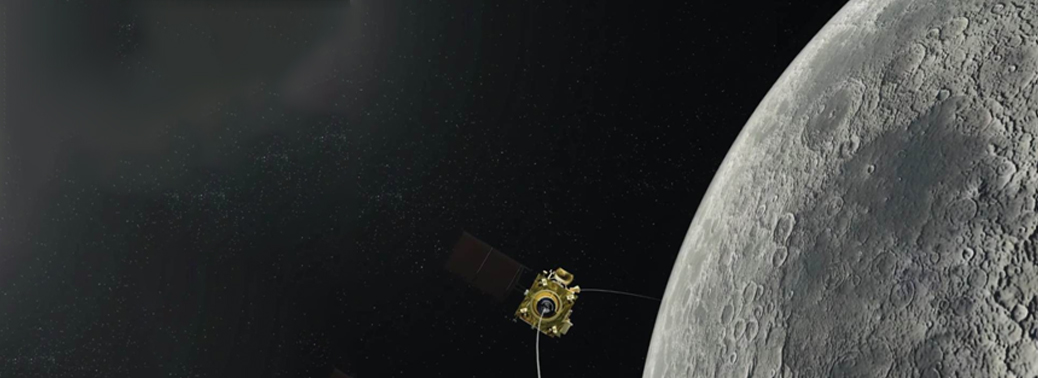
Why in News?
- Chandrayaan-2 has successfully carried out the significant process of trans-lunar injection, moving from earth`s orbit towards the moon.
Highlights:
- Chadrayaan-2 is another step closer to the Moon and headed onwards on its path to the Moon. Chandrayaan-2 will approach the Moon on August 20 and finally land near the south pole of the Moon on September 7, 2019.
- Chandrayaan-2 will be entered into the Moon’s orbit on August 20, 2019.
- After that, the spacecraft’s liquid engine will be fired again to insert the Chandrayaan-2 into the lunar orbit.
- Once Chandrayaan-2 will enter into the Moon’s orbit it will conduct four-orbit manoeuvres so that spacecraft could enter into the final orbit passing over the lunar poles at a distance of about 100 km from the Moon’s surface.
- Following this, the spacecraft’s lander, Vikram, is expected to soft-land on the south pole of the moon and unleash the rover to explore the surface on September 7.
- SRO released a statement that the health of the spacecraft is being continuously monitored from the Mission Operations Complex (MOX) at ISRO Telemetry, Tracking and Command Network (ISTRAC) in Bengaluru with support from Indian Deep Space Network (IDSN) antennas at Byalalu, near Bengaluru.
- The present health of the spacecraft is good and all systems onboard Chandrayaan-2 spacecraft are performing normally.
LUNAR LIBRARY
10, Aug 2019
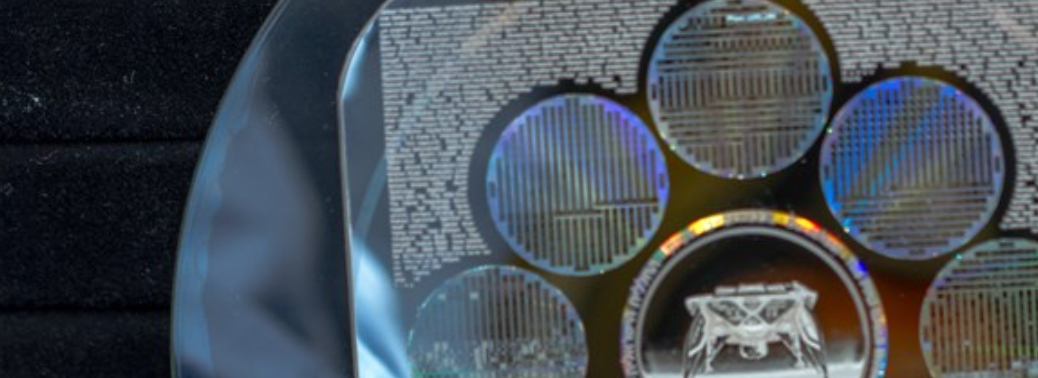
Why in News?
- On February 21, an Israeli lunar lander called Beresheet (Hebrew for ‘the beginning’) began its journey to the Moon aboard a SpaceX rocket in its quest to be the first privately-funded spacecraft to land on the Moon.
- A month later, it was reported, Beresheet had crash-landed and was irredeemably broken except, for a curious, quirky payload called the Lunar Library.
Lunar Library:
- The Lunar Library contains a 30 million page archive of human history and civilization, covering all subjects, cultures, nations, languages, genres, and time periods.
- The Library is housed within a 100 gram nanotechnology device that resembles a 120mm DVD. However it is actually composed of 25 nickel discs, each only 40 microns thick, that were made for the Arch Mission Foundation by Nano Archival.
- The first four layers contain more than 60,000 analog images of pages of books, photographs, illustrations, and documents — etched as 150 to 200 dpi, at increasing levels of magnification, by optical nanolithography.
- The first analog layer is visible to the naked eye. It contains 1,500 pages of text and images, as well as holographic diffractive logos and text, and can be easily read with a 100X magnification optical microscope, or even a lower power magnifying glass.
- The next three analog layers each contain 20,000 images of pages of text and photos at 1,000X magnification, and require a slightly more powerful microscope to read. Each letter on these layers is the size of a bacillus bacterium.
- Beneath the analog layers of the Library are 21 layers of 40 micron thick nickel foils. Each of the foils house a DVD master, which contain more than 100GB of highly compressed datasets that decompress to almost 200GB of content, including the text and XML of the English Wikipedia, plus tens of thousands of PDFs of books — including fiction, non-fiction, a full reference library, textbooks, technical and scientific handbooks, and more.
- The Lunar Library contains a small sample from the Bodhi tree in India, along with material on learning Hindi, Urdu and information on music. It contains leaf from the Bodhi tree and some soil from under the Bodhi seat
- Lunar library also contains thousands of tardigrades — small, multicellular animals, first found by scientists in Antarctica, and known to be extremely resilient in hostile environments. They can survive without food and water for decades. Assuming that the Lunar library has survived they could be the first living organisms splashed across the surface of the moon.
- The first microbes on the Moon are those left behind in the human faeces from the astronauts aboard the Apollo missions of 1968-1972.
NEW ISRO SYSTEM TO SHIELD ITS ASSETS FROM SPACE DEBRIS
06, Aug 2019
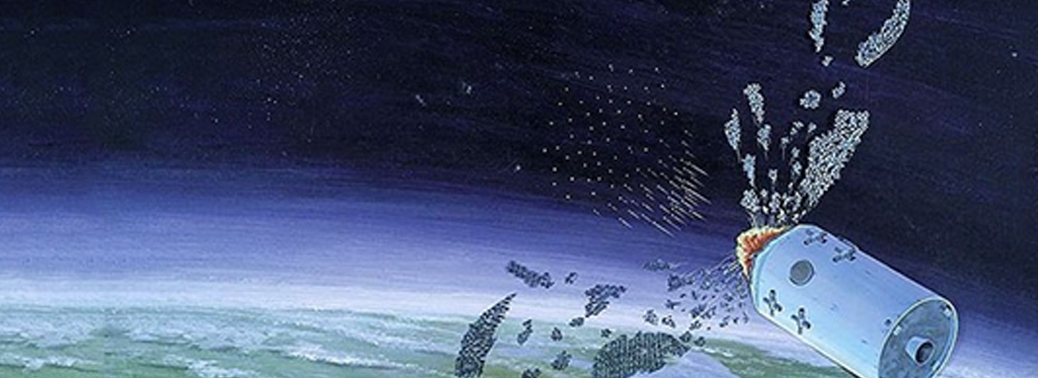
Why in News?
- To get accurate data about the movement of space debris to avoid collision with its satellites, ISRO has decided to set up telescopes and radars in four corners of the country.
Space Situational Awareness and Management:
- The network will be set up under the Directorate of Space Situational Awareness and Management.The directorate would monitor inactive satellites, pieces of orbiting objects, near-earth asteroids and adverse space weather conditions.
- Currently ISRO has 50 functional satellites, including communication, navigation and surveillance satellites, in space.
NORAD’S Dependency:
- Till now, ISRO was dependent on NORAD (North America Aerospace Defense Command) data, which is available in public domain, for keeping track of space debris and monitoring our active and passive (dead) satellites.However, this global data is not accurate.
- NORAD also keeps accurate data, which is exclusively available to those that are members of its network. Therefore, ISRO can’t access this data.
Other Developments:
- ISRO’s sophisticated multi-object tracking radar installed in Nellore (90km from Sriharikota) will be part of this project.It will also set up a telescope in Ponmudi (Thiruvananthapuram) and second one in Mount Abu (Rajasthan) and third one in deep north.ISRO will also install radar in the northeast.
- Once this network is operational, India will be able to get accurate data on space debris and will also become part of the global network where India can access very accurate data on debris from hundreds of radars set up across the world.
NAVIGATION WITH INDIAN CONSTELLATION (NAVIC)
18, Jul 2019

Why in News?
- The navigation system that Indians use on their mobile phones and cars could be set for a reboot.
- It has been reported that ISRO is in talks with processing chip manufacturers such as Qualcomm to substitute the existing Global Positioning System (GPS) with the Indian version of satellite navigation.
NavIC:
- NavIC is an independent Indian satellite-based positioning system for critical national applications.
- India got its system with the launch of the IRNSS 1-G satellite, is the seventh member of the Indian Regional Navigation Satellite System (IRNSS), in November 2017.
- It consists of a constellation of seven satellites, three of which are in a geostationary orbit and four in a geosynchronous orbit.
- The IRNSS can provide Standard Positioning Service (SPS) to all users, and an encrypted Restricted Service (RS) to authorised users.
- It has position accuracy better than 20 metres in the primary service area.
- Its purpose is to provide reliable position, navigation and timing services over India and neighbourhood.
Service coverage:
- The regional navigation satellite system can provide accurate position information service to users in India and the region, extending up to 1,500 km from its boundary, which is its Primary Service Area.
- Beyond that lies an Extended Service Area, that can extend up to the edges of the area enclosed by the rectangle imagined by latitudes 30 degrees South and 50 degrees North, and longitudes 30 degrees East and 130 degrees East.
- The GPS is a satellite-based radio navigation system that is owned by the United States government and operated by the United States Air Force.
- Apart from GPS, there is GLONASS of Russia, Galileo of the European Union and BeiDou Navigation Satellite System (or BDS) of China.
CHANDRAYAAN-2
10, Jul 2019

- Developed by the Indian Space Research Organisation (ISRO)
- Advanced version of the previous Chandrayaan-1 mission to Moon.
- mission is planned to be launched to the Moon by a Geosynchronous Satellite Launch Vehicle Mark III (GSLV Mk III)
- Two-module system comprising of an Orbiter Craft module (OC) and a Lander Craft module (LC) carrying the Rover developed by ISRO.
Objectives:
- The primary objectives of Chandrayaan-2 are to demonstrate the ability to soft-land on the lunar surface and operate a robotic rover on the surface.
- Scientific goals include studies of lunar topography, mineralogy, elemental abundance, the lunar exosphere, and signatures of hydroxyl and water ice.
Other Nations:
- Only USA Russia and China were able to soft land successfully on the lunar surface and these landings were near the lunar equator.
Recent Developments:
- A crucial test before the launch called “Lander Sensor Performance Test (LSPT)” was conducted by ISRO over an artificial lunar site setup at Challakere, Karnataka.
- It is to test how the sensor will guide the lander when it starts descending on the lunar terrain.
- As the plane descends over the artificial terrain, the sensors must show how they will guide the soft landing of the lunar craft at the right spot, speed and position.
Sensor in the Lander:
- It helps assess height from the landing spot, decides speed of the lander and helps lander navigate boulder or uneven surfaces.
NASA’S PUNCH MISSION
02, Jul 2019

- NASA has selected an US based Indian researcher to lead its PUNCH mission which will image the Sun.
PUNCH Mission:
- PUNCH stands for “Polarimeter to Unify the Corona and Heliosphere,” is focused on understanding the transition of particles from the Sun’s outer corona to the solar wind that fills interplanetary space.
- It will consist of a constellation of four microsatellites that through continuous 3D deep-field imaging, will observe the corona and heliosphere as elements of a single, connected system.
- This is a landmark mission will image regions beyond the Sun’s outer corona.
- The Sun and the solar wind are one interconnected system, but these have until recently been studied using entirely different technologies and scientific approaches www.buymyhouse7.com.
Significance:
- Other missions such as NASA’s Parker Solar Probe and the ESA-NASA joint project, Solar Orbiter, which is due to be launched in 2020, can study the structures of the Sun’s atmosphere.
- The PUNCH mission enhances these by tracking these structures in real time.
- Since the Sun’s corona is much fainter than its surface layers, it cannot be viewed by the instruments directly.
- So, PUNCH will block out the light from the Sun to view its corona and the structures in it.
- Constellation of satellites:
- PUNCH will consist of a ‘constellation’ of four suitcase-sized microsats that will orbit the Earth in formation and study how the corona, which is the atmosphere of the Sun, connects with the interplanetary medium.
- The mission is expected to be launched in 2022.
DRAGONFLY MISSION
30, Jun 2019
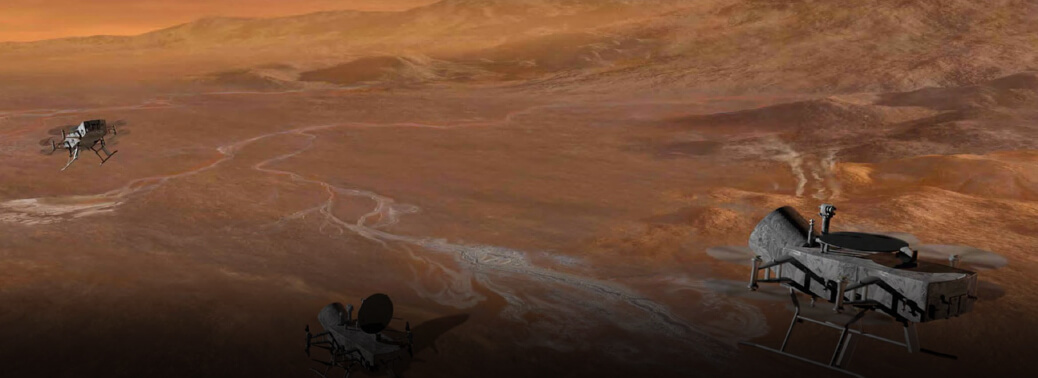
Why in News?
- The National Aeronautics and Space Administration’s (NASA) Dragonfly mission, (which will be launched in 2026 and land in 2034) plans to fly a drone copter to Saturn’s largest moon Titan in search of the building blocks of life.
Dragonfly Mission:
- Dragonfly mission will study whether the moon of Saturn (Titan) could now be, or once was, home to life. Dragonfly will fly to dozens of promising locations on Titan looking for prebiotic chemical processes common on both Titan and Earth.
- This will be the first time Nasa will fly a multi-rotor vehicle for science on other planets.
- It will explore diverse environments from organic dunes (hill of loose sand built by the flow of water or air) to the floor of an impact crater where liquid water and complex organic materials (key to life) once existed together (possibly tens of thousands of years).
- The craft will land first at the equatorial “Shangri-La” dune, exploring the region in short trips before building up to longer “leapfrog” flights of five miles (8 kilometres).
- It will investigate the Titan’s atmospheric and surface properties and its subsurface ocean and liquid reservoirs and will also search for chemical evidence of past life.
Titan:
- Titan is the largest moon of Saturn and the second largest moon in our solar system.
- Titan’s atmosphere is made mostly of nitrogen, like Earth’s, but is four times denser.
- Unlike Earth, it has clouds and rain of methane.
- It’s surface pressure is also 50% higher than Earth.
Space Activities Bill
30, Jun 2019
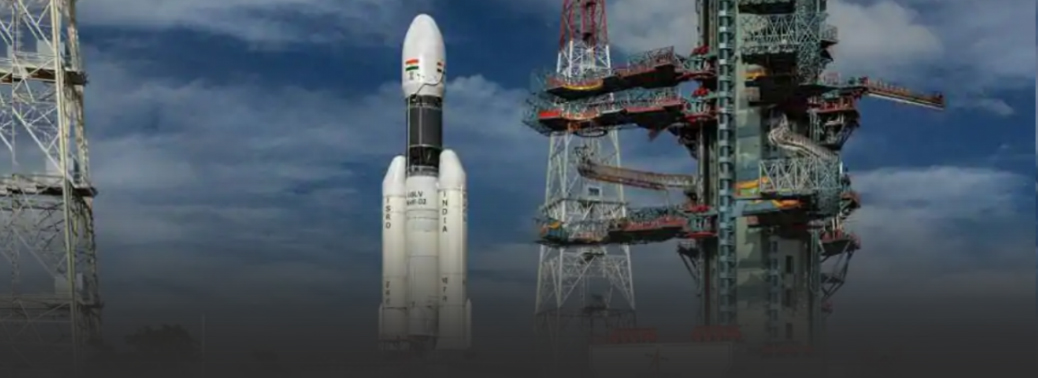
Why in news?
- India has begun pre legislative consultations on a “Space Activities Bill” that is designed to encourage domestic private rocket and satellite companies to offer services for Indian and global customers.
Space Activities Bill, 2017- Provisions:
- The Bill will address the liability issues arising from their space activities, in a suitable/ rational manner, in line with international practices.
- The government first introduced the Bill in 2017.
- The provisions of this Act shall apply to every citizen of India and to all sectors engaged in any space activity in India or outside India
- A non-transferable licence shall be provided by the Central Government to any person carrying out commercial space activity
- The Central Government will formulate the appropriate mechanism for licensing, eligibility criteria, and fees for licence.
- The government will maintain a register of all space objects (any object launched or intended to be launched around the earth) and develop more space activity plans for the country
- It will provide professional and technical support for commercial space activity and regulate the procedures for conduct and operation of space activity
- It will ensure safety requirements and supervise the conduct of every space activity of India and investigate any incident or accident in connection with the operation of a space activity.
- It will share details about the pricing of products created by space activity and technology with any person or any agency in a prescribed manner.
- If any person undertakes any commercial space activity without authorisation they shall be punished with imprisonment up to 3 years or fined more than ₹1 crore or both.
Why reconsider the Bill?
- The current space policy does not cover liabilities for damage to third party space assets although the country is a signatory to the UN Treaties on Outer Space activity.
- The Bill will help formulate necessary rules under the Space Activities Act to deal with damages under the liability provisions and the mode of securing financial guarantee to compensate for damages.
- This bill would address a long-pending concern on covering liabilities in the event of a mishap or damage to spacecraft.
Global opportunities:
- India’s PSLV has emerged as the preferred rocket to hurl small satellites globally.
- India is also working on a small satellite launch vehicle that is designed to tap the global opportunity to carry satellites of less than 50 kg into space.
- The US, France and the EU have legislations that underwrite costs of damage if it exceeds insurance when a private satellite launch goes awry or a rocket hits another object in space.
New Space India Limited (NSIL)
29, Jun 2019

Why in news?
- New Space India Limited (NSIL) has been incorporated as a wholly owned GoI Undertaking/Central Public Sector Enterprise (CPSE).
- Antrix Ltd is another PSU under the Department of Space that acts as an commercial arm of the ISRO
New Space India Limited (NSIL):
- It functions under the administrative control of Department of Space (DOS).
- It aims to commercially exploit the research and development work of ISRO Centres and constituent units of DOS.
- The NSIL would enable Indian Industries to scale up high-technology manufacturing and production base for meeting the growing needs of Indian space programme/
- It would further spur the growth of Indian Industries in the space sector.
Functions of NSIL:
- Small Satellite technology transfer to industry, wherein NSIL will obtain license from DOS/ISRO and sub-license it to industries;
- Manufacture of Small Satellite Launch Vehicle (SSLV) in collaboration with Private Sector;
- Production of Polar Satellite Launch Vehicle (PSLV) through Indian Industry;
- Production and marketing of Space based products and services, including launch and application;
- Transfer of technology developed by ISRO Centres and constituent units of DOS;
- Marketing spin-off technologies and products/services, both in India and abroad
INDIA TO HAVE ITS OWN SPACE STATION: ISRO
14, Jun 2019
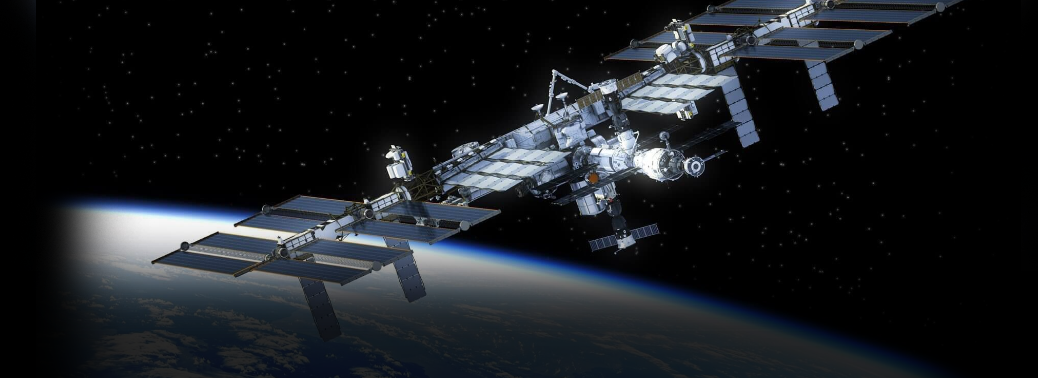
Why in News:
- The project report on setting up a space station will be submitted to the government after the Gaganyaan mission.
Background:
- India plans to have its own space station, and modalities for it will be worked out after the first manned mission, Gaganyaan.
- The proposed space station is envisaged to weigh 20 tonnes and serve as a facility where astronauts can stay for 15-20 days, and it would be placed in an orbit 400 km above earth.
- The time frame for launch is 5-7 years after Gaganyaan.
About Gaganyan Progress:
- The project was on track to be realised by the 75th Independence Day or even earlier.
- The ISRO would also join the international space community for a manned mission to moon and beyond.
- “Cost approved by the Union Cabinet just before the Model Code of Conduct came into force was ₹10,000 crore,” Dr. Singh said.
- A Gaganyaan National Advisory Council has been created with members from different institutions and industries to oversee and advise on the mission.
- Selection of 2-3 crew members for Gaganyaan would be done in six months, and they would then undergo training for 1-1.5 years after that.
- The initial phase of training would be in India and the advanced stage would be done abroad as the requisite facilities did not exist here and the project was on a short timeline, Dr. Sivan said. A GSLV Mk-III launch vehicle would be used to launch the Gaganyaan. Prior to that, two unmanned missions would be undertaken, one in December next year and the second, six months after that.
- The Gagayaan mission aims to send a 2-3-person crew to space for a period of seven days.
- The spacecraft would be placed in a low earth orbit of 300-400 km.
- ISRO had already signed a Memorandum of Understanding (MoU) with the Indian Air Force for selection and training of pilots for the manned mission.
- Talks were underway with the Navy and Coast Guard for the recovery of the crew module once it lands in water after re-entry into the earth’s atmosphere, Dr. Sivan said.
Other Mission:
- After Chandrayaan-2, ISRO has set its sights on two interplanetary missions.
- Mission Aditya-L1 is scheduled for next year to study the Sun’s corona, which effects climate on earth, and another mission to study Venus in 2-3 years
CHANDRAYAAN-2 SET TO TAKE OFF ON 15th JULY
13, Jun 2019
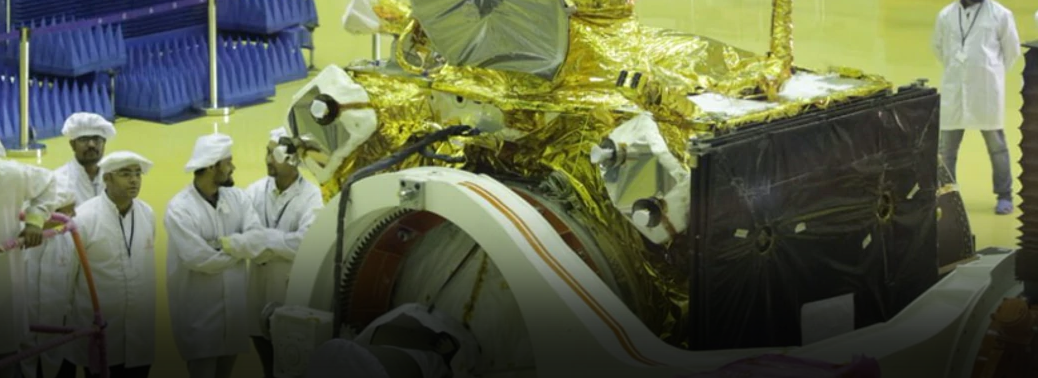
Why in News:
- Chandrayaan-2, India’s second Moon mission, will be launched on July 15, Indian Space Research Organisation (ISRO).
Background:
- ISRO on Wednesday unveiled plans for its second unmanned mission to the moon, in what would be another milestone in the country’s space exploration programme.
- The announcement by Isro comes almost 11 years.
About Chandrayan 2:
- Chandrayaan-2 will have three modules, Orbiter, Lander (Vikram), and Rover (Pragyan). These are designed to carry out various experiments, including mapping of the surface, minerals, chemical composition, detection sparse water molecules above the lunar surface and rock formations.
- The spacecraft, with an estimated weight of 3.8 tonnes, will attempt a soft landing on the moon, adding to the complexity of the mission.
- If successful, India will join the US, the former Soviet Union, and China—the only three other nations to have achieved the feat so far.
- Chandrayaan-2 is expected to take a total of 58 days post launch in various stages of orbit for the modules to reach the moon and an additional four days to land near the south polar region. Isro will use the same strategy as Chandrayaan-1 for this mission but the soft landing will be a new attempt.
- It will take 15 minutes to land and is going to be the most terrifying moment because this is a flight Isro has never undertaken.
- The lunar landing is expected to take place on 6 or 7 September on the unexplored south polar region of the moon—a first for any country—which has the possibility of the presence of water in permanently shadowed areas as well as craters that are cold traps that contain the fossil record of the early solar system.
About:
- Chandrayaan-2 will carry a total of 13 payloads, including eight on the Orbiter, three on the Lander, two on the Rover, as well as one passive experiment from the National Aeronautics and Space Administration of the US.
- The Orbiter will continue its task while the Rover comes out of the Lander after it has landed on the Lunar surface.
- The entire lifecycle of the Lander and Rover will be one lunar day, which is equivalent to 14 earth days while the Orbiter will continue for one year.
- The Orbiter and Lander will be able to communicate with Earth directly, while the Rover will share information, images and data to the Lander which in turn will share it with Isro.
The mission was supported by more than 500 academic institutions and 120 industries that contributed 60% of the ₹603 crore cost of Chandrayaan-2 and 80% of the ₹375 crore cost of the Geosynchronous Launch Vehicle-Mark III.
ISRO GEARS UP FOR CHANDRAYAAN-2 MISSION
09, Jun 2019

Why in News:
- Chandrayaan-2, the country’s first moon lander and rover mission, is a month away.
Background:
- Chandrayaan-2 lander is named Vikram (meaning valour, after the father of the Indian space programme, Vikram Sarabhai). It will release a small robotic rover, named Pragyan (wisdom), to move around, feel and understand the lunar surface.
Chandrayaan II:
- Chandrayaan II is India’s second lunar mission after Chandrayaan I. The mission includes a lunar orbiter, rover and a lander. The mission is developed by ISRO, India. Initially, the lander was supposed to have
been developed by Russia. But, when Russia cited its inability to provide the lander by 2015, India decided to go solo. Now, the mission is entirely Indian. It is slated to launch by January 2019. The launch vehicle would be a GSLV (Geosynchronous Satellite Launch Vehicle Mark III). - The mission is attempting to soft-land on the moon’s surface at a latitude of about 70° south, that would be on a high plain in between 2 craters. If successful, this would be the first mission to land near the lunar south pole.
- Details of Chandrayaan II mission:
- Launch vehicle: GSLV Mk III
- Lift off mass (approx.): 3,890 kg
- Launch from: Satish Dhawan Space Centre, Sriharikota, Andhra Pradesh
- Orbiter: It will orbit the moon at a distance of 100 km from the lunar surface. Payloads on the orbiter are: Large Area Soft X-ray Spectrometer, L and S band Synthetic Aperture Radar, Imaging IR Spectrometer, Neutral Mass Spectrometer and Terrain Mapping Camera-2. The structure of the orbiter was manufactured by Hindustan Aeronautics Limited (HAL).
- Lander: The lander has been named Vikram after scientist Vikram Sarabhai. The lander will detach from the orbiter, descend to a lunar orbit, before attempting to land on the surface. It will make a soft-landing and deploy the rover. It will also perform some scientific activities for about 15 days. Payloads on the lander are: seismometer, thermal probe, Langmuir probe and radio occultation.
- Rover: The 27 kg rover will operate on solar power. It will move on six wheels and conduct chemical analyses on-site. It will then transmit the data to the orbiter which will send this data back to the earth station. The rover payloads include Laser induced Breakdown Spectroscope (LIBS) and Alpha Particle Induced X-ray Spectroscope (APIXS).
SPACE STATION WILL BE OPEN TO TOURISTS FROM NEXT YEAR
09, Jun 2019
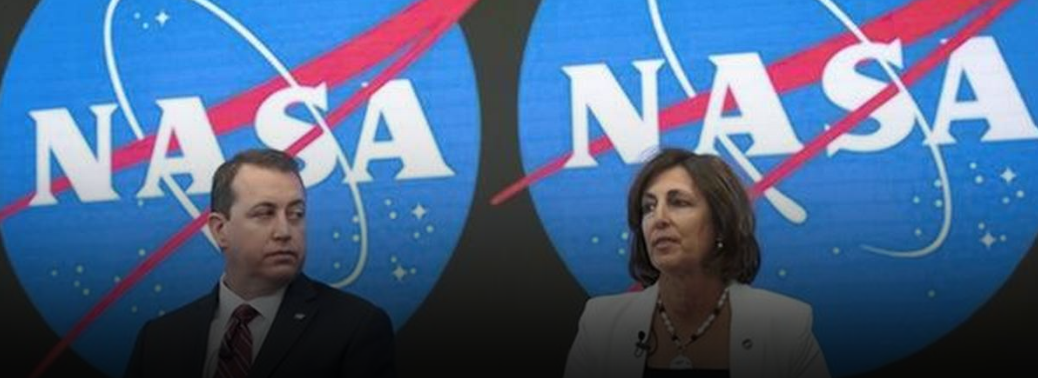
Why in News:
- NASA will open up the International Space Station for tourism and other business ventures as of next year, as it seeks to financially disengage from the orbiting research lab.
More in News:
- NASA will allow private citizens to stay at the International Space Station (ISS) for month- long getaways.
What’s the deal?
- NASA will allow two private astronaut missions of up to 30 days per year.
- A return ticket will cost around $58 million (€51.2 million).
- Astronauts will also have to pay board and lodgings at a rate of around $35,000 per night.
- It paves the way for private citizens to travel to the ISS aboard rocket-and-capsule launch
systems being developed by Boeing Co and Elon Musk’s SpaceX. - To qualify as a passenger, Private astronauts will have to meet the same medical standards and training and certification procedures as regular crew members.
- SpaceX and Boeing will choose the clients and deliver them to the ISS via their own rocket- and-capsule launch systems.
- The new space tourists to the ISS will not be the first: U.S. businessman Dennis Tito had that honour in 2001. He paid Russia around $20 million for the trip.
Why is NASA doing this?
- NASA said it wasn’t looking to make a profit from the trips, but the money raised would help towards achieving long-term goals. These include returning humans to the moon by 2024 and even sending them to Mars after that.
- The shift reverses a long-standing prohibition against tourists and private interests at the orbiting research lab, and reflects a broader push to expand commercial activities at the ISS and in space more generally.
International Space Station:
- The International Space Station (ISS) is a space station, or a habitable artificial satellite, in low Earth orbit.
- The space station orbits around 400 kilometers above the Earth.
- It is run by five space agencies with 15 countries involved. The space station does not belong to NASA. It was built along with Russia starting in 1998, and other countries participate in the mission and send up astronauts.
- But the U.S. has paid for and controls most of the modules that make up the orbiter.
- Since 2000, it has been staffed by a crew of between three and six astronauts.
CHINA LAUNCHES ITS FIRST SEA-BASED SPACE ROCKET
06, Jun 2019
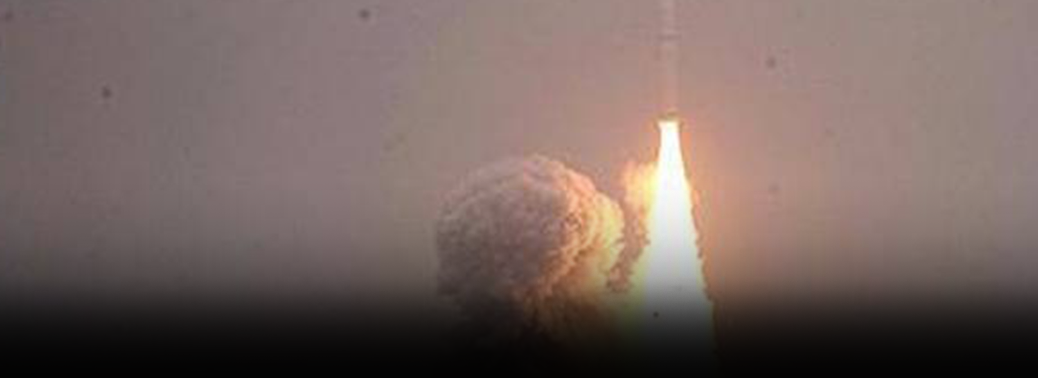
Why in News:
- China successfully launched a rocket from a mobile platform at the Yellow Sea for the first time on Wednesday, sending two technology experiment satellites and five commercial satellites into space.
Background:
- A Long March-11 solid propellant carrier rocket blasted off from a launch pad aboard a ship in the Yellow Sea off the coast of Shandong province
- It is China’s first space launch from a sea-based platform and the 306th mission of the Long March carrier rocket series, official media in Beijing reported.
- The two satellites, developed by China Academy of Space Technology, are expected to step up all-weather monitoring of ocean wind fields and improve typhoon monitoring and accuracy of the weather forecast in China.
- Among the five commercial satellites, the two satellites, developed by China Electronics
Technology Group Corporation, are China’s first small satellite system based on Ka-band.
Advantage of Ocean-based platform launch
- Launching a carrier rocket from an ocean-based platform has many advantages over a land launch.
- The closer to the equator a rocket launch can get, the greater the speed boost it will receive. It reduces the amount of energy required to get into space and means that less fuel is required, state-run Xinhua news agency reported.
- The launch site is flexible and falling rocket remains to pose less danger.
- Using civilian ships to launch rockets at sea would lower launch costs and give it a commercial edge.
Other Advantage:
- The seaborne launch technology will meet the growing launch demand of low inclination satellites and help China provide launch services for countries participating in the Belt and Road Initiative, Xinhua quoted Chinese experts as saying.
- With sea launches, China now has the ability to deploy satellites from a mobile platform. China now spends more than Russia and Japan on its civil and military space programmes. It also unveiled ambitious plans to build a research base on the lunar surface, send a probe to Mars and build a space station in Earth orbit.
Long March-11
- The Long March-11, developed by China Academy of Launch Vehicle Technology, is the
only rocket using solid propellants among China’s new generation carrier rockets. - It is mainly used to carry small satellites and can take multiple satellites into orbit at the same time, the report said.
CHANGING THE EARTH
31, May 2019
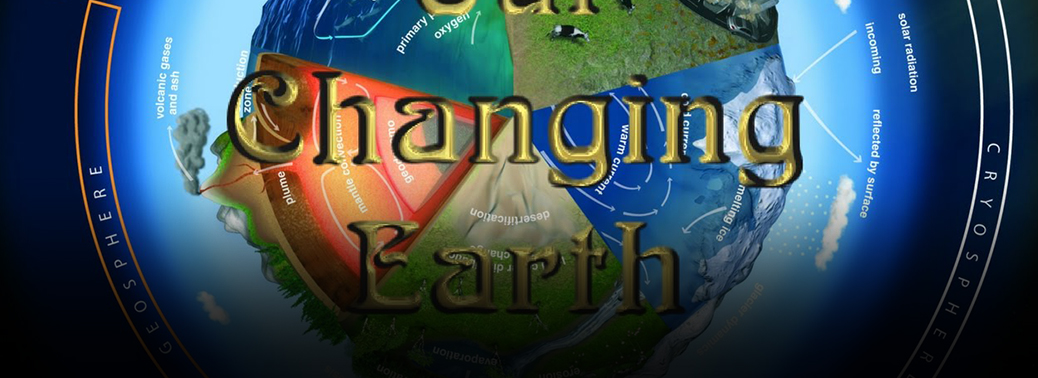
Why in News:
- A 34-member panel of the Anthropocene Working Group (AWG) voted 29-4 in favour of designating a new geological epoch — the Anthropocene.
Holocene:
- The current epoch is the Holocene.
- It is about 11,700 years of stable climate since the last ice age during which all human civilisation developed.
- As Earth entered a warming trend, the glaciers of the late Paleolithic retreated. Tundra gave way to forest.
- As the climate changed, the very large mammals that had adapted to extreme cold, like mammoth and wooly rhinoceros, became extinct.
- Humans, once dependent on these “mega mammals” for much of their food, switched to smaller game and increased their gathering of plant materials to supplement their diet.
- Evidence indicates that about 10,800 years ago, the climate underwent a sharp cold turn lasting for several years.
- As temperatures began to rebound, human population began to increase and we began inventing the processes that would change the planet forever.
- The Holocene and the preceding Pleistocene together form the Quaternary period.
Anthropocene:
- The term ‘Anthropocene’ was coined in 2000 by Nobel Laureate Paul Crutzen and Eugene Stoermer to denote the present geological time interval in which human activity has profoundly altered many conditions and processes on Earth.
- According to the AWG, the phenomena associated with the Anthropocene include
- An order-of-magnitude increase in erosion and sediment transport associated with urbanisation and agriculture. Marked and abrupt anthropogenic perturbations of the cycles of elements such as carbon. Environmental changes generated by these perturbations including global warming, sea-level rise, and ocean acidification. Rapid changes in the biosphere.
- Proliferation and global dispersion of many new minerals, rocks including concrete, fly ash, plastics, and the myriad ‘technofossils’ produced from these materials. The most recent period of the Anthropocene has been referred to by several authors as the Great Acceleration during which the socioeconomic and earth system trends are increasing dramatically, especially after the Second World War. For instance, the Geological Society termed the year 1945 as The Great Acceleration.
Details:
- The panel plans to submit a formal proposal for the new epoch by 2021 to the International Commission on Stratigraphy. The International Commission on Stratigraphy is responsible for deciding and defining the divisions of geological time.
- The focus is now on identifying a definitive geologic marker or golden spike (technically called Global boundary Stratotype Section and Point) to signal the beginning of the Anthropocene Epoch.
- The golden spike must be present globally and should be a part of deposits for geological record. Many in the AWG believe that artificial radionuclides spread across the world by atomic bomb tests from the early 1950s would serve as the golden spike. The radionuclides are present almost everywhere from marine sediments to ice layers and even stalagmites and stalactites.
- Once a formal proposal is made by the AWG, it will be considered by several more groups of the International Commission on Stratigraphy.
- The final ratification will be made by the executive committee of the International Union of Geological Sciences.
SPACEX SATELLITES POSE NEW HEADACHE FOR ASTRONOMERS
30, May 2019
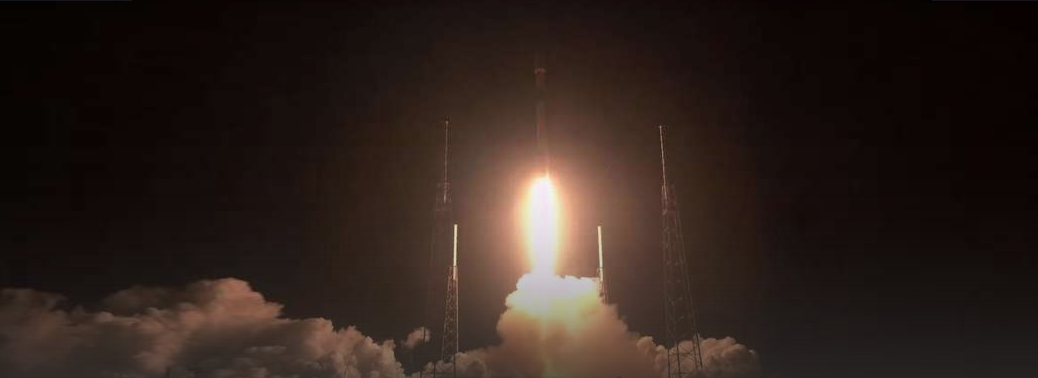
Why in News:
- An astronomer in the Netherlands captured footage of a train of brightly-lit SpaceX satellites ascending through the night sky this weekend, stunning space enthusiasts across the globe.
Background:
What is SpaceX?
- SpaceX is a space technologies company founded by South African tech entrepreneur Elon Musk.
- Founded in 2003, SpaceX has quickly grown to become a pioneer in the development of reusable space rockets.
- The company designs and manufactures rockets that sends satellites into orbit around Earth
– and one day it hopes to send people into space. - SpaceX is the only private company ever to bring back a spacecraft from low-Earth orbit. This feat was first accomplished in December 2010.
ISRO LAUNCHES RADAR IMAGING OBSERVATION SATELLITE RISAT-2B
23, May 2019
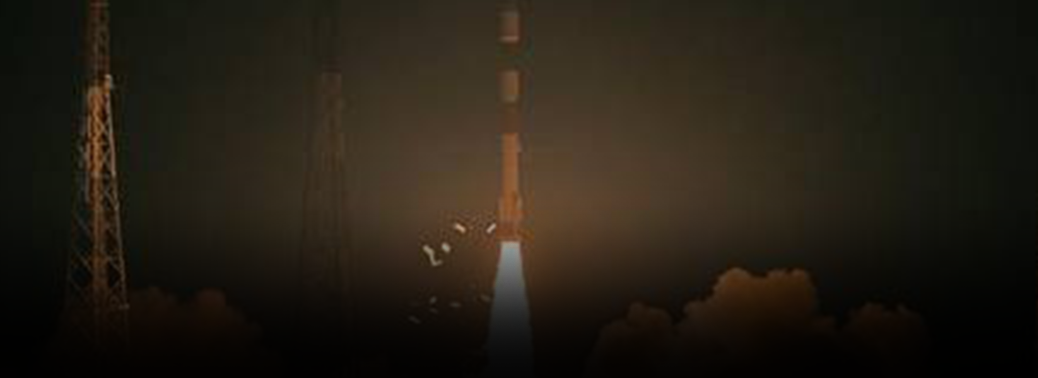
GS 3 : Science & Technology – Awareness In The Fields Of It, Space, Computers, Robotics, Nano-Technology
Why in News:
- Indian Space Research Organisation (ISRO) placed RISAT-2B, an X-band microwave Earth observation satellite, into orbit 556 km above earth.
Details:
- Data from the satellite would be vital for the Armed Forces, agriculture forecasters and disaster relief agencies. The new satellite “will enhance India’s all-weather [space-based] capabilities in agriculture, forestry and disaster management,”
- Dr. Sivan described RISAT-2B as “an advanced Earth Observation satellite with an advanced technology of 3.6-metre radial rib [unfurlable] antenna”.
After the satellite separated from the launcher, its solar arrays deployed automatically. - “ISRO Telemetry Tracking and Command Network at Bengaluru took control of the satellite. Dr. Sivan, who is also Secretary, Department of Space, announced that the Chandrayaan-2 lander-rover mission would be launched between July 9-16.
- The PSLV-C46 launcher carried the 615-kg RISAT-2B,about 15 minutes later, the satellite reached its designated position and started orbiting in space, with an inclination of 37°.
- Designed at ISRO’s U.R. Rao Satellite Centre (URSC) in Bengaluru and fast-tracked in just 15 months, the RISAT-2B is built to operate for at least five years.
- Its X-band synthetic aperture radar can give added details such as the size of objects on earth, structures and movement.
- Information from RISAT-2B will complement data from normal optical remote sensing satellites. Such data are useful for agencies that need ground images during cloud, rain and in the dark. This is the third Indian RISAT in 10 years, and follows the Israeli-built RISAT-2 in 2009 and the ISRO-built RISAT-1 in 2012. The older RISATs have reached the end of their lives.
- ISRO has planned a series of radar imagers in the coming months to enhance its space- based observation of Earth and the Indian region.
What is the significance?
- RISAT-2B adds to India’s capability to observe the earth
in all weathers and all conditions. - The civil and military purposes, include –
- crop monitoring during the monsoon season
- forestry mapping for forest fires and deforestation
- flood mapping as part of the national disaster management programme
- Given that overcast skies are a constant during monsoon season and times of flood, the ability to penetrate the cloud cover is essential.
- RISAT-2B images will not obstructed by clouds.
- Services of such satellites are in great demand from national security agencies as well.
RADAR IMAGING SATELLITE
20, May 2019
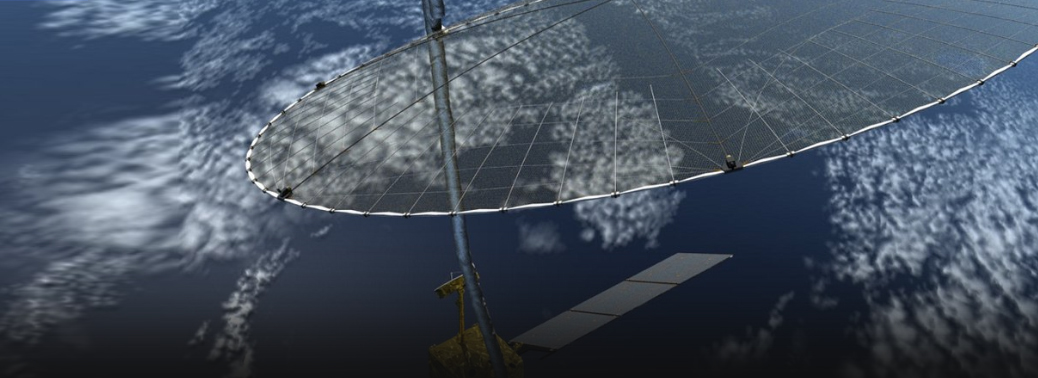
Why in News:
- RISAT-2B, will mark the resumption of a vital ring of Indian all-seeing radar imaging satellites after seven years.
- A constellation of such space-based radars means a comprehensive vigil over the country.
Background: / RISAT:
- The RISAT, which was first deployed in orbit on April 20, 2009 as the RISAT-2, uses synthetic aperture radars (SAR) to provide Indian forces with all-weather surveillance and observation, which are crucial to notice any potential threat or malicious activity around the nation’s borders. Following the 2008 Mumbai terror attacks, the launch of RISAT-2 was prioritised over RISAT- 1, as its C-band SAR radar was not yet ready and RISAT -2 carried an Israeli-built X-band radar.
- The to-be-deployed RISAT-2BR1 satellite uses the same SAR band and will further improve India’s imaging reconnaissance abilities.
RISAT-2B
- 4th flight unit of the RISAT programme.
- Main mission: reconnaissance and disaster management. DATA access Information:
- Direct reception at appointed ground stations in X-band.
- Off-line data are distributed by the National Remote Sensing Center (NRSC) in Launch scheduled for 22 May 2019.
FAST NEUTRINO OSCILLATIONS MAY HOLD KEY TO SUPERNOVAE FORMATION
12, May 2019
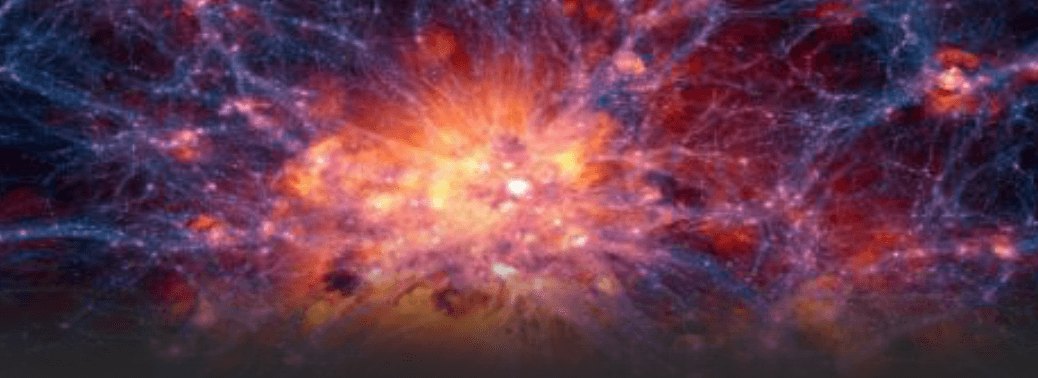
Why in News:
- Neutrinos could be the driving force behind supernova explosions, a new theoretical study finds.
Details:
- The study makes a fundamental advance in modelling neutrinos inside stars puts forth the idea that “fast neutrino oscillations” could hold the key to why some stars explode forming supernovae at the end of their lives.
- Neutrinos come in three flavours: electron neutrino, muon neutrino and tau neutrino, so named because of the corresponding leptons they are associated with (electron, muon and
tau).when measuring the number of neutrinos coming from the sun, experimentalists found that only a third of the number of solar neutrinos that was expected was being intercepted on earth. This was later explained by the understanding that they have a small mass and they can change from one flavour to another – a phenomenon named neutrino oscillations.
Fast neutrino oscillations
- When the same neutrinos are in the presence of many other neutrinos and when the different flavours are emitted slightly differently in various directions the oscillations from one flavour to another happen at a higher frequency.
- This is called fast oscillation and is proportional to the density of neutrinos in the medium, and not the masses of the neutrinos.
Supernova:
- Any star that collapses under its own gravity after having run out of its fusion fuel is called a supernova. Usually stars more massive than eight times the Sun’s mass enter this phase of explosive death.
- Collisions lead to the high anisotropy conditions. In the presence of collisions, the fast oscillations take place.
India-based Neutrino Observatory (INO):
- INO Project is aimed at building a world-class underground laboratory with a rock cover to conduct basic research on neutrino.
- The Tata Institute of Fundamental Research is the nodal institution. The observatory is to be built jointly with the Department of Atomic Energy and the Department of Science and Technology. The observatory will be located underground so as to provide adequate shielding to the neutrino detector from cosmic background radiation.
- The operation of INO will have no release of e of radioactive or toxic substances
Karnataka Law On Sc/St Promotion Quota Upheld
11, May 2019

Why in News:
- Jeff Bezos, who heads both Amazon and space company Blue Origin, unveiled a lunar lander and it would be used to transport equipment, and possibly human beings, to the south pole of the Moon by 2024
Details:
- He showed a mock-up of a huge vessel weighing many tons and able to carry four self- driving Mr. Bezos didn’t announce a specific date for the project’s first launch, but said the lander would be ready in time to make President Donald Trump’s announced timeline to return people to the Moon by 2024.
Generating water
- The vehicle has been under development for the past three years.
- It will be capable of carrying scientific instruments, the four small rovers, and also a future pressurized vehicle for humans. The goal is to land on the Moon’s south pole, where ice deposits were confirmed in 2018. Water can be exploited to produce hydrogen, which in turn could fuel future exploration of the solar Fully loaded with fuel, Blue Origin will weigh about 33,000 pounds (15,000 kilograms), which will decrease to around 7,000 pounds when it is about to land
Lunar colonies
- The broader vision to build an infrastructure that would sustain the colonisation of space by future generations of humans and shift polluting industries off the As space agencies prepare to return humans to the moon, top engineers are racing to design a tunnel boring machine capable of digging underground colonies for the first lunar inhabitants. The humans need to be shielded from radiation and freezing temperatures in structures which maintain atmospheric pressure in a vacuum.
- They also need protection from meteorite strikes.
India’s lunar mission
- Chandrayaan-2, India’s second lunar mission, has three modules namely Orbiter, Lander (Vikram) & Rover (Pragyan). The Orbiter and Lander modules will be interfaced mechanically and stacked together as an integrated module and accommodated inside the GSLV MK-III launch The Rover is housed inside the Lander. After launch into earth bound orbit by GSLV MK-III, the integrated module will reach Moon orbit using Orbiter propulsion module.
- Subsequently, Lander will separate from the Orbiter and soft land at the predetermined site close to lunar South
- Further, the Rover will roll out for carrying out scientific experiments on the lunar Instruments are also mounted on Lander and Orbiter for carrying out scientific experiments.
- All the modules are getting ready for Chandrayaan-2 launch during the window of July 09, to July 16, 2019, with an expected Moon landing on September 06,
Chandrayan -2 to Be Launched in July
11, May 2019
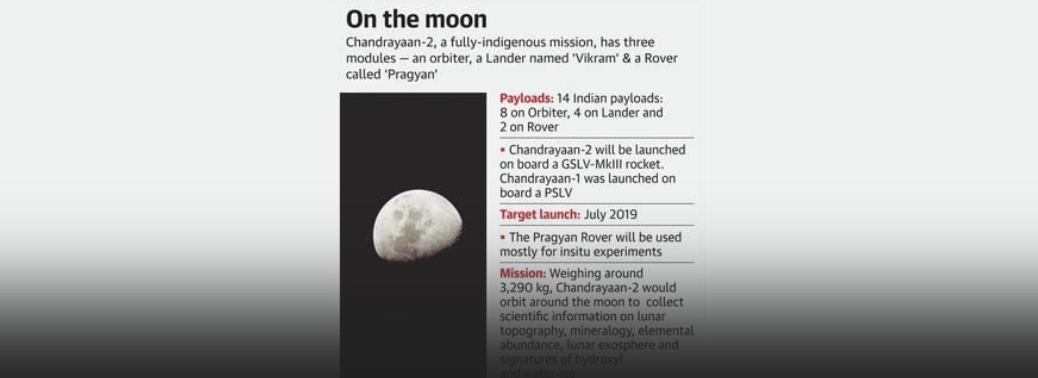
Why in News:
- Chandrayan-2, a fully indigenous mission to be launched during mid of July with 14 Indian payloads
Background:
- In October 2008, the space organisation had launched its orbiter mission Chandrayaan-1 on its PSLV The spacecraft had 11 payloads. One of the U.S. payloads shares credit with Chandrayaan-1 for confirming the presence of water ice on the moon.
- Before that, the Moon Impacter Probe carrying the Indian tricolour image was made to hard-land on the lunar south pole.
About Chandrayan -2:
- Launch vehicle: GSLV Mk III
- Lift off mass (approx.): 3,890 kg
- Launch from: Satish Dhawan Space Centre, Sriharikota, Andhra Pradesh
- Orbiter: It will orbit the moon at a distance of 100 km from the lunar Payloads on the orbiter are: Large Area Soft X-ray Spectrometer, L and S band Synthetic Aperture Radar, Imaging IR Spectrometer, Neutral Mass Spectrometer and Terrain Mapping Camera-2. The structure of the orbiter was manufactured by Hindustan Aeronautics Limited (HAL).
- Lander: The lander has been named Vikram after scientist Vikram The lander will detach from the orbiter, descend to a lunar orbit, before attempting to land on the surface.
- It will make a soft-landing and deploy the rover. It will also perform some scientific activities for about 15 days. Payloads on the lander are: seismometer, thermal probe, Langmuir probe and radio occultation.
- Rover: The 27 kg rover will operate on solar It will move on six wheels and conduct chemical analyses on-site. It will then transmit the data to the orbiter which will send this data back to the earth station. The rover payloads include Laser induced Breakdown Spectroscope (LIBS) and Alpha Particle Induced X-ray Spectroscope (APIXS). Chandrayaan II is India’s second lunar mission after Chandrayaan I.
- The mission includes a lunar orbiter, rover and a The mission is developed by ISRO, India. Initially, the lander was supposed to have been developed by Russia. But, when Russia cited its inability to provide the lander by 2015, India decided to go solo. Now, the mission is entirely Indian. The launch vehicle would be a GSLV (Geosynchronous Satellite Launch Vehicle Mark III).
Way Ahead:
- The mission is attempting to soft-land on the moon’s surface at a latitude of about 70° south, that would be on a high plain in between 2 If successful, this would be the
CHINA TO BUILD MOON STATION IN ‘ABOUT 10 YEARS’
25, Apr 2019

Why in News:
- Beijing plans to send a manned mission to the moon and to build a research station with the aim to achieve space superpower status and to became the first nation to land a rover on the far side of the moon.
Details:
- The Beijing plans to launch a Mars probe by 2020 and confirmed that a fourth lunar probe,
- the Chang’e-5, will be launched by the end of the year.
- The current Chang’e-4 moon lander carried equipment from Germany, the Netherlands and Sweden. Long March-5B rocket will make its maiden flight in the first half of 2020, carrying the core parts of a planned space station. It is planned to replace the International Space Station a collaboration between the United States, Russia, Canada, Europe and Japan, which is due to be retired in 2024.
- It is planned to build a scientific research station on the moon’s south pole within the next 10 years, China National Space Administration head Zhang Kejian said during a speech marking “Space Day”. China now spends more on its civil and military space programmes than Russia and Japan, and is second only to the United States.
Chang’e 4 craft,
- The Chinese National Space Administration has become the first space agency in the world to land its moon lander.
- Chang’e 4 craft, on the dark side of the moon that faces away from the Earth. Chang’e 4 craft opened up a new chapter in human lunar exploration.
- Before China, two nations – the United States, the former Soviet Union have sent spacecraft to the near side of the moon.
Key Highlights
- The relatively unexplored far side of the moon has a different composition than the near side, where previous missions have landed. Chang’e 4, a combined lander and rover, will make astronomical observations and probe the structure and mineral composition of the terrain above and below the surface.
Chang’e 5:
- Chang’e 5 is a robotic Chinese lunar exploration mission consisting of a lander and a sample-return vehicle. It is currently under development and it is scheduled for a launch in December 2019, after being postponed due to the failure of the Long March 5 launch vehicle in 2017. Chang’e 5 will be China’s first sample return mission, aiming to return at least 2 kilograms of lunar soil and rock samples back to the Earth.
- The spacecraft is named after its predecessors the Chinese moon goddess, Chang’e. This will be the first lunar sample-return mission since Luna 24 in 1976.
OUTER SPACE LESSONS
24, Apr 2019

Why in News:
- The Indian Space Research Organisation (ISRO) work toward ‘Mission Gaganyaan’, to send three Indian astronauts into space.
Details:
- The U.S objective, was to have a definite public-relations edge over the U.S.S.R. in the space race, which was marked by intense rivalry between two Cold War powers.
- A breakthrough in space was a matter of prestige.
- For ISRO’s plan, the prestige value of ‘Mission Gaganyaan’ is sky-high, ands same as the American National Aeronautics and Space Administration’s Apollo Mission to the moon.
Problems faced:
- If the mission, it would create certain problems which may affect India’s economic affairs. The programme of that scale and magnitude comes at a steep cost, monetary and non- monetary.
- It is the non-monetary loss that matters more than monetary loss. Failure indicates a waste of time and resources.
- A failed mission deeply hurts the image of the country in the eyes of the outside world.
- It raises doubts about the capability of the nation-state in question.
- Project development would play to the advantage of adversaries, politically and diplomatically. But, a failed mission of such magnitude could give voices in the opposition an opportunity to level criticism, perhaps weakening the incumbent domestically.
- The diplomatic costs arise from the fact that losses in space missions can seriously impact the future of cooperation between space powers.
Outer space
- Outer space is often referred to as the ‘final frontier’ by major world powers, with the prize for conquering it being more greatness on the world stage.
- India’s credentials were bolstered after the successful anti-satellite mission recently
- Success in ‘Mission Gaganyaan’ might provide India with that stamp of authority in outer space that it so keenly desires.
Mission Gaganyaan
- The Prime Minister of India in his Independence Day address announced that an Indian astronaut would go into space by 2022, when India celebrates her 75th year of Independence. In pursuance of this goal, India and France have announced a working group for Gaganyaan. ISRO and CNES, the French space agency, will work together in the fields of space medicine, astronaut health monitoring, life support, radiation protection, space debris protection and personal hygiene systems, etc.
The Mission
- Under the Gaganyaan schedule, three flights will be sent in orbit. Of the three, there will be two unmanned flights and one human spaceflight.
- The human space flight programme, called the Orbital Module will have three Indian astronauts, including a woman.
- It will circle Earth at a low-earth-orbit at an altitude of 300-400 km from earth for 5-7 days.
- The payload will consist of:
- Crew module – spacecraft carrying human beings.
- Service module – powered by two liquid propellant engines.
- It will be equipped with emergency escape and emergency mission abort.
- GSLV Mk III, also called the LVM-3 (Launch Vehicle Mark-3) the three-stage heavy lift launch vehicle, will be used to launch Gaganyaan as it has the necessary payload capability.
- The mission is expected to cost around Rs 10,000 crore.
NSE AND BSE ACCOUNT FOR 96% OF CURRENCY TRADING IN THE ASIA-PACIFIC REGION
16, Apr 2019

Why in News:
- Even though India become one of the largest derivative trading centres globally, it has not stopped the bourses.
- Indian exchanges do not offer trading in exotic derivative instruments like their counterparts in the developed markets in the U.S. and Europe
Background:
- Three exchanges — Korea Exchange, NSE and the Moscow Exchange — accounted for 68% of the total single stock futures total volumes traded. Further, the NSE and Korea Exchange together accounted for 90.7% of the volume of index options in the Asia-Pacific region.
- In the currency derivatives segment, the NSE and the BSE together account for 96% of such derivatives volume in the Asia-Pacific region. The two Indian exchanges occupy the top two ranks with nearly 211 crore contracts traded in 2018. Further, the BSE registered the second-highest volume growth in the year at 70% — second only to 84% of Singapore Exchange.
- In commodities as well, an India exchange is featured among the top 10 globally. In 2018, the Multi Commodity Exchange of India (MCX) was ranked eighth globally with a little over 23 crore contracts traded while registering a 16% rise during the year. In India, MCX is the biggest commodity bourse with a market share of more than 90%.
NSE:
- NSE is an All India level stock exchange. It was incorporated in November 1992. It offers online trading system matching to international standards.
The Main features of National Stock Exchange are as follows
- It has nationwide coverage. The investor can make dealing through NSEI dealer.
- NSE is the first stock exchange in the world which uses communication technology for trading its securities. It is fully computerised, screen based and ringless system.
- It allows the investors to trade their securities from their offices or homes through the network with direct satellite link up. There are transparency dealings. The investor can check the exact price at which their transactions took place. National Stock Exchange is a company promoted BY IDBI, ICCI, LIC and GIC and its subsidiaries, commercial banks. SBI capital market limited. The establishment of the NSE is a major step in upgrading trading facilities for investors and bringing Indian Financial markets in line with international markets. The index of the NSE is called as the Broader 50 share – Nifty.
BSE:
- Bombay Stock Exchange Limited is the oldest stock exchange in Asia with a rich with a rich heritage popularly known as BSE. It was established as “The Native Share and Stock Brokers Association “in 1875. It is the first stock exchange in the country to obtain permanent recognition in 1956 from the government role of BSE in the development of the Indian capital market is widely recognised.
The strategic objective of Bombay stock exchange are as follows:
- To promote, develop and maintain a well-regulated market for dealings in securities.
- To safeguard the interest of members and the investing public having dealings on the exchange.
- To promote industrial development in the country through efficient resource mobilisation by way of investment in corporate securities.
- To establish and develop critical and fair practices in securities transactions.
Management of Bombay Stock Exchange
- The exchange is professionally managed under the overall direction of the board of directors., governing body, or executive committee. The board comprises of eminent, professionals, representatives of trading members and the managing director of the exchange. The day to day operations of the exchange are managed by the Managing
- Director and CEO and an expert management Team of professionals.
CAPTURING THE IMAGE OF BLACK HOLE
14, Apr 2019
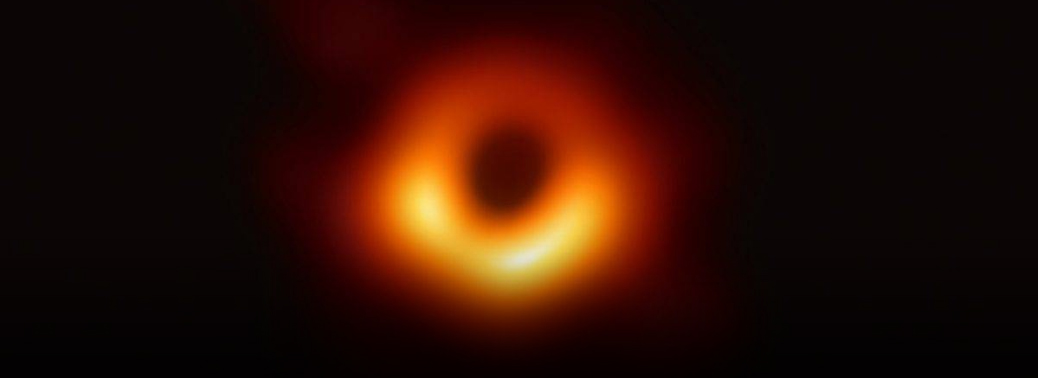
Why in News?
- Recently astronomers have clicked a picture of one of the most secretive objects of the universe.
Black hole
- A black hole is an extremely dense object from which no light can escape. Anything that comes within a black hole’s “event horizon,” its point of no return, will be consumed, never to re-emerge, because of the black hole’s unimaginably strong gravity. By its very nature, a
- black hole cannot be seen, but the hot disk of material that encircles it shines bright.
Capturing Black Hole:
- Black holes are the result, mostly, of heavy stars collapsing in on themselves, radiation emitted by particles within the disc are heated to billions of degrees as they swirl around the black hole at close to the speed of light, before vanishing into them.
- A black hole and its shadow have been captured in an image for the first time, a historic feat by an international network of radio telescopes called the Event Horizon Telescope (EHT). EHT is an international collaboration whose support in the U.S. includes the National Science Foundation. The stunning new image shows the shadow of the supermassive black hole in the center of Messier 87 (M87), an elliptical galaxy some 55 million light-years from Earth. This black hole is 6.5 billion times the mass of the Sun.Catching its shadow involved eight ground-based radio telescopes around the globe, operating together as if they were one telescope the size of our entire planet.
METEORITE SHEDS LIGHT ON THE SUN’S INFANT YEARS
07, Apr 2019

Why is it in news?
- By analysing the piece of Efremovka meteorite, researchers have envisaged how the sun behaved in its infancy and further deduced super flares could have been million times stronger than solar flares.
What is a Meteorite?
- A meteorite is a solid piece of debris from an object, such as a comet, asteroid, or meteoroid, that originates in outer space and survives its passage through the atmosphere to reach the surface of a planet or moon.
Super flare:
- Superflares are very strong explosions observed on stars with energies up to ten thousand times that of typical solar flares.
Solar flare
- A solar flare is a sudden flash of increased brightness on the Sun, usually observed near its surface and in close proximity to a sunspot group.
Pristine meteorite:
- Efremovka is one of the most pristine meteorites in the collections.
- Hence, there is a much greater probability of finding preserved isotopic records from the time of formation of the solar system. The first suggestion of irradiation by the Sun as a source of elements found in
- early solar system solids came from a study of the beryllium-10 radio nuclide in the Allende meteorite.
- This work, on the other hand, studies both beryllium-7 decaying to lithium -7 and beryllium-10 decaying to boron-10. This short half-life of beryllium-7 helps rule out the two competing theories and indicates that it is only irradiation by solar flares that led to the formation of the elements captured by the Calcium aluminium rich inclusions (CAI).
MISSION SHAKTI
03, Apr 2019
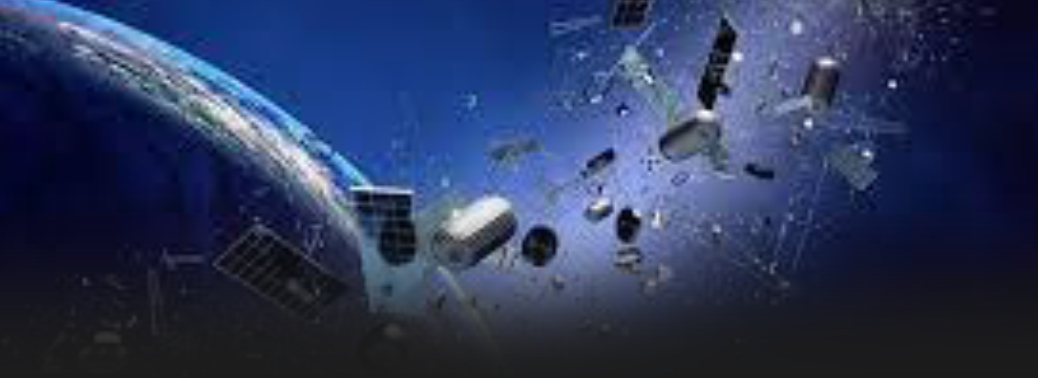
Why in News:
- NASA criticised India for the test, describing that it had endangered International Space Station.
Mission shakti:
- There are a large number of satellites currently in space, many of which have outlived their utility and orbiting aimlessly.
- The missile was launched from the Dr A P J Abdul Kalam island, struck a predetermined target which was a redundant Indian satellite that was orbiting at a distance of 300 km from the Earth’s surface.
NASA:
- The National Aeronautics and Space Administration is an independent agency of the United States Federal Government responsible for the civilian space program, as well as aeronautics and aerospace research. It was established in 1958.
- Most US space exploration efforts have been led by NASA, including the Apollo space missions, the Space shuttle, etc.
International space station:
- The International Space Station (ISS) is a space station, or a habitable artificial satellite, in low earth orbit from 320 km (199 mi) to 400 km (249 mi) above the Earth’s surface.
- Its first component was launched into orbit in 1998, with the first long-term residents arriving in November 2000 and has been inhabited continuously since that date. The ISS is the largest human-made body in low Earth orbit and can often be seen with the naked eye from Earth. The ISS programme is a joint project between five participating space agencies: NASA (United States), Roscosmos (Russia), JAXA (Japan), ESA (Europe) and CSA(Canada). The ISS serves as a microgravity and space environment research laboratory in which crew members conduct experiments in biology, human physiology, physics, astronomy and other fields.
Apogee and perigee:
- Apogee and perigee refer to the distance from the Earth to the moon. Apogee is the farthest point from the earth. Perigee is the closest point to the earth and it is in this stage that the moon appears larger.
Low earth orbit:
- The low earth orbit extends from 160km above Earth and ends at 2000km. More than 800 satellites are currently in orbit in the Low-Earth region. The most popular of these is the International Space Station and the Iridium network of communication satellites.
Problem of space debris:
- Anything launched into the space remains in space, unless it is specifically brought down or slowly disintegrates over decades or centuries.
- A satellite that is destroyed by a missile disintegrates into small pieces, and adds to the space debris. Satellites that are past their life and are no longer required also remain in space, orbiting aimlessly in some orbit. These included active and inactive satellites, rockets and their parts, and other small fragments. According to the NASA, there were 19,137 man-made objects in space that were large enough to be tracked. The threat from the space debris is that it could collide with the operational satellites and render them dysfunctional.
INDIA LAUNCHES EMISAT INTELLIGENCE-GATHERING SATELLITE
02, Apr 2019
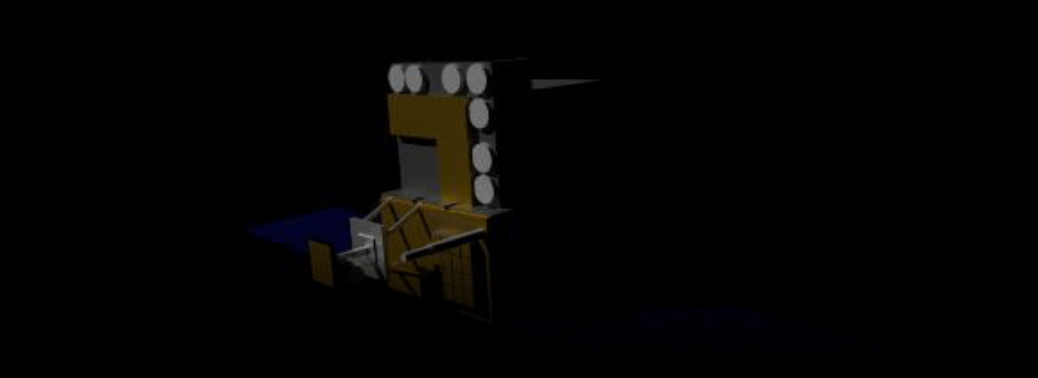
Why in News:
- The Indian Space Research Organisation (ISRO) launched the country’s first electronic surveillance satellite, EMISAT along with 28 small third party satellites from Sriharikota in coastal Andhra Pradesh.
EMISAT:
- The primary payload, EMISAT, is a 436-kilogram (961-pound) satellite to be operated by India’s Defence Research and Development Organisation (DRDO)
- EMISAT is based around the Indian Mini Satellite 2 (IMS-2) bus with solar panels providing 800 watts of power for the spacecraft.
- Its mission is officially stated as “electromagnetic spectrum measurement”.
- It is understood that EMISAT will be used for Electronic Signals Intelligence (ELINT).
- The satellite likely carries Kautilya, an ELINT package that India has been developing since at least 2014.
- EMISAT will operate in a circular sun-synchronous polar orbit, at an altitude of 749 kilometres (465 miles, 404 nautical miles) and an inclination of 98.4 degrees.
- Along with EMISAT twenty-eight smaller satellites were also put into space as secondary riders. These have all been built to CubeSat specifications.
CUBESAT:
- The CubeSat standard has become ubiquitous for small satellites and has played a significant role in their increased popularity in recent years. A single-unit CubeSat has a cubic shape with sides of ten centimetres (3.9 inches) – with larger satellites’ sizes based around multiples of this unit: for example, three-unit CubeSat measures ten centimetres along two axes and 30 centimetres (11.8 inches) along the third.
Debris from anti-satellite test to disintegrate in 45 days: official
30, Mar 2019
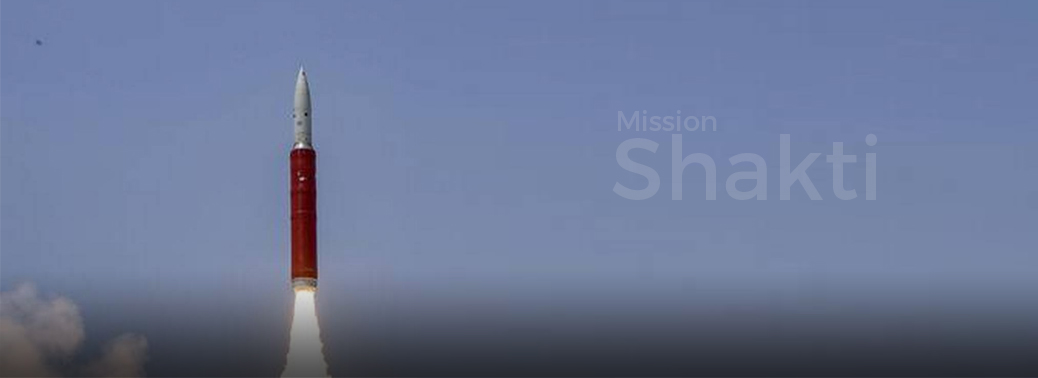
The satellite targeted with an Anti-Satellite (ASAT) missile under Mission Shakti has broken up into at least 270 pieces, most of which are expected to disintegrate within 45 days.
The satellite has disintegrated into at least 270 pieces which has also been confirmed by the North American Aerospace Defence Command (NORAD). One of them is a large piece that has been deorbited and is estimated to be completely degraded by April 5. The rest of the pieces are estimated to disintegrate in less than 45 days.
Being in the Low Earth Orbit, the debris would fall towards earth and burn up as soon as they enter the atmosphere.
Imaging satellite:
The targeted satellite was Microsat-R, an imaging satellite that was launched by the Indian Space Research Organisation (ISRO) on January 24 using a Polar Satellite Launch Vehicle.
The satellite, weighing 740 kg, was placed in an orbit of 274 km above earth.
Defence Research and Development Organisation (DRDO) shot down Microsat-R with a modified exo-atmospheric missile of the ballistic missile defence at an altitude of 300 km.
Being monitored:
The ASAT test was tracked by sensors of various agencies. Upon impact, data transmission from the satellite stopped and electro-optic systems confirmed an explosion.
Debris pose significant risk to satellites and other systems launched into orbit as they last for a long time especially in higher orbits. For instance, China’s 2007 ASAT test in an orbit of around 800 km created around 3,000 pieces of debris, of which 616 have decayed. The rest are still in orbit.
U.S. tracking debris from ASAT test
29, Mar 2019
The United States has reacted to Prime Minister’s statement that India had successfully tested an anti-satellite (ASAT) missile in what he termed Mission Shakti.
As part of the strong strategic partnership with India, the US will continue to pursue shared interests in space and scientific and technical cooperation, including collaboration on safety and security in space- US in response to questions on the U.S. position on the ASAT test.
The U.S. is one of the now four (including India) countries that has demonstrated an ability to strike down an orbiting satellite. U.S. President Donald Trump has been pushing for the U.S. to have a ‘Space Force’ and has directed the administration to enhance America’s space-war fighting capabilities. This has been driven in part by the long-standing American concern that China and Russia were developing their ASAT systems, putting American GPS-based technology at risk.
Mission Shakti
In an incremental advance, India successfully conducted an Anti-Satellite (ASAT) missile test, named Mission Shakti, becoming the fourth country in the world to demonstrate the capability to shoot down satellites in orbit. So far, only the United States, Russia and China have this prowess.
About ASAT missile:
- The satellite downed by the ASAT missile was Microsat-R, an imaging satellite which was launched into orbit on January 24, 2019 using a Polar Satellite Launch Vehicle (PSLV).
- India has built the broad capabilities and building blocks to develop ASAT missiles for some time as part of its Ballistic Missile Defence (BMD) programme.
- A BMD interceptor missile successfully engaged an Indian orbiting target satellite in LEO in a ‘hit to kill’ mode.
- The ASAT missile was a modified exo-atmospheric interceptor missile of the BMD. A LEO of 300 km was chosen to “minimise” debris and it also won’t last more than a few months.
- Anti-satellite weapons provide the capability to shoot down enemy satellites in orbit thereby disrupting critical communications and surveillance capabilities. ASAT missiles also act as a space deterrent in dissuading adversaries from targeting the country’s satellite network.
What is Space Debris?
- The term ‘space debris’ does not have a unanimously accepted legal definition. It is generally used to describe the collection of unwanted objects in the earth’s orbit which is either man-made or natural
- Natural Debris consists of natural bodies revolving around the sun, like, meteors and asteroids.
- Artificial Debris consists of man-made objects (usually non functional) which revolves around the Earth. (Therefore it is most commonly referred as Orbital Debris)
- According to the Report of Second U.N. Conference on Exploration and Peaceful Uses of Outer Space 1982, space debris consists of dead satellites, spent rocket motors, nuts and bolts etc.
SUCCESSFUL ANTI-SATELLITE MISSILE TEST PUTS INDIA IN ELITE CLUB
28, Mar 2019
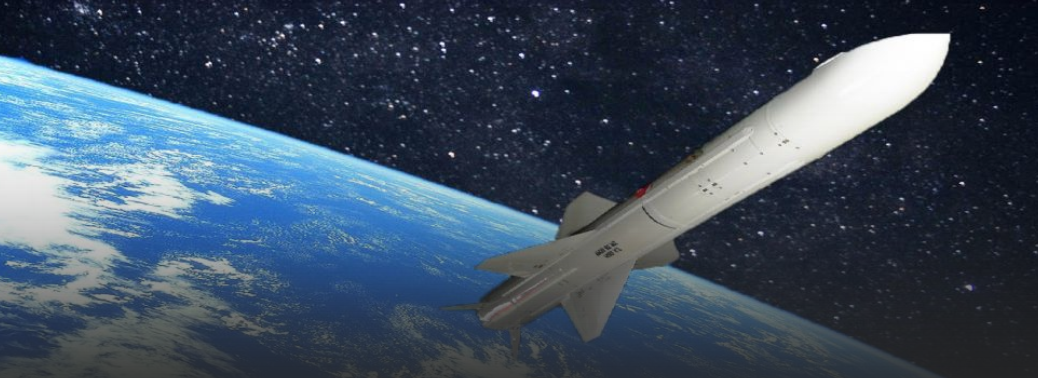
- India successfully conducted an Anti-Satellite (ASAT) missile test, named Mission Shakti, becoming the fourth country in the world to demonstrate the capability to shoot down satellites in orbit. So far, only the
United States, Russia and China have this prowess
What is Anti-Satellite Weapons (ASAT)?
- Anti-satellite weapons are the space weapons that are designed to destroy satellites for military purposes. India tested this missile to target live satellite on low earth orbit (LEO). Most of the military satellites orbit up to 2,000 km above the earth’s surface on LEO
Anti-Satellite Weapons: History
- When USSR demonstrated its ability to attack satellites in space, the U.S Air Force began developing the air-launched anti-satellite missile (ASAT) to destroy enemy satellites. More importantly, at the top of this two-stage missile there was a Miniature Homing Vehicle (MHV). Once it separated from the missile, the MHV homed in and destroyed a satellite by direct collision, rather than by detonation of a warhead – a concept known as “hit-to-kill.”
Anti-Satellite Technologies and Policies: Timeline
- Nuclear-Tipped Interceptors and the Outer Space Treaty: 1950s to 1960s
- ASAT capabilities were earlier developed by the United States and Soviet Union as a dedicated systems and residual capabilities of systems developed for other purposes, notably defence against ballistic missiles.
- Due to the limitations of the interceptor guidance systems, U.S and Soviet missile interceptors were tipped with megaton-class nuclear weapons and would permit a successful ASAT or Anti-Ballistic-Missile (ABM) attack without precision guidance. And such interceptors were recognised as poor ASAT option.
- The United States and Soviet Union signed the Outer Space Treaty (OST) in 1967 which bans orbiting nuclear weapons and provides that all countries are free to use space for peaceful purposes.
Co-Orbital ASAT Weapons: 1960s to 1970s
- A co-orbital strategy was only used by Russia which was dedicated ASAT system. In this a weapon armed with conventional explosives is launched into the same orbit as the target satellite and moves near enough to destroy it.
- The 1,400-kilogram Russian Co-Orbital ASAT weapon was designed to approach a satellite within one or two orbits. Finally, the Soviet Union declared the system operational in 1973.
U.S.-Soviet Treaty: 1972
- The treaty on the limitation of Anti-Ballistic Missile Systems prohibited interfering with “national technical means of verification” of treaty compliance, which implicitly protected reconnaissance satellites.
- In 1976, the Soviet Union resumed testing of its Co-Orbital ASAT system. Testing continued until 1982 and the system remained operational until 1993.
Air-Launched ASAT Systems: 1980s
- The United State test the Air-Launched Miniature Vehicle (ALMV) in 1982 which is a two- staged missile launched from an F-15 aircraft flying at high altitude. This missile will target satellite in low earth orbit and destroy or disrupt it in a high-speed collision, a technique known as a “kinetic kill” or “hit-to-kill” strategy. Several tests were conducted and finally in December 1985, Congress there banned further testing of the system of satellites and The Air Force discontinued the ALMV program in 1987.
- In 1983, the Strategic Defense System (SDI) was expected to develop several types of space- based interceptors with intrinsic ASAT capabilities.
The U.S. and Soviet Laser ASAT System: 1980s to 1990s
- The Ground-based ASAT weapons based on directed electromagnetic energy like lasers which offer the potential to attack satellites with different levels of intensity and low powered lasers can temporarily or permanently damage parts of a satellite’s sensor where as high- powered lasers can disable, damage or destroy a satellite.
- During this period, the U.S. Army accelerated plans for its own ground-based ASAT system, known as the kinetic-energy ASAT (KE-ASAT).
Satellite Jamming: 2000
- Satellite jamming, interfering with radio communications between a satellite and users on the ground is another potential ASAT technology.
- In 2002, the United States deployed the ground-based Counter Communications System.
- In 2007, China used a mobile, ground-based missile to launch a homing vehicle that destroyed one of its aging weather satellites by direct impact, or “kinetic kill”
- In 2008, the U.S. demonstrated the ASAT capabilities of its sea-based Aegis missile defense interceptors by destroying a non-responsive U.S. satellite at an altitude of 240 km.
- In 2010, India announced its intentions to develop a hit-to-kill ASAT system and finally in 2019 India has successfully launched ASAT.
PSLV C45 MISSION TO MARK SEVERAL FIRST FOR ISRO
26, Mar 2019
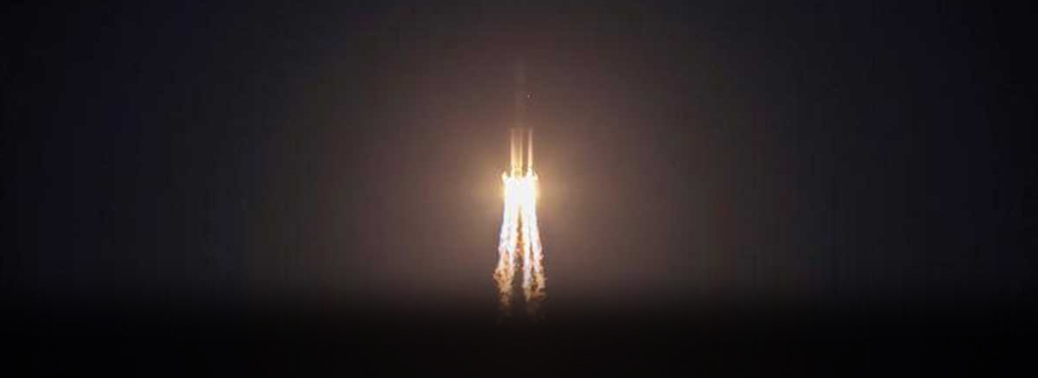
India’s Polar Satellite Launch Vehicle (PSLV), in its 47th mission (PSLV-C45), will launch EMISAT, the primary satellite and 28 international customer satellites.
EMISAT:
-
- Weighing about 436 kg, EMISAT based on ISRO’s Indian Mini Satellite -2 (IMS-2) bus platform. The satellite is intended for electromagnetic spectrum
- The PS4 orbital platform is envisaged to provide a microgravity environment for research organisations and academic institutes to perform
- In this mission, the PS4 hosts three payloads, namely,
- Automatic Identification System (AIS) from ISRO,
- Automatic Packet Repeating System (APRS) from AMSAT (Radio Amateur Satellite Corporation), India and
- Advanced Retarding Potential Analyzer for Ionospheric Studies (ARIS) from Indian Institute of Space Science and technology (IIST).
- 7. The 28 international customer satellites are from four countries, viz. Lithuania, Spain, Switzerland and USA. All these satellites are being launched under commercial arrangements.
Polar Satellite Launch Vehicle:
- Polar Satellite Launch Vehicle (PSLV) is the third generation launch vehicle of India.
- It is the first Indian launch vehicle to be equipped with liquid stages.
- After its first successful launch in October 1994, PSLV emerged as the reliable and versatile workhorse launch vehicle of India with 39 consecutively successful missions by June 2017.
- During 1994-2017 period, the vehicle has launched 48 Indian satellites and 209 satellites
ISRO EYES KEROSENE TO BOOST GSLV MK3
28, Jan 2019
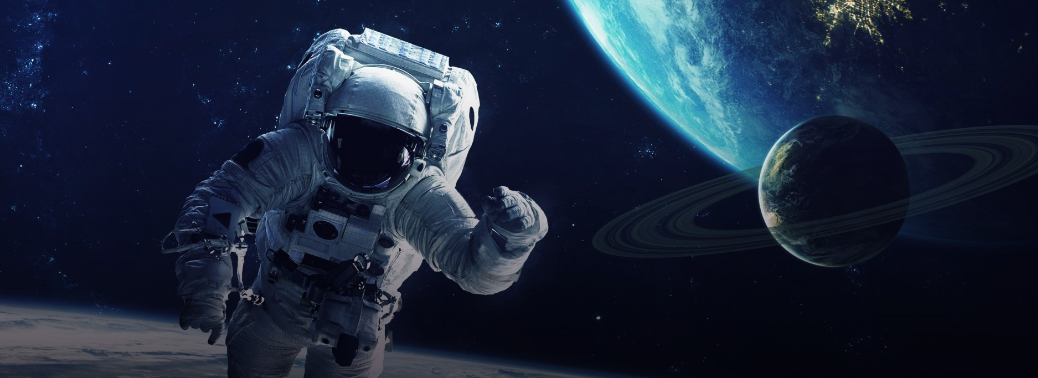
In News
- Indian Space Research Organisation (ISRO) is working on upgrading its heavylifter GSLV Mk III where the upper stage of the rocket will have highly refined form of kerosene as fuel in order to increase its payload capability.
Explained
- To increase the payload capability of GSLV Mk III from 4 tonnes to 6 tonnes, we are in the process of making some improvements in rocket stages.
- According to ISRO, First, ISRO is working on enhancing the cryogenic stage fuel loading from 25 tonnes to 30 tonnes. Second, ISRO is also working on changing the core stage L110 — which has 110 tonnes of unsymmetrical dimethylhydrazine (UDMH) and dinitrogen tetroxide (N2O4)
- ISRO want to replace L110 stage with semi cryogenic engine that will carry liquefied oxygen and highly refined kerosene called kerolox (aka RP-1) instead of liquefied hydrogen.
- The rocket with the semicryogenic stage won’t be used for the Gaganyaan mission. The current GSLV Mk III with L110 stage will only be used for the manned mission with some modifications.The advantage of using kerolox is that it is 10 times dense— meaning the same volume of kerolox will generate more thrust than the same volume of hydrolox. It is also cheaper, more stable at room temperature and less hazardous than hydrolox. Elon Musk-promoted Space X currently uses kerolox in its Falcon 9 rocket for launching heavy payloads.
- With increase in payload capacity, the advanced GSLV MK III will help Isro cut expenses and save time. Currently, India uses the services of Arianespace to launch its heavy satellites weighing over 4 tonnes. Last year on December 4, ISRO had used the services of Arianespace for launching its heaviest satellite Gsat-11 weighing over 5.7 tonnes from French Guiana.
GSLV Mk III
- GSLV Mk III is a three-stage heavy lift launch vehicle developed by ISRO. The vehicle has two solid strap-ons, a core liquid booster and a cryogenic upper stage. GSLV Mk III is designed to carry 4-ton class of satellites into Geosynchronous Transfer Orbit (GTO) or about 10 tons to Low Earth Orbit (LEO), which is about twice the capability of GSLV Mk II.
Technical Specifications
Payload to GTO: 4,000 kg
- GSLV Mk III will be capable of placing the 4 tonne class satellites of the GSAT series into Geosynchronous Transfer Orbits.
Payload to LEO: 8,000 kg
- The powerful cryogenic stage of GSLV Mk III enables it to place heavy payloads into Low Earth Orbits of 600 km altitude.
Cryogenic Upper Stage: C25
- The C25 is powered by CE-20, India’s largest cryogenic engine, designed and developed by the Liquid Propulsion Systems Centre.
Solid Rocket Boosters: S200
- SLV Mk III uses two S200 solid rocket boosters to provide the huge amount of thrust required for lift off. The S200 was developed at Vikram Sarabhai Space Centre.
Core Stage: L110 Liquid Stage
- The L110 liquid stage is powered by two Vikas engines designed and developed at the Liquid Propulsion Systems Centre.
ISRO to Launch Military Satellites
24, Jan 2019
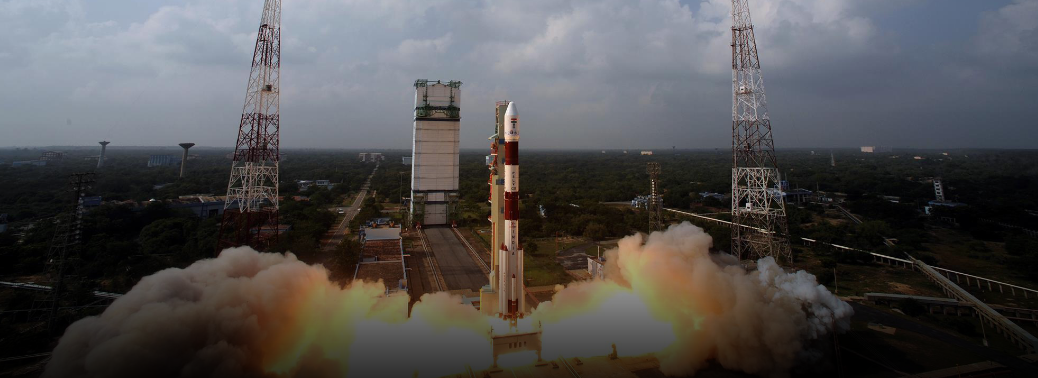
Context:
- Just before midnight on Thursday, Indian Space Research Organisation’s first mission of 2019 will put into space a 740-kg military imaging satellite, Microsat-R.
Details:
- ISRO has shied away from sharing details of the spacecraft or its uses as it does routinely each time during its missions; except to say the satellite would be placed within 15 minutes after take-off in a polar orbit 274 km away from Earth.
- This is much lower than any of its civil Earth observation spacecraft, which fly pole to pole over the globe at between 400 km and 700 km.
- According to information obtained from different sources Microsat-R and its payload come assembled from a handful of laboratories of the Defence Research and Development Organisation (DRDO) and is meant for military use. The satellite was “assembled outside and ISRO only interfaced it” with its own systems and the launch vehicle, just as it treats any customer satellite.
- C-44 will be launched around 11.30 p.m. from the older First Launch Pad at the Satish Dhawan Space Centre, Sriharikota.
- For its part, ISRO is experimenting on two aspects of the vehicle. One is to reuse a waste stage. “For us, the excitement is about reusing the spent fourth stage [PS4] of the rocket as an orbiting platform for future experiments,” an official said. Kalamsat, a small student payload, will be the first to use PS4 as an orbital platform.
- Amid the 28-hour countdown for the launch, ISRO Chairman K.Sivan said the PS4-Kalamsat experiment would be short-lived. It would start about 1.5 hours from take-off and last about 14 hours until Friday midday. Later experiments with PS4 will be improved gradually, he said.
- For the third time in ISRO’s recent history, the mission team is slated to cut off and restart the PS4 engine twice over a flight lasting around 100 minutes.
- ISRO’s pre-launch brochure said, “In PSLV-C44, the fourth stage (PS4) of the vehicle will be moved to higher circular orbit so as to establish an orbital platform for carrying out experiments.” The other experiment with the launcher PSLV-C44 vehicle will be a new third variant having two strap-on boosters. Called the PSLV-DL, D standing for demonstration, it ranges between the older two variants.
NAIR Rues delay in Human spaceflight Plan
14, Jan 2019
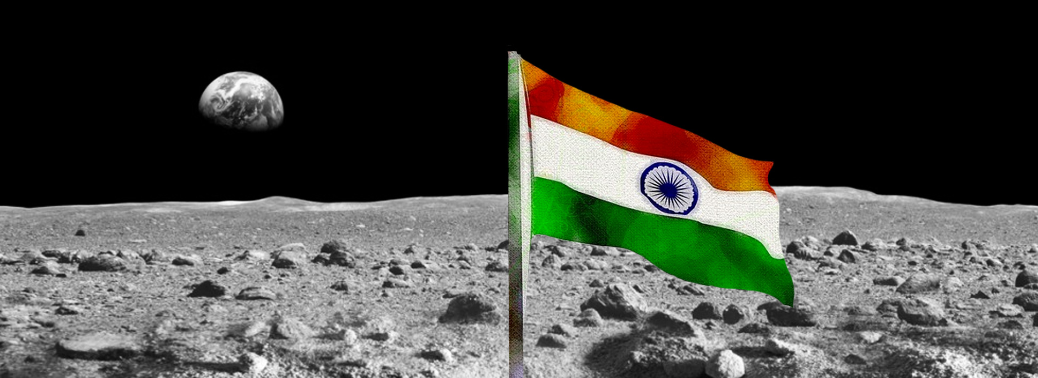
What’s in the news?
- Former ISRO chief attributes delay to political factors and changed priorities
- India could have put an astronaut in space in 2015 had the original plan for the human spaceflight programme worked out, former ISRO chairman G. Madhavan Nair has said.
- Madhavan Nair, who headed the space agency from 2003 to 2009, attributed the delay to political factors and the changed priorities of the subsequent ISRO management.
- “But it’s never too late. ISRO now has a strong chairman in K. Sivan. The human spaceflight mission will be a turning point in the Indian space programme,” he told The Hindu on Friday, responding to ISRO’s formal announcement that it plans to put three Indians in space in December 2021.
- According to Madhavan Nair, it was in 2005 that ISRO decided that it was time to think beyond the grand vision of Dr. Vikram Sarabhai. “Dr. Sarabhai wanted India to achieve self-reliance in satellite building, launch vehicle technology and, more importantly, ensure that the common man benefited from these technologies. We took a review in 2005. The question was, what next?” recalls Mr. Nair.
Natural choice:
- The human spaceflight programme was a natural choice as a target for the future, he said.
- “Human access to space had become very important for various reasons. One, ISRO had improved in terms of launch vehicle technology. Second, if we are to send humans to the Moon and Mars, we have to make a beginning,” he said.
- In 2008, ISRO prepared a project report and submitted it to Space Commission. The same year, a small team was formed at the Vikram Sarabhai Space Centre (VSSC) to study various aspects of spaceflight and the technologies that such a venture called for. It was headed by S. Unnikrishnan Nair, who was appointed project director, Human Spaceflight Programme (HSP). The team consisted of 10 to 12 people.
Green light:
- “In 2009, the Planning Commission gave the green light for the programme.
- “In 2009, the plan was to have the mission in six years. So, by 2015, we would have been flying in earth orbit. But unfortunately, due to various political factors and probably, the attitude of the subsequent management in ISRO it was put in cold storage,” he said.
About India’s Human spaceflight:
- Prime Minister announced that India will send an astronaut to space in the year 2022. He was addressing the nation on India’s 72nd Independence Day. “I make this announcement today, before 2022, an Indian astronaut – son or daughter – will be in space. One of us will carry the tricolour to the space to commemorate the 75th year of India’s Independence.”
- The name of the mission is Gaganyaan and it is a crewed orbital spacecraft expected to carry 3 members on board.Gaganyaan joins Chandrayaan-1, India’s first lunar probe, and Mangalyaan, the Mars Orbiter Mission project, orbiting Mars.With this, India could potentially become the fourth country to send a man to space, after the erstwhile USSR, the US and China. Denmark also has a manned space flight scheduled for 2022.
- The total programme is expected to be complete before 2022. Two unmanned Gaganyaan missions will be undertaken prior to sending humans. As per ISRO schedule, the first and second unmanned flights would be sent in orbit within 30 and 36 months beginning from August 2018.
- GSLV Mk III, the three-stage heavy lift launch vehicle, will be used to launch Gaganyaan as it has the necessary payload capability. The mission is estimated at Rs 9,000 crore.
ISRO Cranks up GAGANYAAN Project
12, Jan 2019
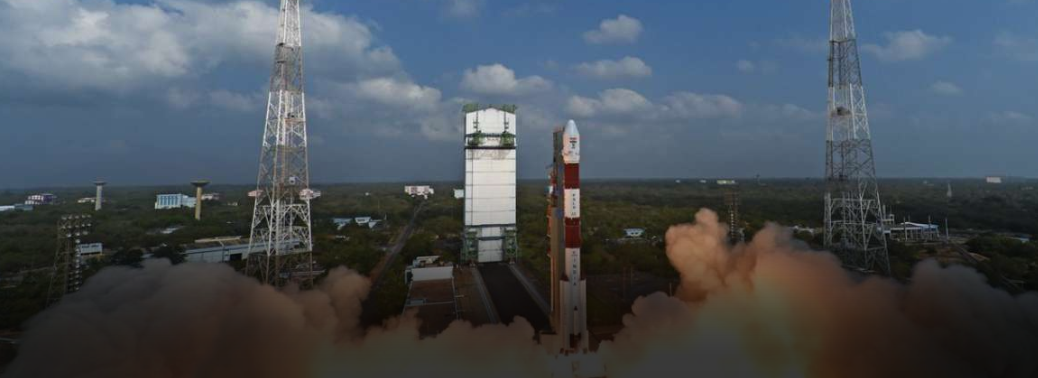
Context:
- The Indian Space Research Organisation (ISRO) said work on ‘Gaganyaan’, the project to send a manned mission to space by 2022, would start soon at the newly created Human Space Flight Centre (HSFC).
Details:
- According to ISRO, Gaganyaan has taken high priority now and the Human Space Flight Centre would carry out all activities related to the human programme, under which Gaganyaan project would function.
- The project has also got government approval and budget for putting three astronauts in space for seven days.
About the Gaganyaan Mission:
- It will be India’s first manned space mission.
- Under it, India is planning to send three humans (Gaganyatris) into space in low earth orbit (LEO) by 2022 i.e. by 75th Independence Day for a period of five to seven days.
- The mission was announced by Prime Minister during his 72nd Independence Day speech.
- Under this mission, crew of three astronauts will conduct experiments on microgravity in space.
- The crew will be selected jointly by Indian Air Force (IAF) and ISRO after which they will undergo training for two-three years.
- India will be fourth nation in the world after USA, Russia and China to launch a human spaceflight mission.
- Enhancement of science and technology levels in the country, serve as national project involving several institutes, academia and industry, improve of industrial growth, inspire youth, develop technology for social benefits and improve international collaboration.
NASA’S Probe Discovers a New Planet
09, Jan 2019
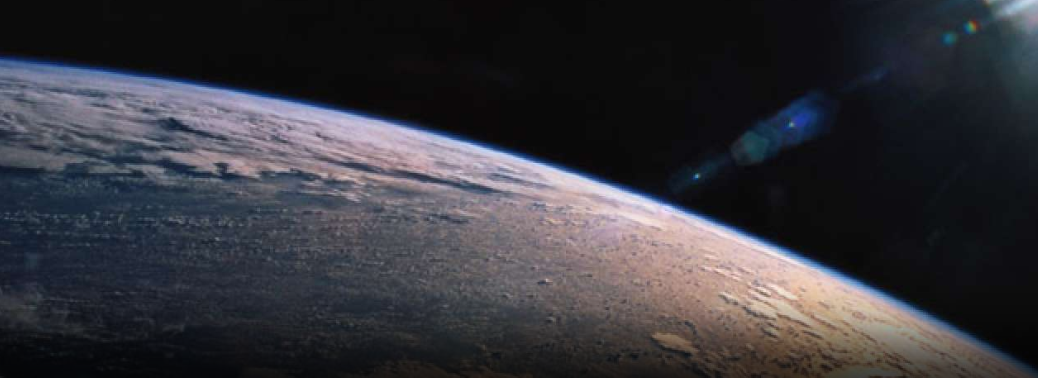
Context:
NASA’s latest planet-hunting probe has discovered a new world outside our solar system, orbiting a dwarf star 53 light years away.
Details:
- This is the third new planet confirmed by the Transiting Exoplanet Survey Satellite (TESS) since its launch in April last year.
- The planet, named HD 21749b, orbits a bright, nearby dwarf star about 53 light years away, in the constellation Reticulum, and appears to have the longest orbital period of the three planets so far identified by TESS.
About Transiting Exoplanet Survey Satellite
- The Transiting Exoplanet Survey Satellite (TESS) is a space telescope for NASA’s Explorers program, designed to search for exoplanets using the transit method in an area 400 times larger than that covered by the Kepler mission.
- It was launched on April 18, 2018 atop a Falcon 9 rocket. During its 2-year primary mission, it is expected to find more than 20,000 exoplanets, compared to about 3,800 exoplanets known when it launched.
- The primary mission objective for TESS is to survey the brightest stars near the Earth for transiting exoplanets over a two-year period.
- The TESS satellite uses an array of wide-field cameras to perform a survey of 85% of the sky. With TESS, it is possible to study the mass, size, density and orbit of a large cohort of small planets, including a sample of rocky planets in the habitable zones of their host stars.
China’s Change – 4 Lunar Rover Lands on Moon’s far side, sends back images
04, Jan 2019
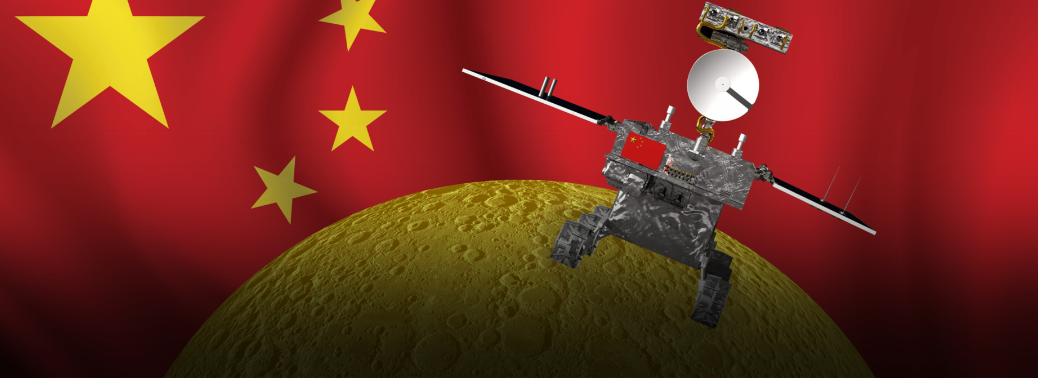
Context:
- China’s Chang’e-4 lunar rover scripted history on January 3 when it made the first-ever soft landing on the far side of the moon and sent back close-up images of the previously unexplored region, a giant leap for cosmic exploration and a major boost to the China’s quest to become a space superpower.
Details:
- China National Space Administration said that Chang’e-4, named after a Chinese moon goddess and comprising a lander and a rover, touched down at the preselected landing area at 177.6 degrees east longitude and 45.5 degrees south latitude on the far side of the moon.
- The lunar explorer has shared its first pictures from the surface.
- The robotic spacecraft is carrying instruments to analyse the unexplored region’s geology and will conduct biological experiments.
- This is the pioneering achievement as earlier moon missions that have landed only on the Earth-facing side, this is the first time any craft has landed on the unexplored and rugged far side of the moon.
- The scientific tasks of the Chang’e-4 mission include low-frequency radio astronomical observation, surveying the terrain and landforms, detecting the mineral composition and shallow lunar surface structure, and measuring the neutron radiation and neutral atoms to study the environment on the far side of the moon
- Chang’e-4 mission has four scientific payloads developed by scientists from the Netherlands, Germany, Sweden and Saudi Arabia. Chang’e 4 is the fourth lunar probe launched by China since the country’s lunar programme was opened in 2004.
- China has now joined the U.S. and the former USSR as the only countries to have made a “soft landing” on the moon. But beyond underlining China’s technological advances, Chang’e-4 could herald a new chapter in lunar exploration.
- The country also further aims to land a crewed flight on the moon in the coming decade.
Background:
- Tidal forces on Earth slow the moon’s rotation to the point where the same side always faces Earth. The other side, most of which is never visible from Earth, is the far side of the moon. Direct communication with the far side of the moon, however, is not possible, which is one of the many challenges for the Chang’e-4 lunar probe mission.
- China launched a relay satellite, named Queqiao, in May, to set up a communication link between the Earth and Chang’e-4 lunar probe.
- This is the first time an attempt is made to explore the far side of the moon. Since the moon’s revolution cycle is the same as its rotation cycle, the same side always faces Earth.
- The far side of the moon is the hemisphere that never faces Earth, due to the moon’s rotation.
- It is sometimes mistakenly referred to as the “dark side of the moon,” even though it receives just as much sunlight as its Earth-facing side.
- The Chang’e-4 mission will be a key step in revealing the moon’s mysterious side.
NASA Spacecraft Zips Past Ultima Thule
02, Jan 2019
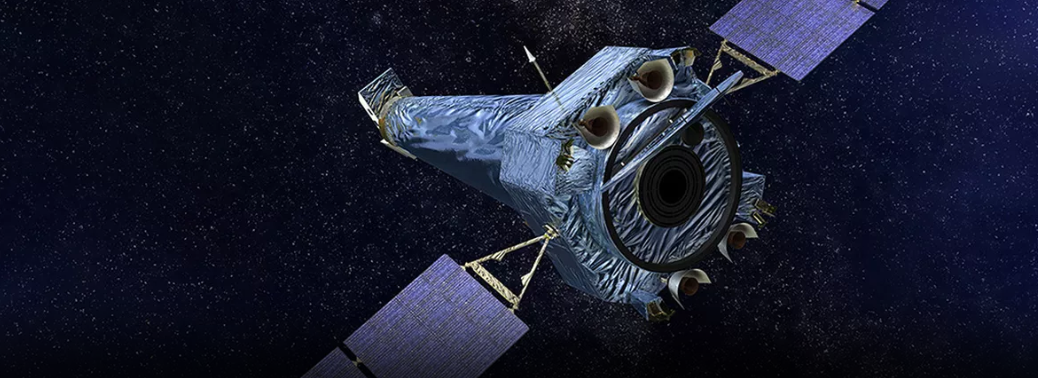
Context:
- A NASA spacecraft ‘New Horizons’ flew past the most distant world ever studied by humankind, Ultima Thule, a frozen relic of the early solar system that could reveal how planets formed.
Details:
- Ultima Thule is located in the Kuiper belt in the outermost regions of the Solar System, beyond the orbit of Neptune. Ultima Thule is unique because it is a relic from the early days of the Solar System and could provide answers about the origin of the other planets. The spaceship was to collect 900 images over the course of a few seconds as it shaved by at a distance of about 2,000 miles (3,500 kilometres).
- These photographs would help in better understanding of the Solar System
About New Horizons:
- New Horizons is an interplanetary space probe that was launched as a part of NASA’s New Frontiers program. It aims to understand worlds at the edge of our solar system by making the first reconnaissance of the dwarf planet Pluto and by venturing deeper into the distant, mysterious Kuiper Belt – a relic of solar system formation.As part of an extended mission, the spacecraft head farther into the Kuiper Belt, to study MU69 another
of the ancient, icy mini-worlds in that vast region, at least a billion miles beyond Neptune’s orbit.
Bepicolombo Mission
21, Dec 2018
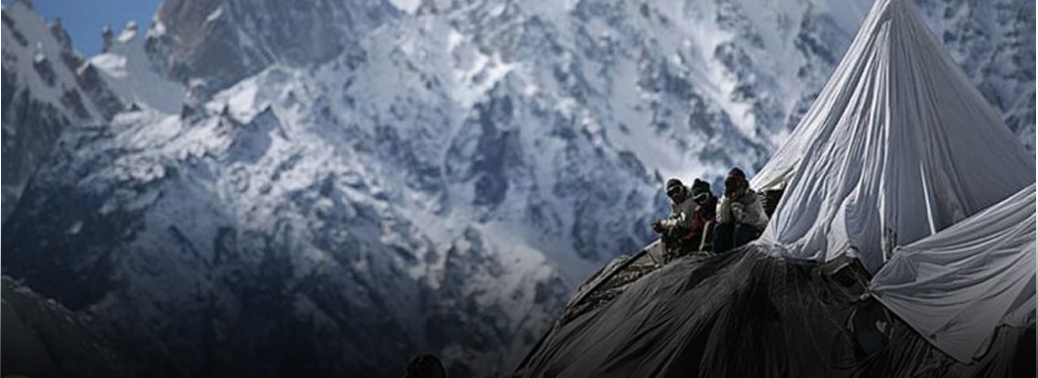
- A European-Japanese spacecraft set off on a treacherous seven-year journey to Mercury to examine the solar system’s smallest and least-explored planet.
About:
- The BepiColombo mission, only the third ever to visit Mercury, blasted off from Europe’s spaceport in French Guiana aboard an Ariane 5.
- It is the Europe’s first mission to Mercury, built in cooperation with the Japanese space agency JAXA. Europe’s Mercury Planetary Orbiter (MPO) and Japan’s Mercury Magnetospheric Orbiter (MMO) have different roles. The BepiColombo mission includes two spacecraft, a planetary orbiter and a magnetospheric orbiter, which, according to the European Space Agency, will need to deal with temperatures above 350°C during their year-long mission around the closest planet to the sun.
- When it arrives, BepiColombo will release two probes Bepi and Mio that will independently investigate the surface and magnetic field of Mercury.
- Newly developed electrical ion thrusters will help nudge the spacecraft, which is named after Italian scientist Giuseppe ‘Bepi’ Colombo, into the right orbit.
- The MMO will make as its priority the study of the planet’s magnetic field. It will investigate the field’s behaviour and its interaction with the “solar wind”, the billowing mass of particles that stream away from the Sun. This wind interacts with Mercury’s super-tenuous atmosphere, whipping atoms into a tail that reaches far into space.
- Europe’s MPO will map the terrain, generate height profiles, sense the interior, and collect data on the surface structure and composition.
Background:
- It is the second recent cooperation between the Europeans and JAXA after the Japanese agency’s Hayabusa2 probe dropped a German-French rover on the asteroid Ryugu earlier this month.
- The Americans have already been there, briefly with the Mariner 10 probe in the 1970s, and with the Messenger orbiter earlier this decade.
- The latter provided remarkable new insights that included the amazing discoveries that water-ice is held inside some of baking Mercury’s shadowed craters, and that its crust contains a lot of graphite (pencil lead).
- Bepi will build on Messengers’ investigations. The new mission carries twice as much instrumentation and will get closer for longer, giving scientists much more detailed information.
Significance:
- Beyond completing the challenging journey, this mission will return a huge bounty of science. Helps to understand how Earth was formed, how all rocky planets formed.
- BepiColombo mission is one of the most challenging in its history given Mercury’s extreme temperatures, the intense gravity pull of the sun and blistering solar radiation make for hellish conditions. The first spacecraft to visit Mercury was NASA’s Mariner 10 that flew past the planet in the mid-1970s. Mercury, which is only slightly larger than Earth’s moon, has a massive iron core about which little is known. Researchers are also hoping to learn more about the formation of the solar system from the data gathered by the BepiColombo mission.
ISRO’S GSLV-F11/GSAT-7A Mission Successful
20, Dec 2018

Context:
- The Indian Space Research Organisation (ISRO) sucessfully placed GSAT-7A, the second communication satellite meant primarily for military applications in orbit.
Details:
- GSLV-F11 (Geosynchronous Satellite Launch Vehicle) carrying the satellite lifted off from the second launch pad of Satish Dhawan Space Centre in Sriharikota.
- It was the 13th flight of GSLV Mark II and the seventh flight with an indigenous cryogenic engine.
- Around 19 minutes after take-off, the three-stage launcher ejected the satellite into a geosynchronous transfer orbit.
- In the coming days, the satellite will be moved to its final geostationary orbital slot at an altitude of around 35,000km by firing its onboard chemical propulsion system.
- Gsat-7A, the 39th communication satellite of Isro, has communication capabilities to users in Ku-band over the Indian region.
- Gsat-7A is expected to interlink all ground-based radars, airbases and airborne early warning and control aircraft for surveillance, maintain air superiority, gather intelligence by detecting aircraft, vessels and other vehicles in long range.
About the satellite:
- GSLV – F11 is ISRO’s fourth generation launch vehicle with three stages. The four-liquid strap-ons and a solid rocket motor at the core form the first stage. The second stage is equipped with high thrust engine using liquid fuel. The Cryogenic Upper Stage forms the third and final stage of the vehicle.
- The GSAT-7A incorporates chemical propulsion system to provide an operational mission life of a minimum of eight years.
- Chemical propulsion will be used for orbit raising as well as for on orbit attitude correction operations.
- Sufficient redundancy is built into the Spacecraft for continued service.
- It is an advanced military communications satellite meant exclusively for the Indian Air force.
- GSAT-7A is similar to Indian navy’s GSAT-7 and the Indian Air Force will be the sole operator of the satellite.
- It will qualitatively unify its assets and improve combined, common intelligence during operations
- GSAT-7A will enable IAF to interlink different ground radar stations, ground airbase and Airborne early warning and control (AWACS) aircraft such as Beriev A-50 Phalcon and DRDO AEW&CS.
- The satellite will enhance Network-centric warfare capabilities of the Indian Air Force and therefore enhance its global operations. The satellite will also be used by Indian Army’s Aviation Corps for its helicopters and UAV’s operations.
- It will support aerial activities of the Army and the Navy wherever required
Insight Mars Lander Takes its First Selfie
13, Dec 2018
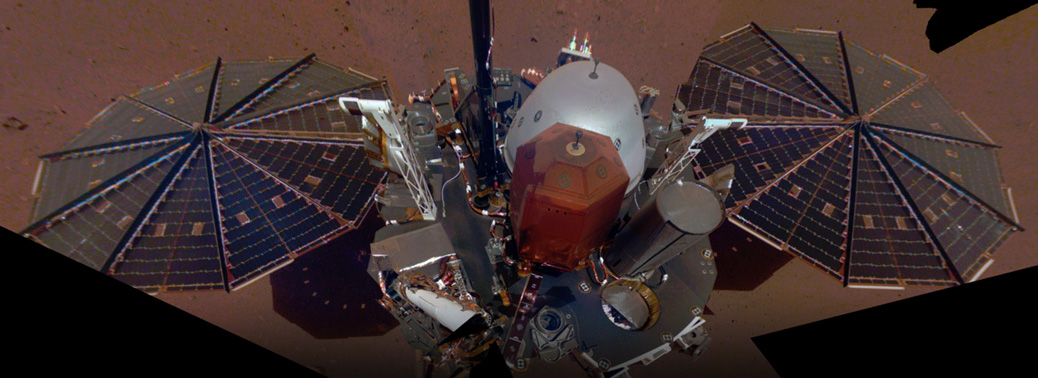
Details:
- The spacecraft used a camera on its robotic arm to take its first selfie—a mosaic made up of 11 images. This is the same imaging process used by NASA’s Curiosity rover mission, in which many overlapping pictures are taken and later stitched together. Visible in the selfie are the lander’s solar panel and its entire deck, including its science instruments.
About NASA’s InSight:
- The Interior Exploration using Seismic Investigations, Geodesy and Heat Transport (InSight) mission is a robotic lander designed to study the deep interior of the planet Mars.
- It was manufactured by Lockheed Martin and is managed by NASA’s Jet Propulsion Laboratory.
- It has to place ‘seismometer’, on the surface to measure the seismic activity and provide accurate 3D models of Mars’s interior and measure heat flow and transfer within Mars using a heat probe to study the planet’s early geological evolution
Voyager 2 Probe Reaches Interstellar Space: NASA
12, Dec 2018

Context:
- NASA’s Voyager 2 has become the second human-made object in history to reach the edge of our solar system, after the spacecraft exited the protective bubble of particles and magnetic fields created by the Sun.
Details:
- Voyager 2 is the only probe ever to study Neptune and Uranus during planetary flybys.
- Voyager 2 is the only spacecraft to have visited all four gas giant planets — Jupiter, Saturn, Uranus and Neptune
- Its twin, Voyager 1, crossed this boundary in 2012, but Voyager 2 — launched 41 years ago — carries a working instrument that will provide first-of-its-kind observations of the nature of this gateway into interstellar space.
- Their observations complement data from NASA’s Interstellar Boundary Explorer (IBEX), a mission that is remotely sensing that boundary.
Interstellar space:
- In simple terms, it is a part of space that exists between stars
- Scientists define the beginning of interstellar space as the place where the sun’s constant flow of material and magnetic field stop affecting its surroundings. This place is called the heliopause. It marks the end of a region created by our sun that is called the heliosphere. The sun creates this heliosphere by sending a constant flow of particles and a magnetic field out into space at over 670,000 miles per hour. This stream is called the ‘solar wind.’
Chandra Observatory
19, Oct 2018

In News:
- NASA’s Chandra X-ray telescope which observes galaxies from the Earth’s orbit is back in action after suffering a technical glitch and going into safe mode.
- The Glitch occurred in one of Chandra’s gyroscopes, scientists said.
Background:
- The Chandra X-ray Observatory (CXO), previously known as the Advanced X-ray Astrophysics Facility (AXAF), is a Flagship-class space observatory launched on STS-93 by NASA on July 23, 1999
- NASA’s Chandra X-ray Observatory is a telescope specially designed to detect X-ray emission from very hot regions of the Universe such as exploded stars, clusters of galaxies, and matter around black holes.
- Because X-rays are absorbed by Earth’s atmosphere, Chandra must orbit above it, up to an altitude of 139,000 km (86,500 mi) in space.
- Chandra is sensitive to X-ray sources 100 times fainter than any previous X-ray telescope, enabled by the high angular resolution of its mirrors.
- Since the Earth’s atmosphere absorbs the vast majority of X-rays, they are not detectable from Earth-based telescopes; therefore space-based telescopes are required to make these observations.
- Chandra is an Earth satellite in a 64-hour orbit, and its mission is ongoing as of 2018. The Smithsonian’s Astrophysical Observatory in Cambridge, MA, hosts the Chandra X-ray Center which operates the satellite, processes the data, and distributes it to scientists around the world for analysis. Although nothing can escape the incredible gravity of a black hole, not even light, the Chandra X-ray Observatory will be able to study particles up to the last millisecond before they are sucked inside. The Chandra X-ray Observatory’s resolving power is 0.5 arc-seconds — equal to the ability to read the letters of a stop sign at a distance of 12 miles. Put another way, Chandra’s resolving power is equivalent to the ability to read a 1-centimeter newspaper headline at the distance of a half-mile.
What makes Chandra Unique?
- Chandra has outstanding imaging precision; its mirrors are the largest, the most perfectly aligned, and smoothest ever built.
- The images Chandra makes are 25 times sharper than the best previous x-ray telescope.
Chandra X-RAY Observatory enter safe mode
10, Oct 2018
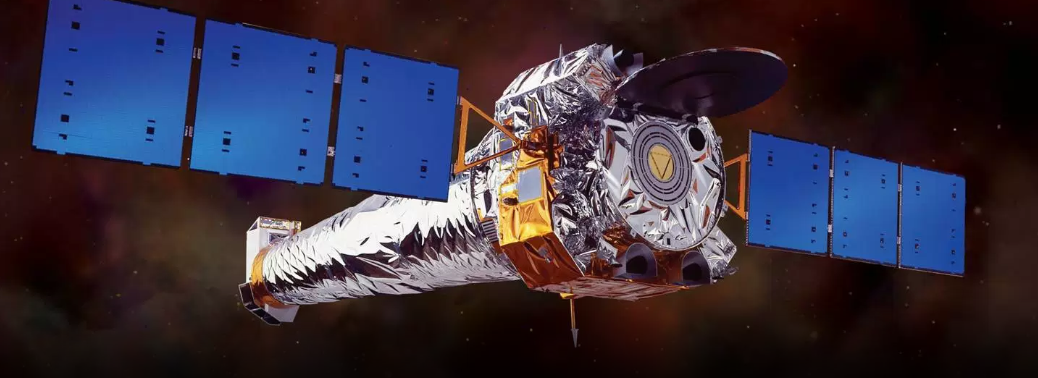
- The Chandra X-ray Observatory, which has been observing the universe in high-energy light since 1999, entered a protective “safe mode”. The cause of the safe mode transition (possibly involving a gyroscope) is under investigation.
About:
- During the safe mode, the observatory is put into a safe configuration, critical hardware is swapped to back-up units, the spacecraft points so that the solar panels get maximum sunlight, and the mirrors point away from the Sun.
- Analysis of available data indicates the transition to safe mode was normal behaviour for such an event. All systems functioned as expected and the scientific instruments are safe.
- Gyroscopes help spacecraft maintain proper orientation. If a faulty gyroscope is to blame for Chandra’s current plight, the observatory would be in good company: A gyroscope failure knocked NASA’s iconic Hubble Space Telescope into safe mode last week.
Safe mode:
- Safe mode is an operating mode of a modern spacecraft during which all non-essential systems are shut down and only essential functions such as thermal management, radio reception and attitude control are active.
- Safe mode is entered automatically upon the detection of a predefined operating condition or event that may indicate loss of control or damage to the spacecraft. Usually the trigger event is a system failure or detection of operating conditions considered dangerously out of the normal range.
- Cosmic rays penetrating spacecraft electrical systems can create false signals or commands and thus cause a trigger event.
- While in safe mode the preservation of the spacecraft is the highest priority. Typically, all non-essential systems, such as science instruments, are shut down. The spacecraft attempts to maintain orientation with respect to the Sun for illumination of solar panels and for thermal management.
Background:
- The Chandra X-ray Observatory previously known as the Advanced X-ray Astrophysics Facility is a Flagship-class space observatory launched by NASA on July 23, 1999.
- Chandra is one of the Great Observatories, along with the Hubble Space Telescope, Compton Gamma Ray Observatory (1991–2000), and the Spitzer Space Telescope.
- The telescope is named after the Nobel Prize-winning Indian-American astrophysicist Subrahmanyan Chandrasekhar.
- Its mission is similar to that of ESA’s XMM-Newton spacecraft, also launched in 1999.
- Chandra is sensitive to X-ray sources 100 times fainter than any previous X-ray telescope, enabled by the high angular resolution of its mirrors.
- Since the Earth’s atmosphere absorbs the vast majority of X-rays, they are not detectable from Earth-based telescopes therefore space-based telescopes are required to make these observations.
- Chandra focuses on the powerful X-ray emissions from violent cosmic phenomena such as supernovae and black holes.
- It is well beyond the original design lifetime of 5 years. In 2001, NASA extended its lifetime to 10 years. It is now well into its extended mission and is expected to continue carrying out forefront science for many years to come.
- It continues to work towards resuming science operations of the Hubble Space Telescope. On October 5, Hubble entered safe mode after one of the three gyroscopes (gyros) being used to point and steady the telescope failed.
- Gyroscopes help spacecraft maintain proper orientation.
JAPAN TO TEST MINI ‘SPACE ELEVATOR’
13, Sep 2018
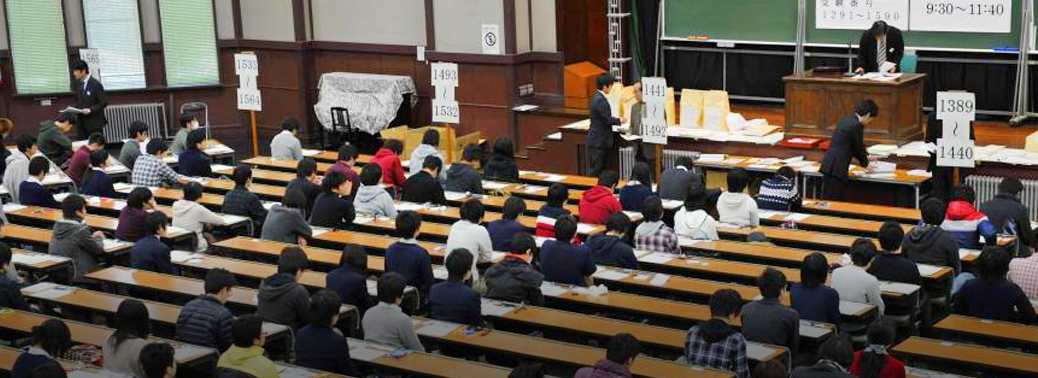
A Japanese team has developed a “space elevator” and will conduct a first trial this month, blasting off a miniature version on satellites to test the technology.
Mini Space Elevator:
- It’s the world’s first experiment to test travel between two mini satellites in space
- The test equipment, produced by researchers at Shizuoka University, will hitch a ride on an H-2B rocket being launched by Japan’s space agency
- The test involves a miniature elevator stand-in a box just 6 cm long, 3 cm wide, and 3 cm high.
- The mini-elevator will travel along the cable from a container in one of the satellites.
- If all goes well, it will provide proof of concept by moving along a 10-metre cable suspended in space between two mini satellites that will keep it taut.
- The movement of the motorised “elevator” box will be monitored with cameras in the satellites.
- It is still a far cry from the ultimate beam-me-up goals of the project, which builds on a long history of “space elevator” dreams.
- The idea was first proposed in 1895 by Russian scientist Konstantin Tsiolkovsky after he saw the Eiffel Tower in Paris.
- But technical barriers have always kept plans stuck at the conceptual stage.
- Japanese construction firm Obayashi, which is collaborating with the Shizuoka university project, is also exploring other ways to build its own space elevator to put tourists in space in 2050.
- it could use carbon nanotube technology, which is more than 20 times stronger than steel, to build a lift shaft about 96,000 km above the earth
INDIA -RUSSIA COLLABRATION ON GAGANYAAN
12, Sep 2018

- India has sought assistance from Russia in its manned space programme in the area of training the astronauts, life support systems and crew modules.
About:
- The talk of Russia assisting India in the manned space mission came up during the meeting in Moscow between external affairs minister Sushma Swaraj and Russia’s deputy prime minister for defence and space industry a week ago.
- A proposal was made about Russian specialists’ assistance in conducting various stages of selection of candidates for the flight, as well as (the candidates) passing a training course in Russia and assistance in the subsequent training of Indian astronauts in India,
- In 2015, India and Russia signed an agreement to pursue joint programmes in a few areas of space research. Indian Space Research Organisation (ISRO) and Russian Federal Space Agency (ROSCOSMOS) signed a new Memorandum of Understanding (MoU) on expansion of cooperation in the field of the exploration and use of outer space for peaceful purposes.
- This new MoU provides scope for developing joint activities in areas of mutual interest, including satellite navigation, launch vehicle development, critical technologies for human spaceflight programme, remote sensing of Earth, space science and planetary exploration, and use of ground space infrastructure.
- India will become the fourth country after Russia, US and China to send a human to space on its own, if it successfully completes the mission.
Gaganyaan:
- Gaganyaan is an Indian crewed orbital spacecraft intended to be the basis of the Indian Human Spaceflight Programme.
- The spacecraft is being designed to carry three people, and a planned upgraded version will be equipped with rendezvous and docking capability.
- In its maiden crewed mission, Indian Space Research Organisation’s largely autonomous 3.7-tonne capsule will orbit the Earth at 400 km (250 mi) altitude for up to seven days with a three-person crew on board. The crewed vehicle is planned to be launched on ISRO’s GSLV Mk III in 2022
International Co-operation:
- India has always recognised that space has dimension beyond national considerations, which can only be addressed along with international partners.
- Over the years, as ISRO has matured in experience and technological capabilities, the scope for cooperation has become multifaceted.
- ISRO has the benefit of International cooperation since inception. Establishment of Thumba Equatorial Rocket Launching Station (TERLS), conduct of Satellite Instructional Television Experiment (SITE) and Satellite Telecommunication Experiment Project (STEP), launches of Aryabhata, Bhaskara, Ariane Passenger Payload Experiment (APPLE), IRS-IA, IRS-IB satellites, INSAT series of satellites, Mission to Moon, Human Space flight Programme Initiatives, etc., have the components of international cooperation.
- ISRO is pursuing bilateral and multilateral relations with space agencies and space related bodies with the aim of building and strengthening existing ties between countries; taking up new scientific and technological challenges; refining space policies and defining international frameworks for exploitation and utilisation of outer space for peaceful purposes.
- Specifically, the developing countries look to India for assistance in building up their capabilities to derive benefits of space technology. The scope of international cooperation has become wider and diverse, as ISRO has made tremendous progress in recent time.
- The data products generated from recently launched OCEANSAT-2 and Scatter meter is made available globally in near-real-time for global applications through an arrangement with EUMETSAT.
- India continues to play active role in deliberation on Scientific and Technical and Legal sub-committees of the United Nations Committee on the Peaceful Uses of Outer Space (UN-COPUOS) and others.
ISRO-Russia:
- Russia has played an important role in India’s space journey, and space remains one of the key pillars of the strategic partnership between the two countries. Over the years India’s indigenous space programme has benefited from Russian technical and scientific assistance.
- The first man to travel to space, Russian cosmonaut Yuri Gagarin predicted a future collaboration between the two nations, back in 1961, when he spent 8 days in India. Two decades later, Rakesh Sharma made the nation proud, becoming the first Indian to travel to outer space, on board the Soyuz T-11 spacecraft with a Russian commander and a Russian flight engineer.
- India and Russia have a four-decade strong relationship in the field of space. The former Soviet Union launched India’s first two satellites, Aryabhata and Bhaskar, into orbit from Baikonur Cosmo drome. Aryabhata was launched on the Soviet launch vehicle Soyuz.
- Even today, both countries cooperate on lunar and Mars exploration missions. India will be using Russian isotope products in its lunar mission Chandrayaan-2, which will be launched in 2018.
NASA’s ICESAT- 2
11, Sep 2018

- NASA mission that will use a laser to track changing ice levels on Earth soared into space. Lifting ICESat-2 on a quest to explore the polar ice sheets of our constantly changing home planet.
About:
- The satellite will reveal new insights into the ice in the deep interior of Antarctica, which is area of mystery to scientists.
- The new laser will fire 10,000 times in one second, compared to the original ICE Sat which fired 40 times a second.
- Measurements will be taken every 2.3 feet (0.7 meters) along the satellite’s path.
- “The mission will gather enough data to estimate the annual elevation change in the Greenland and Antarctic ice sheets even if it’s as slight as four millimetres – the width of a No. 2 pencil.
- Importantly, the laser will measure the slope and height of the ice, not just the area it covers, also will allow ice sheet modelers to make better predictions of the future,
- It is launched in the background of urgent need of data about ice melt since global average temperatures have climbed year after year, with four of the hottest years in modern times all taking place from 2014-2017.
- The launch marks the first time in nearly a decade that NASA has had a tool in orbit to measure ice sheet surface elevation across the globe.
- The preceding mission, ICE Sat, launched in 2003 and ended in 2009.
- The first ICE Sat revealed that sea ice was thinning, and ice cover was disappearing from coastal areas in Greenland and Antarctica.
- In the intervening nine years, an aircraft mission called Operation Ice Bridge, has flown over the Arctic and Antarctic, taking height measurements of the changing ice.
- But a view from space especially with the latest technology should be far more precise.
LIGO-India
27, Aug 2018
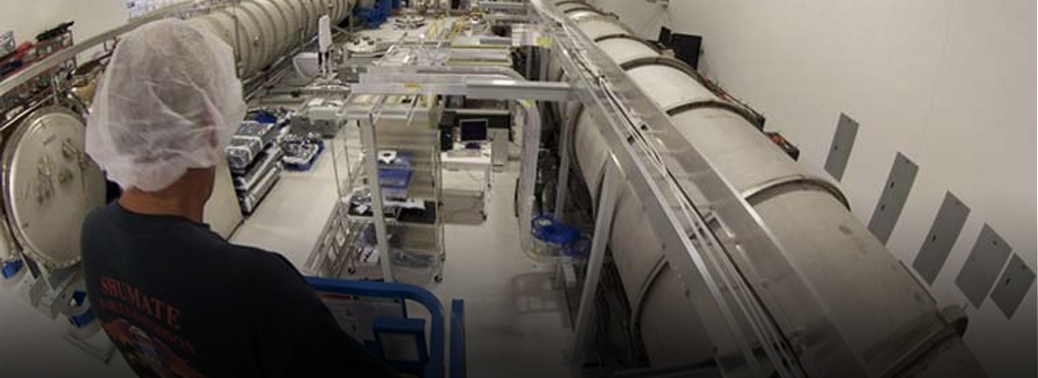
- The Environment Ministry has allowed scientists to test the suitability of land in Maharashtra’s Hingoli district to host the India wing of the ambitious Laser Interferometer Gravitational Wave Observatory (LIGO) project.
About:
- The first of its kind in Asia to study gravitational wave.
- The LIGO-India project is an international collaboration between the LIGO Laboratory and three lead institutions in the LIGO-India consortium: Institute of Plasma Research, Gandhinagar; IUCAA, Pune; and Raja Ramanna Centre for Advanced Technology, Indore.
- The proposed LIGO-India project aims to move one Advanced LIGO detector from Hanford to India.
- The LIGO-India consortium, made up of physicists from several institutes, had submitted a proposal to “prospect” 121 hectares of forest land in Dudhala village, Hingoli.
- The project, piloted by the Department of Atomic Energy (DAE) and Department of Science and Technology (DST), is expected to be ready by 2025.
Project:
- An astronomical observatory, the LIGO detector will increase the ability and accuracy of localizing gravitational wave sources in the sky.
- The project involves constructing a network of L-shaped arms, each four kilometres long, which can detect even the faintest ripples from cosmic explosions millions of light years away.
- The construction of such a large, sensitive device — there are only three of its kind in the world — requires an extremely flat surface.
Background:
- Gravitational waves were predicted by Albert Einstein a century ago as part of his theory of general relativity, but the first hard evidence of their existence came only in 2015, when two U.S. detectors found the first such signal.
- Gravitational waves are ripples in the otherwise tough, stiff fabric of spacetime produced by the most violent phenomena the cosmos can offer—things like exploding stars and collisions between ultra-dense neutron stars or merging black holes.
- These ripples would travel at the speed of light through the Universe, carrying with them information about their cataclysmic origins, as well as invaluable clues to the nature of gravity itself.
- The strongest sources of gravitational waves are among the enigmatic objects in our universe: black holes, neutron stars, supernovae, even the Big Bang.
- The LIGO facility consists of two identical L-shaped detectors in Washington state and Louisiana, each of which employs lasers and mirrors to measure the tiny changes in spacetime made by passing gravitational radiation.
- Known as interferometers, these high-tech underground stations do not rely on light in the sky like a telescope does, but instead sense vibrations in space and can pick up the “chirp” created by a gravitational wave.
- Extracting the information carried by the waves to address questions in both physics and astronomy depends on our ability to identify where the individual sources are on the sky. This requires a network of detectors spread widely over the Earth.
- LIGO operates two sites in the United States and collaborates with a similar detector in Italy (Virgo). Together they can triangulate sources over part of the sky. LIGO-India will enable scientists to locate sources over the entire sky.
- The discovery of gravitational waves earned three U.S. scientists the Nobel for physics in 2017.
Need of it:
- Gravitational waves are so hard to detect. By the time gravitational waves reach us from the distant events that spawn them, they distort spacetime by an utterly minuscule amount. The distortion is many times smaller than the width of a proton, one of the particles in an atom’s nucleus. Measuring such minute changes in length is pretty much impossible for most instruments.
Significance:
- Previously, scientists have relied primarily on observations with electromagnetic radiation (visible light, x-rays, radio waves, microwaves, etc.) to learn about and understand objects and phenomena in the Universe.
- But it is completely different phenomenon, it carry information about cosmic objects and events that is not carried by usual electromagnetic radiation .
- Detecting and analysing the information carried by gravitational waves will allow us to observe the Universe in a way never before possible.
- It will open up a new window of study on the Universe, give us a deeper understanding of these cataclysmic events, and usher in cutting-edge research in physics, astronomy, and astrophysics.
- More importantly, since gravitational waves interact very weakly with matter (unlike electromagnetic radiation), they travel through the Universe virtually unimpeded giving us a clear view of the gravitational-wave Universe.
- Measuring the gravitational-wave background will allow us to study populations of black holes at vast distances.
- Hosting such a detector in India will improve the odds of detecting more such phenomena. The first detection of gravitational waves will be one of the highest profile scientific discoveries of our time. Engaging the Indian scientific community in this quest will raise the visibility and appeal of experimental science in India.
- The presence of a world-leading facility in India can be used to attract students and inspire them to pursue technical careers.
- The physical measurements required for gravitational wave detection are arguably the most precise ever made, and they involve cutting edge technologies that have many non-military applications.
- The LIGO Laboratory will provide the hardware for a complete LIGO interferometer, technical data on its design, installation and commissioning, training and assistance with installation and commissioning, and the requirements and designs for the necessary infrastructure
- The LIGO project operates three gravitational-wave (GW) detectors. Two are at Hanford in the State of Washington, north-western USA, and one is at Livingston in Louisiana, south-eastern USA.
- However, there are more than 100,000 gravitational wave events every year too faint for LIGO and Virgo to unambiguously detect due to less coverage. Thus by establishing LIGO in India makes it possible to detect it.
Gaganyaan
26, Aug 2018

- Gaganyaan, the human space flight Programme green-flagged and set for 2022. State-run Indian Space Research Organisation (ISRO) will fly an Indian astronaut into space for the first time by 2022.
About:
- Indian Space Research Organisation (ISRO) to develop and launch a two-person crew to low Earth orbit.
- Most of the critical technologies and hardware required for the project are ready or have been demonstrated by its centres.
- When it achieves the mission, India would be the fourth nation to circle Earth after the Soviets, the Americans and the Chinese.
- Previously in 1984, Rakesh Sharma became the first Indian cosmonaut to fly into space on-board Russian Soyuz spacecraft.
Timeline for Human Space Programme:
- ISRO revealed the first germ of an HSP in November 2004 and got incremental funds for supporting projects over the next few years.
- In the last few years, it did a lot of groundwork as part of R&D at our centres. ISRO have developed most of the critical technologies needed for a human mission.
- It could not go ahead mainly because the GSLV Mark III vehicle was not ready until last year.
- ISRO demonstrated the flight of a crew module and its re-entry in 2014.
- On July 5 this year, ISRO conducted an experiment for emergency escape of astronauts called the Pad Abort Test. It will be repeated at higher distances.
- The rest of the technologies are getting ready and will be realised in time.
- The most critical elements of the human mission are the Environment Control and Life Support Systems that make the crew capsule liveable and the flight safe for the astronauts, food and hygiene are other aspects. These technologies are getting ready while space suits are being developed at ISRO.
- ISRO will set up a full-fledged training facility in Bangalore for training Vyomanauts. centre will train the selected Vyomanauts in rescue and recovery operations, operate in zero gravity environment, and monitoring of the radiation environment.
- ISRO is planning to build a third launch pad at Sriharikota for manned missions with extra facilities like entry into the crew capsule and an escape chute.
Positive:
- Describing it more as a national mission than ISRO’s alone, It would raise scientific and technological temper across the country and inspire youngsters.
- Manned flights is in keeping with India’s emergence as an economic and technological power house.
- Space research is truly inter-disciplinary and has enabled true innovations at the intersection of multiple areas of science and engineering.so by launching manned mission will make multiplier effect in other field.
- Human spaceflight has enabled the emergence of new research: physical and life sciences in space.in the area of fundamental and applied research.
- By exploiting the unique conditions in space, particularly microgravity, scientists have begun to examine many fundamental processes in physics, chemistry and biology that would normally be masked by Earth’s gravity.
- Experiments that have flown on the Space Shuttle and on space stations have already contributed to the development of new theories and the discovery of new phenomena. Such fundamental research offers good prospects for applications that will benefit society as a whole, notably in the areas of biotechnology, new materials, combustion, fluid physics and medical science.
- This will further improve scientific knowledge and create new industrial applications for the benefit of society
- But it is fantasy of competing with the economically advanced nations in the exploration of the moon or the planets or manned spaceflight. we must develop advanced technologies to the real problems of man and society which we find in our country.
Chandrayan – I
26, Aug 2018
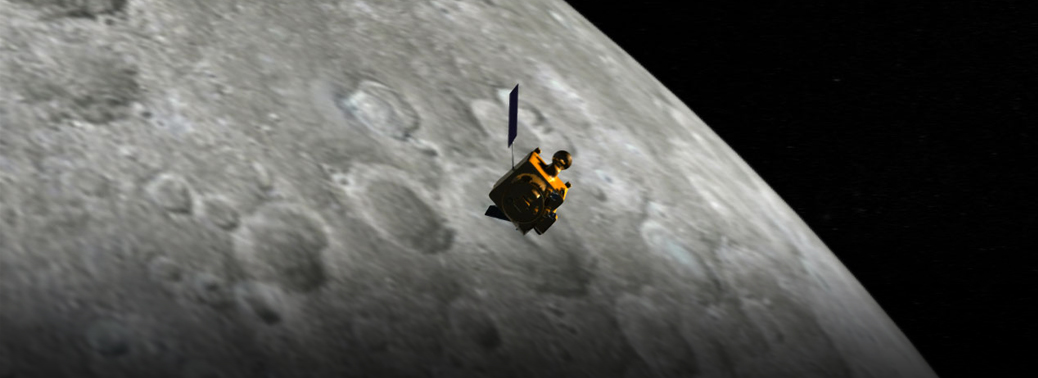
- The first Indian planetary mission to moon, Chandrayaan-1 with a suite of Indian
- And International payloads on board, collected very significant data over its mission duration of close to one year.
- This mission was a huge success.
- The observations made by Chandrayan – 1 are as follows
- Discovery of hydroxyl (-OH ) and water molecule in sunlit lunar surface region around the poles
- exposure of large anorthositic blocks confirming the global lunar magma hypothesis
- signature of sub surface ice layers in permanently shadowed regions near the lunar north pole evidence for a new refractory rock type
- mapping of reflected lunar neutral atoms and identification of mini-magnetosphere
- mapping of reflected lunar neutral atoms and identification of mini-magnetosphere
- preserved lava tube that may provide site for future human habitation.
New Radio Galaxy Discovered Using Indian Telescope
25, Aug 2018
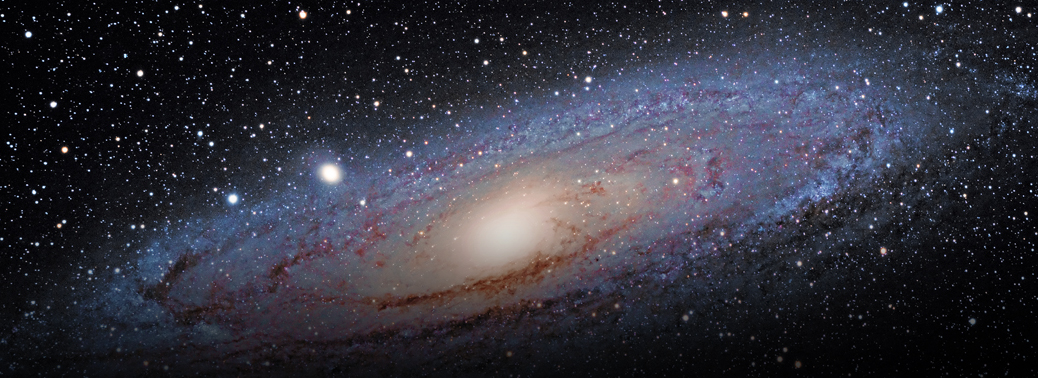
Why in news?
- Astronomers have made use of the Indian telescope “Giant Metrewave Radio Telescope” to discover the most distant radio galaxy ever known.
The Radio galaxy:
- Radio galaxies are very rare objects in the universe. They are colossal galaxies with a supermassive black hole in their centre that actively accretes gas and dust from its surroundings.
- It is located at a distance of 12 billion light-years.
- The radio galaxy belongs to a time when the universe was only seven per cent of its current age.
- This activity initiates the launch of high-energy jet streams, which are capable of accelerating charged particles around the supermassive black hole to almost the speed of light.
Significance:
- The discovery of such galaxies at extremely large distances is important for our understanding of the formation and evolution of galaxies.
- The researchers are of the view that analysing and studying these galaxies at length also reveals the formation of primordial black holes.
- These black holes have driven and regulated the growth of galaxies.
Giant Metrewave Radio Telescope:
- National Centre for Radio Astrophysics has set up a unique facility for radio astronomical research using the metre wavelengths range of the radio spectrum, known as the Giant Metrewave Radio Telescope (GMRT).
- It is located at a site about 80 km north of Pune. GMRT consists of 30 fully steerable gigantic parabolic dishes of 45m diameter each spread over distances of upto 25 km.
- GMRT is one of the most challenging experimental programmes in basic sciences undertaken by Indian scientists and engineers.
- GMRT is a very versatile instrument for investigating a variety of radio astrophysical problems ranging from nearby Solar system to the edge of observable Universe.
Chandrayan – 2
23, Aug 2018
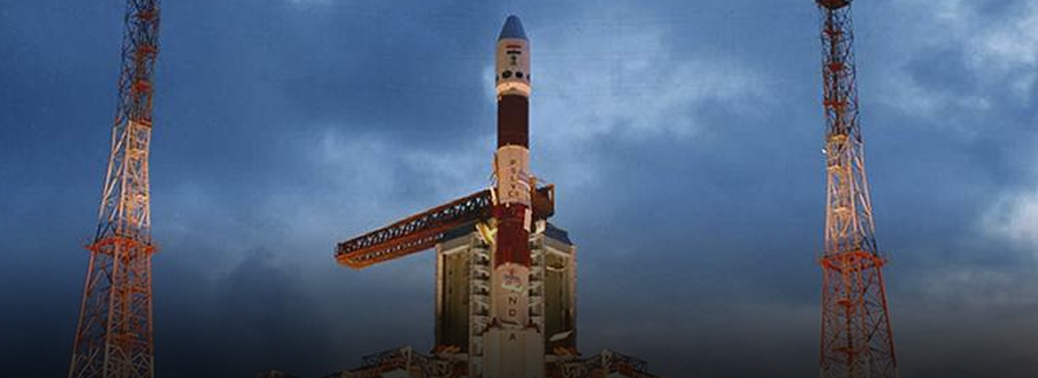
- India’s second mission to the Moon is a totally indigenous mission comprising of an Orbiter, Lander and Rover.
- The payloads will collect scientific information on lunar topography, mineralogy, elemental abundance, lunar exosphere and signatures of hydroxyl and water-ice.
- Chandrayaan-2 will be ISRO’s first time attempt to land a rover, on the Moon. The rover, will be made to land near the yet-unexplored south pole of the moon.
- It is also ISRO’s first mission to land on any celestial body.
Orbiter:
- The orbiter is physically similar to Chandrayaan-1.
- It is three-axis stabilized with reaction wheels.
- The orbiter carries five science instruments and two supporting instruments.
Terrain Mapping Camera 2 (TMC-2):
- It will perform 3D mapping of the lunar surface using two cameras.
Collimated Large Array Soft X-ray Spectrometer (CLASS):
- It will map abundance of major rock-forming elements on the Moon including Mg, Al, Si, Ca, Ti, and Fe.
- Assisting it is the Solar X-ray Monitor (XSM), which measures solar x-ray emission.
Chandra’s Atmospheric Composition Explorer(ChACE-2)
- It is a neutral mass spectrometer that is based upon CHACE
Synthetic Aperture Radar (SAR)
- It will perform radar mapping of the surface in both L and S bands of the radio spectrum.
- It has heritage from MiniSAR on Chandrayaan-1 but will be the first L-band radar mapper to orbit the Moon.
Imaging Infra-Red Spectrometer (IIRS)
- It is sensitive to light with wavelengths between 0.8 and 5 microns and has the specific goal of mapping the abundance of hydroxl ions and molecular water.
Orbiter High Resolution Camera (OHRC):
- It will perform high-resolution imaging of the landing site prior to the lander mission.
Lander:
- The lander will have a throttleable engine for performing a soft landing.
- A special radar altimeter will help the Lander orient itself while it lands on the moon surface safely.
Rover:
- The rover has been designed in such a way that it will have the power to spend a lunar day or 14 Earth days on the moon’s surface and walk up to 150-200 metres.
- It will do several experiments and on-site chemical analysis of the surface.
- The rover will then send data and images of the lunar surface back to the Earth through the orbiter within 15 minutes.
- After spending 14 earth days, the rover will go into sleep mode.
- ISRO is hopeful that the rover will again come alive whenever that part of the moon (where the rover will land) gets sunlight and recharges the rover’s solar cells.
Significance of Moon:
- Scientists and space planners have long acknowledged that extended human residence on the Moon would be greatly aided by the use of local resources.
- Lunar soil could be used for shielding habitats against the radiation environment.
- More advanced uses of lunar resources are clearly possible, but how advantageous they would be is presently unknown.
- Most lunar rocks are about 40 percent oxygen, and chemical and electrochemical methods for extracting it have been demonstrated in laboratories.
- The solar windhas implanted hydrogen, helium, and other elements in the surfaces of fine grains of lunar soil. Though their amounts are small they constitute about 100 parts per million in the soil they may someday serve as a resource.
- Helium-3, a helium isotope that is rare on Earth and that has been deposited on the Moon by the solar wind, has been proposed as a fuel for nuclear fusion reactors in the future.
- One natural resource uniquely available on the Moon is its polar environment. Water molecules are found in their strongest concentrations at the lunar poles.
Chandrayan – I
- The first Indian planetary mission to moon, Chandrayaan-1 with a suite of Indian
- And International payloads on board, collected very significant data over its mission duration of close to one year.
- This mission was a huge success.
- The observations made by Chandrayan – 1 are as follows
- Discovery of hydroxyl (-OH ) and water molecule in sunlit lunar surface region around the poles
- exposure of large anorthositic blocks confirming the global lunar magma hypothesis
- signature of sub surface ice layers in permanently shadowed regions near the lunar north pole evidence for a new refractory rock type
- mapping of reflected lunar neutral atoms and identification of mini-magnetosphere
- mapping of reflected lunar neutral atoms and identification of mini-magnetosphere
- preserved lava tube that may provide site for future human habitation.
ISRO Set to Launch its Tv Channel
22, Aug 2018
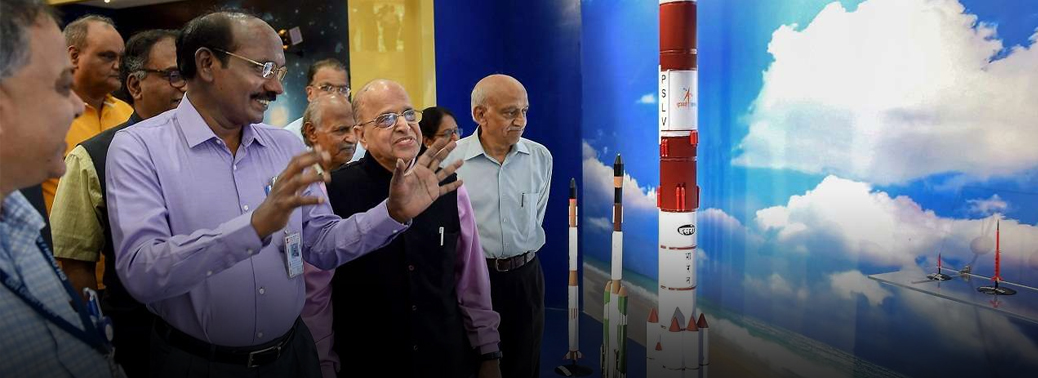
India will soon launch a dedicated space and science television channel to make their benefits reach people across the country
ISRO TV:
- The channel will telecast science programmes and highlight the benefits of the space agency’s missions in regional languages as well as English, so that it reaches people across the country. This makes people aware of the benefits of the space programme.
- The space agency also aims to develop scientific temper among India’s children and youth through this channel.
Capacity Building:
- ISRO will also be setting up a module for students from Classes 8-10 to be trained at the space agency for a month.
- In order to inculcate scientific temper among students, ISRO officials will mentor them for 25-30 days and allow them to visit ISRO’s labs and launch facilities.
- The students will be allowed to make their own small satellites at the end of the programme.
- ISRO will also be opening up its spaceport at Sriharikota in Andhra Pradesh to public.
- The Indian public will soon be able to pay visits to the launch facility at Sriharikota on the lines of American space agency NASA.
European Wind Survey Satellite Launched
18, Aug 2018
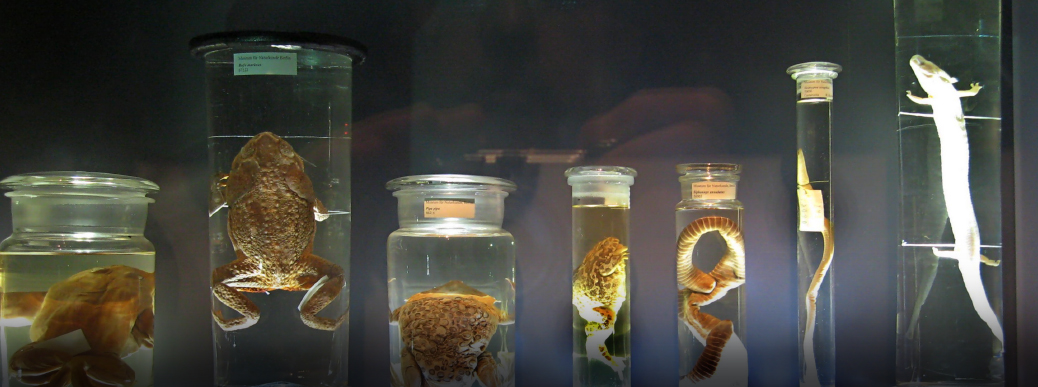
- Europe put a satellite into orbit which will track global winds, allowing for improved weather forecasting,
- The “Aeolus” satellite named after the guardian of wind in Greek mythology will be placed at an altitude of 320 kilometres (200 miles) above the Earth.
- It is part of the Copernicus project, a joint initiative of the European Union and the European Space Agency (ESA) to track environmental damage and aid disaster relief operations.
- Aeolus is equipped with a single instrument: a Doppler wind lidar an advanced laser system designed to accurately measure global wind patterns from space.
- This mission will thus provide much-needed data to improve the quality of weather forecasting as well as contributing to long-term climate research.
- It described the satellite as the world’s first space mission to acquire profiles of Earth’s wind on a global scale.
- The Doppler lidar transmits short, powerful pulses of laser light toward Earth in the ultraviolet spectrum.
- Particles in the air moisture, dust, gases scatter a small fraction of that light energy back to the transceiver, where it is collected and recorded.
- The delay between the outgoing pulse and the so-called backscattered signal reveals the wind’s direction, speed and distance travelled.
- Once per orbit, data is downloaded to a ground station in Svalbard, Norway.
Blood Moon
27, Jul 2018

The month of July is set to witness a rare astronomical spectacle as a blood moon, the second of the year, will appear on the intermediary night of July 27-28.
The ‘Marathon’ Eclipse:
According to space experts, the eclipse will last one hour and 43 minutes – nearly 40 minutes longer than the January 31 Super Blue Blood Moon.
Why will the moon turn red?
- The blood moon, or the ‘full buck moon’ as it is being called, will turn blood red during the eclipse due to the way light bends around Earth’s atmosphere.
- During a blood moon, the moon takes on a deep red to orange colour, rather than completely disappearing when it passes through the shadow cast by Earth.
- This bizarre effect known as ‘Rayleigh scattering’ filters out bands of green and violet light in the atmosphere during an eclipse.
Why will this lunar eclipse be longer?
- The full buck moon will last longer than normal as it will pass almost directly through Earth’s shadow during the eclipse.
- At the same time, it will be at the maximum distant point from earth. Therefore, it will take longer to cross Earth’s shadow.
Rayleigh scattering:
The dispersion of electromagnetic Radiation by particles that have a radius less than approximately 1/10 the wavelength of the radiation. The angle through which sunlight in the atmosphere is scattered by molecules of the constituent gases varies inversely as the fourth power of the wavelength; hence, blue light, which is at the short wavelength end of the visible spectrum, will be scattered much more strongly than will the long wavelength red light.
Parker Solar Probe
12, Jul 2018

NASA’s Parker Solar Probe a seven-year mission aiming to get the closest ever to the sun has got its revolutionary heat shield permanently attached to the spacecraft.
That heat shield should, in theory, prevent the space craft from being burned by the sun made of reinforced carbon-carbon composite, which is designed to withstand temperatures outside the spacecraft nearly 2,500 F (1,377 C).
About Mission:
It is a planned NASA’s robotic spacecraft to probe the outer corona of the sun. Humanity’s first mission to the Sun’s corona, on its journey to explore the Sun’s atmosphere and the solar wind. It will probe
- Determine the structure and dynamics of the magnetic field at the sources of solar wind.
- Trace the flow of energy that heats the corona and accelerates the solar wind.
- Determine what mechanisms accelerate and transport energetic particles.
- Explore dusty plasma near the Sun and its influence on solar wind and solar energetic particles formation.
It will also hold more than 1.1 million names submitted by the public to go to the Sun. Parker Solar Probe is powered by two solar arrays. Unlike solar-powered missions that operate far from the Sun and are focused only on generating power from it, we need to manage the power generated along with the substantial heat that comes from being so close to the Sun.
Significance:
It will also make critical contributions to our ability to forecast changes in Earth’s space environment that affect life and technology on Earth. Parker Solar Probe will employ a combination of in situ measurements and imaging to revolutionize our understanding of the corona and expand our knowledge of the origin and evolution of the solar wind.
Sun’s structure:
- About 73% of the Sun’s mass is hydrogen, and another 25% is helium and 2% other gasses.
- The Sun’s layers are different from each other, and each plays a part in producing the energy that the Sun ultimately emits
Core:
The site of thermonuclear fusion, which is the engine of the sun. Temperatures here approach 15,000,000 K and pressures exceed 250,000,000,000 atmospheres. The core makes up 50% of the sun’s mass but only 1/64th of the Sun’s volume. All of the energy that emits from the Sun is produced in the core.
Radiative Zone:
The region where energy from the core begins its journey outward, but the material is too dense and hot for heat transfer, and therefore the energy radiates out by creating alternating parallel magnetic and electrical fields, thus moving outward as electromagnetic radiation.
Convective Zone:
A region of less dense material, the energy is primarily carried toward the surface by heat convection currents which carry hot gases toward the surface before they cool and fall back inward
The Sun doesn’t behave the same way all the time. It goes through phases of its own solar cycle. Approximately every 11 years, the Sun’s geographic poles change their magnetic polarity. When this happens, the Sun’s photosphere, chromosphere and corona undergo changes from quiet and calm to violently active. The height of the Sun’s activity, known as solar maximum, is a time of solar storms: sunspots, solar flares and coronal mass ejections. These are caused by irregularities in the Sun’s magnetic field and can release huge amounts of energy and particles, some of which reach us here on Earth. This space weather can damage satellites, corrode pipelines and affect power grids.
Why study Sun:
- The Sun is the only star we can study up close. By studying this star we live with, we learn more about stars throughout the universe.
- The Sun is a source of light and heat for life on Earth. The more we know about it, the more we can understand how life on Earth developed.
- The Sun also affects Earth in less familiar ways. It is the source of the solar wind; a flow of ionized gases from the Sun that streams past Earth at speeds of more than 500 km per second (a million miles per hour).
- Disturbances in the solar wind shake Earth’s magnetic field and pump energy into the radiation belts, part of a set of changes in near-Earth space known as space weather.
- Space weather can change the orbits of satellites, shorten their lifetimes, or interfere with onboard electronics. The more we learn about what causes space weather – and how to predict it – the more we can protect the satellites we depend on.
- The solar wind also fills up much of the solar system, dominating the space environment far past Earth. As we send spacecraft and astronauts further and further from home, we must understand this space environment just as early seafarers needed to understand the ocean.






